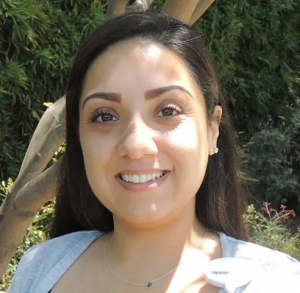
2023
Lucy Allen, Lorna Allen, Siobhan B Carr , Gwyneth Davies , Damian Downey , Marie Egan , Julian T Forton , Robert Gray , Charles Haworth , Alexander Horsley, Alan R Smyth , Kevin W Southern , Jane C Davies. Future therapies for cystic fibrosis. Review Nat Commun. 2023 Feb 8;14(1):693. doi: 10.1038/s41467-023-36244-2. Free PMC article pubmed.ncbi.nlm.nih.gov/36755044/

Fig. 1 Lucy Allen cystic fibrosis.org.uk
We are currently witnessing transformative change for people with cystic fibrosis with the introduction of small molecule, mutation-specific drugs capable of restoring function of the defective protein, cystic fibrosis transmembrane conductance regulator (CFTR). However, despite being a single gene disorder, there are multiple cystic fibrosis-causing genetic variants; mutation-specific drugs are not suitable for all genetic variants and also do not correct all the multisystem clinical manifestations of the disease. For many, there will remain a need for improved treatments. Those patients with gene variants responsive to CFTR modulators may have found these therapies to be transformational; research is now focusing on safely reducing the burden of symptom-directed treatment. However, modulators are not available in all parts of the globe, an issue which is further widening existing health inequalities. For patients who are not suitable for- or do not have access to- modulator drugs, alternative approaches are progressing through the trials pipeline. There will be challenges encountered in design and implementation of these trials, for which the established global CF infrastructure is a major advantage. Here, the Cystic Fibrosis National Research Strategy Group of the UK NIHR Respiratory Translational Research Collaboration looks to the future of cystic fibrosis therapies and consider priorities for future research and development.
Dr Lucy Allen (fig.1) is Director of Research and Health Care Data at the Cystic Fibrosis Trust, London, UK.
Anne M Akkerman-Nijland, Bart L Rottier, Joanne Holstein, Rik L J Winter, Daniel J Touw, Onno W Akkerman, Gerard H Koppelman. Eradication of Burkholderia cepacia complex in cystic fibrosis patients with inhalation of amiloride and tobramycin combined with oral cotrimoxazole. ERJ Open Res. 2023 Jun 26;9(3):00055-2023. doi: 10.1183/23120541.00055-2023. eCollection 2023 May.37377654 Free PMC article pubmed.ncbi.nlm.nih.gov/37377654/

Fig. 2 Anne M Akkerman-Nijland UMCG
Details in the Free PMC article
This case series suggests that successful eradication therapy of BCC in cystic fibrosis can be done with a combination of inhaled and oral medication, which in many cases may eliminate the need for intensive treatment with intravenous antibiotics.
Dr Anne M Akkerman-Nijland (fig. 2) is at the University of Groningen, University Medical Center Groningen, Department of Pediatric Pulmonology and Pediatric Allergology, Beatrix Children’s Hospital, University of Groningen, Groningen, the Netherlands and University of Groningen, University Medical Center Groningen, Groningen Research Institute for Asthma and COPD, Groningen, the Netherlands.
Meliksah Arslan, Sarah Chalmers, Kelly Rentfrow Janelle M Olson , Vicki Dean , Mark E Wylam , Nadir Demirel. Suicide attempts in adolescents with cystic fibrosis on Elexacaftor/Tezacaftor/Ivacaftor therapy. Case Reports J Cyst Fibros. 2023 Feb 7;S1569-1993(23)00023-1. doi: 10.1016/j.jcf.2023.01.015. Online ahead of print. pubmed.ncbi.nlm.nih.gov/36759252/

Fig 3 Meliksah Arslan
Instagram
Elexacaftor/Tezacaftor/Ivacaftor (ETI) is a recently approved cystic fibrosis (CF) transmembrane conductance regulator modulator therapy that has shown promising clinical and laboratory improvements on multiple organ systems in people with CF (pwCF). While original clinical trials found little to no effect on depression and anxiety, many post-marketing reports have suggested that ETI may be associated with adverse mental health effects. Here we report on two pwCF with adverse mental health effects shortly after starting ETI. Although many factors such as the burden of living with a chronic disease or widespread effects of the Covid-19 pandemic may have contributed to these events, similar reports have led to mounting concern that ETI may be the cause of such events.
Regular mental health screening before the initiation of ETI and monitoring for signs and symptoms of mental diseases afterward should be a routine part of care, given the gravity of possible outcomes.
Meliksah Arslan (fig 3) is at the Marmara University School of Medicine, Istanbul, Turkey.
Meliksah Arslan , Zeynep Bahadir, Matthew L Basiaga, Sarah J Chalmers, Nadir Demirel. A pediatric cystic fibrosis arthropathy case who responded to Elexacaftor/Tezacaftor/Ivacaftor therapy. Case Reports J Cyst Fibros
. 2023 Sep 12;S1569-1993(23)00881-0. doi: 10.1016/j.jcf.2023.08.012. Online ahead of print pubmed.ncbi.nlm.nih.gov/37709627/
Cystic fibrosis arthropathy (CFA) is a transient, intermittent form of arthritis that cannot be associated with any other disease other than CF thus making CFA a diagnosis of exclusion. NSAIDs, short-term intermittent splinting, glucocorticoids, and disease-modifying anti-rheumatic drugs are treatment options for CFA. Currently, there is no consensus on how to best treat CFA. Diagnosis and treatment of CFA remain a challenge for physicians and people with CF. The newest CFTR modulator therapy, elexacaftor/tezacaftor/ivacaftor (ETI), was approved by the FDA recently for children over the age of 6 with at least one Phe508del allele in the CFTR gene.
Multiple clinical benefits of ETI in pulmonary functions and overall disease burden have been reported since its approval, however, the data on the musculoskeletal therapeutic benefits of ETI has been limited.
In this report, we present a 7-year-old female with CF whose CFA symptoms resolved after starting ETI therapy.
Meliksah Arslan (fig. 3 above ) is at the Marmara University School of Medicine, Istanbul, Turkey.
Moayad Alshehri, Kathleen J Ramos, Jenna Sykes, Xiayi Ma, Sanja Stanojevic, Bradley S Quon, Bruce C Marshall, Elizabeth Cromwel , Joshua S Ostrenga , Albert Faro, Alexander Elbert, Jonathan Todd, Cecilia Chaparro, Christopher H Goss , Anne L Stephenson. Cystic fibrosis survival outcomes following second lung transplant: The north American experience. Clin Transplant. 2023 Aug 10;e15097. doi: 10.1111/ctr.15097. Online ahead of print. pubmed.ncbi.nlm.nih.gov/37563332/

Fig.4 Moayad Alshehri
LinkedIn
Introduction: Re-transplant is an option for those who develop end-stage lung disease due to rejection; however, little data exist following re-transplantation in cystic fibrosis (CF).
Methods: Data from the Canadian CF Registry and US CF Foundation Patient Registry supplemented with data from United Network for Organ Sharing were used. Individuals who underwent a 2nd lung transplant between 2005 and 2019 were included. The Kaplan-Meier method was used to estimate the probability of survival post-second transplant at 1, 3, and 5-years.
Results: Of those people who were waitlisted for a second transplant (N = 818), a total of 254 (31%) died waiting, 395 (48%) were transplanted and 169 (21%) people were alive on the waitlist. Median survival time after 2nd lung transplant was 3.3 years (95% CI: 2.8-4.1). The 1-, 3- and 5-year survival rates were 77.4% (95% CI: 73.1-82%), 52% (95% CI: 46.7-58%) and 39.4% (95% CI: 34.1-45.6%).
Conclusions: Survival following second lung transplant in CF patients is lower than estimates following the first transplant. Over half of subjects who are potentially eligible for a second transplant die without receiving a second organ. The authors suggest this warrants further investigation.
Dr Moayad Alshehri (fig. 4) is in the Department of Respirology, St. Michael’s Hospital, Toronto, Ontario, Canada and Unit of Pulmonology, Internal Medicine Department, King Saud University, Riyadh, Saudi Arabia.
Mafalda Bacalhau, Filipa C Ferreira, Arthur Kmit, Felipe R Souza, Verônica D da Silva, André S Pimentel, Margarida D Amaral, Camilla D Buarque, Miquéias Lopes-Pacheco. Identification of novel F508del-CFTR traffic correctors among triazole derivatives. Eur J Pharmacol. 2023 Jan 5;938:175396. doi: 10.1016/j.ejphar.2022.175396. Epub 2022 Nov 19. Free article pubmed.ncbi.nlm.nih.gov/36410419/

Fig. 5 Mafalda Bacalhau Linkedin
The most prevalent cystic fibrosis (CF)-causing mutation – F508del – impairs the folding of CFTR protein, resulting in its defective trafficking and premature degradation. Small molecules termed correctors may rescue F508del-CFTR and therefore constitute promising pharmacotherapies acting on the fundamental cause of the disease. Here, we screened a collection of triazole compounds to identify novel F508del-CFTR correctors. The functional primary screen identified four hit compounds (LSO-18, LSO-24, LSO-28, and LSO-39), which were further validated and demonstrated to rescue F508del-CFTR processing, plasma membrane trafficking, and function. To interrogate their mechanism of action (MoA), we examined their additivity to the clinically approved drugs VX-661 and VX-445, low temperature, and genetic revertants of F508del-CFTR. Rescue of F508del-CFTR processing and function by LSO-18, LSO-24, and LSO-28, but not by LSO-39, was additive to VX-661, whereas LSO-28 and LSO-39, but not LSO-18 nor LSO-24, were additive to VX-445. All compounds under investigation demonstrated additive rescue of F508del-CFTR processing and function to low temperature as well as to rescue by genetic revertants G550E and 4RK. Nevertheless, none of these compounds was able to rescue processing nor function of DD/AA-CFTR, and LSO-39 (similarly to VX-661) exhibited no additivity to genetic revertant R1070W. From these findings, we suggest that LSO-39 (like VX-661) has a putative binding site at the NBD1:ICL4 interface, LSO-18 and LSO-24 seem to share the MoA with VX-445, and LSO-28 appears to act by a different MoA. Altogether, these findings represent an encouraging starting point to further exploit this chemical series for the development of novel CFTR correctors.
Dr Mafalda Bacalhau (fig 5) is at Biosystems& Integrative Sciences Institute (BioISI), Faculty of Sciences, University of Lisbon, Lisbon, Portugal
Baldwin K., McElroy BarkerE., Carayannopoulos M, Farrell PM. , Zanni R. , Thomas F Scanlin TF. Severe lung disease in children with cystic fibrosis missed in newborn screening. Pediatric Pulmonology 2024; 59: 163-168. pubmed.ncbi.nlm.nih.gov/37888495 Full article via PubMed link
To strengthen the arguments for quality improvement in New Jersey’s CF NBS program, we reviewed and evaluated false negative cases to determine the potential extent of preventable patient suffering as a consequence of delayed diagnoses
Five children with CF who had false negative screening results were studied in detail. In each case there was a different cause of the negative screening results. They all had clinically significant/severe lung disease, ranging from chronic cough with CF pathogens on respiratory culture at a young age to respiratory failure
This case series highlights the consequences of false negative screening results, which served as the impetus to upgrade New Jersey’s CF NBS algorithm. Implemented changes include lowering the IRT cutoff to 70 ng/mL and expanding to a 139 variant CFTR panel. In 2023, a floating IRT cutoff is anticipated to be implemented.
Christina J Bathgate, Emily Muther , Anna M Georgiopoulos, Beth Smith 4, Laura Tillman, Sonia Graziano, Marieke Verkleij, Paula Lomas 8, Alexandra Quittner. Positive and negative impacts of elexacaftor/tezacaftor/ivacaftor: Healthcare providers’ observations across US centers.Pediatr Pulmonol
. 2023 Jun 2. doi: 10.1002/ppul.26527. Online ahead of print. pubmed.ncbi.nlm.nih.gov/37265418/

Fig. 6 Christina Bathgate National Jewish Health
Background: Elexacaftor/tezacaftor/ivacaftor (ETI) has been associated with unprecedented clinical improvements, transforming the management of cystic fibrosis (CF). However, side effects with implications for safety and well-being have been reported, including neuropsychiatric changes. This study aimed to better characterize the emerging positive and negative impacts of ETI.
Methods: The Cystic Fibrosis Foundation’s Mental Health Advisory Committee distributed a 26-item survey to US CF care teams to assess clinician observations of patient-reported experiences with ETI. Survey responses measured the prevalence of these effects in five domains: (1) positive physical and psychological effects, (2) sleep difficulties, (3) cognitive difficulties, (4) worsening mental health, and (5) concerns about the future and finances.
Results: Seventy-five healthcare providers responded from a pediatric, adult, and combined centers. Positive physical effects of ETI and increased optimism were reported in the upper quartiles (50%-100%) and rated as having a significant impact on daily functioning. Sleep and cognitive difficulties were reported in 1%-24%, with slight impacts on functioning, and psychological symptoms (e.g., increased stress, depression, anxiety) and new psychiatric medications were reported in 1%-24%, with moderate impacts. Concerns about the future were reported in 1%-24%, with minimal impacts.
Conclusion: Across US centers, providers most often observed positive physical effects of ETI. However, a variety of negative side effects were also reported, including sleep disruptions and worsening psychological functioning, which should be systematically monitored by CF teams. These national-level data are a first step in evaluating the prevalence and consequences of these side effects and can directly inform future studies
Dr Christina Bathgate (fig 6) is a psychologist at the .Department of Medicine, National Jewish Health, Denver, Colorado, USA.
Julian Berges, Simon Y Graeber, Susanne Hämmerling, Yin Yu, Arne Krümpelmann, Mirjam Stahl, Stephanie Hirtz, Heike Scheuermann, Marcus A Mall, Olaf Sommerburg. Effects of lumacaftor-ivacaftor therapy on cystic fibrosis transmembrane conductance regulator function in F508del homozygous patients with cystic fibrosis aged 2-11 years. Front Pharmacol. 2023 May 30;14:1188051. doi: 10.3389/fphar.2023.1188051. eCollection 2023.Free PMC article pubmed.ncbi.nlm.nih.gov/37324488/

Fig 7 Julian Berges. UniversitatsklinikumHeidelberg
Rationale: Lumacaftor/ivacaftor was approved for the treatment of patients with cystic fibrosis who are homozygous for F508del aged 2 years and older following positive results from phase three trials. However, the improvement in CFTR function associated with lumacaftor/ivacaftor has only been studied in patients over 12 years of age, while the rescue potential in younger children is unknown.
Methods: In a prospective study, we aimed to evaluate the effect of lumacaftor/ivacaftor on the CFTR biomarkers sweat chloride concentration and intestinal current measurement as well as clinical outcome parameters in F508del homozygous CF patients 2-11 years before and 8-16 weeks after treatment initiation. Results: A total of 13 children with CF homozygous for F508del aged 2-11 years were enrolled and 12 patients were analyzed. Lumacaftor/ivacaftor treatment reduced sweat chloride concentration by 26.8 mmol/L (p = 0.0006) and showed a mean improvement in CFTR activity, as assessed by intestinal current measurement in the rectal epithelium, of 30.5% compared to normal (p = 0.0015), exceeding previous findings of 17.7% of normal in CF patients homozygous for F508del aged 12 years and older.
Conclusion: Lumacaftor/ivacaftor partially restores F508del CFTR function in children with CF who are homozygous for F508del, aged 2-11 years, to a level of CFTR activity seen in patients with CFTR variants with residual function. These results are consistent with the partial short-term improvement in clinical parameters.
Julian Berges (fig 7) is at the Division of Pediatric Pulmonology and Allergology and Cystic Fibrosis Center, Department of Pediatrics, University of Heidelberg, Heidelberg, Germany.
Department of Translational Pulmonology, Translational Lung Research Center Heidelberg (TLRC), German Center for Lung Research (DZL), University of Heidelberg, Heidelberg, Germany.
Liron Birimberg-Schwartz , Wan Ip , Claire Bartlett , Julie Avolio , Jeffrey M Beekman , Johanna Rommens, Lisa Strug , Christine E Bear , Theo J Moraes , Tanja Gonska. Validating organoid-derived human intestinal monolayers for personalized therapy in cystic fibrosis. Life Sci Alliance. 2023 Apr 5;6(6):e202201857. doi: 10.26508/lsa.202201857. Print 2023 Jun. 37024122 Free PMC article pubmed.ncbi.nlm.nih.gov/37024122/

Fig 8 Liron Birimberg-Schwartz
gastro.on.ca
Highly effective drugs modulating the defective protein encoded by the CFTR gene have revolutionized cystic fibrosis (CF) therapy. Preclinical drug-testing on human nasal epithelial (HNE) cell cultures and 3-dimensional human intestinal organoids (3D HIO) are used to address patient-specific variation in drug response and to optimize individual treatment for people with CF.
This study is the first to report comparable CFTR functional responses to CFTR modulator treatment among patients with different classes of CFTR gene variants using the three methods of 2D HIO, 3D HIO, and HNE. Furthermore, 2D HIO showed good correlation to clinical outcome markers. A larger measurable CFTR functional range and access to the apical membrane were identified as advantages of 2D HIO over HNE and 3D HIO, respectively. Our study thus expands the utility of 2D intestinal monolayers as a preclinical drug testing tool for CF.
Dr Liron Birimberg-Schwartz (fig. 8) is in Department of Paediatrics, Division of Gastroenterology, Hepatology and Nutrition, University of Toronto, Toronto, Canada.and Translational Medicine, The Hospital for Sick Children, Toronto, Canada.
—- This important subject is reviewed in detail in the Free PMC article
Khadijat Abubakar Bobbo , Umar Ahmad, De-Ming Chau, Norshariza Nordin, Syahril Abdullah. A comprehensive review of cystic fibrosis in Africa and Asia. Review Saudi J Biol Sci. 2023 Jul;30(7):103685. doi: 10.1016/j.sjbs.2023.103685. Epub 2023 May 19 Free PMC article pubmed.ncbi.nlm.nih.gov/37313453/

Fig. 9 Khadijat Abubakar Bobbo LinkedIn
Cystic fibrosis (CF) was earlier thought to be a disease prevalent in the West among Caucasians. However, quite a number of recent studies have uncovered CF cases outside of this region, and reported hundreds of unique and novel variant forms of CFTR. Here, we discuss the evidence of CF in parts of the world earlier considered to be rare; Africa, and Asia. This review also highlighted the CFTR mutation variations and new mutations discovered in these regions. This discovery implies that the CF data from these regions were earlier underestimated. The inadequate awareness of the disease in these regions might have contributed towards the poor diagnostic facilities, under-diagnosis or/and under-reporting, and the lack of CF associated health policies. Overall, these regions have a high rate of infant, childhood and early adulthood mortality due to CF. Therefore, there is a need for a thorough investigation of CF prevalence and to identify unique and novel variant mutations within these regions in order to formulate intervention plans, create awareness, develop mutation specific screening kits and therapies to keep CF mortality at bay.
Dr Khadijat Abubakar Bobbo (fig 9) is at the -MAKNA Cancer Research Laboratory, Institute of Bioscience, Universiti Putra Malaysia, 43400 UPM Selangor, Malaysia; the Department of Human Anatomy College of Medical Sciences, Faculty of Medicine, Gombe State University, 760253 Gombe State, Nigeria and the Department of Biomedical Sciences, Faculty of Medicine and Health Sciences, Universiti Putra Malaysia, 43400 UPM Selangor, Malaysia.
Julie K Bower, Nataliya Volkova, Neil Ahluwalia, Gurvaneet Sahota, Fengjuan Xuan, Anna Chin, Tanya G Weinstock, Josh Ostrenga, Alexander Elbert. Real-world safety and effectiveness of elexacaftor/tezacaftor/ivacaftor in people with cystic fibrosis: Interim results of a long-term registry-based study. J Cyst Fibros
. 2023 Mar 22;S1569-1993(23)00066-8. doi: 10.1016/j.jcf.2023.03.002. Online ahead of print. Free article. pubmed.ncbi.nlm.nih.gov/36963986/

Fig 10. Julie K Bower
Vertex
Background: Phase 3 clinical trials showed elexacaftor/tezacaftor/ivacaftor (ELX/TEZ/IVA) was safe and efficacious in people with cystic fibrosis (CF) with ≥1 F508del-CFTR allele.
To assess long-term effects of ELX/TEZ/IVA under real-world conditions of use, a 5-year observational registry-based study is being conducted. We report interim results from the first 2 years of follow-up.
Methods: The study included people with CF in the US Cystic Fibrosis Foundation Patient Registry (CFFPR) who initiated ELX/TEZ/IVA between October 2019 and December 2020. Pulmonary exacerbations (PEx), percent predicted forced expiratory volume in 1 second (ppFEV1), hospitalizations, bacterial pathogens, body mass index (BMI), CF complications and comorbidities, and liver function tests (LFTs) after treatment initiation were compared with the 5-year pre-treatment period. Death and lung transplantation were assessed relative to 2019 CFFPR data.
Results: 16,116 people with CF were included (mean treatment duration 20.4 months). Among those with 5 years of pre-treatment data, mean PEx/patient/year declined to 0.18 (95% CI: 0.17, 0.19) in Years 1 and 2 post-treatment from 0.86 (95% CI: 0.83, 0.88) in the baseline year (79% reduction), after a continued increase observed pre-treatment. Similarly, a decline in mean hospitalizations/patient/year was observed in Year 1 that was sustained in Year 2 (74% reduction from baseline year). The mean absolute change in ppFEV1 from baseline was +8.2 percentage points (95% CI: 8.0, 8.4) in Year 1 and +8.9 percentage points (95% CI: 8.7, 9.1) in Year 2, after a continued decline observed pre-treatment. Positive bacterial cultures decreased for all evaluated pathogens, and mean BMI increased by 1.6 kg/m2 (95% CI: 1.5, 1.6) by Year 2. No new safety concerns were identified based on evaluation of CF complications, comorbidities, and LFTs. The annualized rates of death (0.47% [95% CI: 0.39, 0.55]) and lung transplantation (0.16% [95% CI: 0.12, 0.22]) were considerably lower than reported in 2019 (1.65% and 1.08%, respectively).
Conclusions: ELX/TEZ/IVA treatment was associated with sustained improvements in lung function, reduced frequency of PEx and all-cause hospitalization, increased BMI, and lower prevalence of positive bacterial cultures. Additionally, there was a 72% lower rate of death and 85% lower rate of lung transplantation relative to the year before ELX/TEZ/IVA availability. These results, from the largest cohort of ELX/TEZ/IVA-treated people to date, extend our understanding of the broad clinical benefits of ELX/TEZ/IVA.
Julie K Bower (fig 10) is Associate Director of Clinical Epidemiology, Global Patient Safety at Vertex Pharmaceuticals, Boston, MA, United States of America.
Burgel PR, Burnet E, Regard L, Martin C. The Changing Epidemiology of Cystic Fibrosis: The Implications for Adult Care. Chest. 2023;163:89-99. DOI:10.1016/j.chest.2022.07.004 https://pubmed.ncbi.nlm.nih.gov/35850286/
Pierre-Régis Burgel , Isabelle Sermet-Gaudelus , Isabelle Durieu, Reem Kanaan, Julie Maces, Dominique Grenet, et al French CF Reference Network study group. The French Compassionate Program of elexacaftor-tezacaftor-ivacaftor in people with cystic fibrosis with advanced lung disease and no F508del CFTR variant. Eur Respir J. 2023 Feb 16:2202437. doi: 10.1183/13993003.02437-2022. Online ahead of print.36796836

Fig 10a Pierre-Regis Burgel
Background: The European Medicines Agency has approved the cystic fibrosis transmembrane conductance regulator (CFTR) modulator combination elexacaftor-tezacaftor-ivacaftor (ETI) for people with cystic fibrosis (pwCF) carrying at least one F508del variant. The United States Food and Drug Administration (FDA) also approved ETI for pwCF carrying one of 177 rare variants.
Methods: An observational study was conducted to evaluate the effectiveness of ETI in pwCF with advanced lung disease that were not eligible to ETI in Europe. All patients with no F508del variant and advanced lung disease (defined as having a percent predicted forced expiratory volume (ppFEV1)<40 and/or being under evaluation for lung transplantation) and enrolled in the French Compassionate Program initiated ETI at recommended doses. Effectiveness was evaluated by a centralized adjudication committee at 4-6 weeks in terms of clinical manifestations, sweat chloride concentration and ppFEV1.
Results: Among the first 84 pwCF included in the program, ETI was effective in 45 (54%) and 39 (46%) were considered to be non-responders. Among the responders 22/45 (49%) carried a CFTR variant that is not currently approved by FDA for ETI eligibility. Important clinical benefits, including suspending the indication for lung transplantation, a significant decrease in sweat chloride concentration by a median [IQR] -30 [-14;-43]mmol·l-1 (n=42; p<0.0001) and an improvement in ppFEV1 by+10.0 [6.0; 20.5] (n=44, p<0.0001), were observed in those for whom treatment was effective.
Conclusion: Clinical benefits were observed in a large subset of pwCF with advanced lung disease and CFTR variants not currently approved for ETI.
Pierre-Regis Burgel is at Université de Paris, Institut Cochin, Inserm, Paris, France; Respiratory Medicine and Cystic Fibrosis National Reference Center, Cochin Hospital, Assistance Publique Hôpitaux de Paris (AP-HP), Paris, France; ERN-Lung CF Network, Frankfurt, Germany.
L R Caley , H H Jarosz-Griffiths , L Smith, L Gale, J Barrett , L Kinsey , V Davey , M Nash , A M Jones , J L Whitehouse , D Shimmin , R A Floto , H White , D G Peckham. Body mass index and nutritional intake following Elexacaftor/Tezacaftor/Ivacaftor modulator therapy in adults with cystic fibrosis. J Cyst Fibros. 2023 Jul 6;S1569-1993(23)00824-X. doi: 10.1016/j.jcf.2023.06.010. Online ahead of print. pubmed.ncbi.nlm.nih.gov/37422432/
Background: Elexacaftor/Tezacaftor/Ivacaftor (ETI) modulator therapy is often associated with increased body mass index (BMI) in people with cystic fibrosis (CF). This is thought to reflect improved clinical stability and increased appetite and nutritional intake. We explored the change in BMI and nutritional intake following ETI modulator therapy in adults with CF.
Methods: Dietary intake, measured with myfood24®, and BMI were collected from adults with CF at baseline and follow-up as part of an observational study. Changes in BMI and nutritional intake in participants who commenced ETI therapy between time points were assessed. To contextualize findings, we also assessed changes in BMI and nutritional intake between study points in a group on no modulators.
Results: In the pre and post ETI threapy group (n = 40), BMI significantly increased from 23.0 kg/m2 (IQR 21.4, 25.3) at baseline to 24.6 kg/m2 (IQR 23.0, 26.7) at follow-up (p<0.001), with a median of 68 weeks between time points (range 20-94 weeks) and median duration of ETI therapy was 23 weeks (range 7-72 weeks). There was a significant decrease in energy intake from 2551 kcal/day (IQR 2107, 3115) to 2153 kcal/day (IQR 1648, 2606), p<0.001. In the no modulator group (n = 10), BMI and energy intake did not significantly change between time points (p>0.05), a median of 28 weeks apart (range 20-76 weeks).
Conclusions: These findings tentatively suggest that the increase in BMI with ETI therapy may not simply be attributable to an increase in oral intake. Further exploration into the underlying aetiology of weight gain with ETI therapy is needed.
L R Caley is at the Leeds Institute of Medical Research at St James’s, University of Leeds, UK; Department of Respiratory Medicine, Leeds Teaching Hospitals NHS Trust, Leeds, UK.
Castellani C, Simmonds NJ, Barben J, Addy C, Bevan A, Burgel PR, et al. Standards for the care of people with cystic fibrosis (CF): A timely and accurate diagnosis. J Cyst Fibros. 2023;22:963-8. DOI:10.1016/j.jcf.2023.09.00 https://pubmed.ncbi.nlm.nih.gov/37775442/
Do-Yeon Cho , Jessica W Grayson , Bradford A Woodworth Unified Airway-Cystic Fibrosi Review Otolaryngol Clin North Am. 2023 Feb;56(1):125-136. doi: 10.1016/j.otc.2022.09.009. Epub 2022 Oct 18. /pubmed.ncbi.nlm.nih.gov/36266104/

Fig 11 D0-Yeon Cho uabmedicine
Cystic fibrosis (CF) is a genetic disease caused by mutations in the cystic fibrosis transmembrane conductance regulator (CFTR) gene. The CFTR channel is responsible for the transport of the anions (chloride and bicarbonate) across airway epithelia. Patients with CF have thick mucus, disrupted mucociliary transport, and chronic bacterial infections in the upper and lower airways. In this article, the pathophysiology of CFTR dysfunction and its impact on the united airway are reviewed as well as the treatment strategies for patients with chronic rhinosinusitis-related CF and acquired CFTR dysfunction.
Do-Yeon Cho (fig.11) is in the Dept of Otolaryngology – Head & Neck Surgery, University of Alabama at Birmingham, 1155 Faculty Office Tower 510 20th Street South, Birmingham, AL 35233, USA; Gregory Fleming James Cystic Fibrosis Research Center, University of Alabama at Birmingham, Birmingham, AL, USA; Department of Surgery, Division of Otolaryngology, Veteran Affairs Medical Center, Birmingham, AL, USA.
Giuseppe Cimino , Sara Sorrenti , Manuel Murciano, Paola Galoppi, Fiorentina Ascenzioni, Bruno Botta, Roberto Brunelli ; Sapienza University Working Group on Cystic Fibrosis in Pregnancy. Use of elexacaftor/tezacaftor/ivacaftor combination in pregnancy. Review Arch Gynecol Obstet. 2023 Mar 13. doi: 10.1007/s00404-023-06962-5. Online ahead of print. pubmed.ncbi.nlm.nih.gov/36907900/

Fig. 12 Giuseppe Cimino obbervatoriomalattierare
Introduction: Management of cystic fibrosis has recently stepped forward with the introduction of cystic fibrosis transmembrane conductance regulator (CFTR) modulators, although data on potential adverse effects are lacking for many categories of patients, such as pregnant women.
Methods: We report one of the first reports on the outcome of pregnancy in a woman treated with Elexacaftor/Tezacaftor/Ivacaftor during the second and third trimester of pregnancy, showing a significant improvement of respiratory status, compared with the first trimester when the medication was discontinued due to unknown and, therefore, potential teratogenic effects. Also, we performed the review of the existing literature on the topic
Results: The course of pregnancy was uneventful, with reference to major obstetric complications, and the patient delivered a healthy neonate. These results were similar to those coming from other short series of pregnant women affected by cystic fibrosis and treated with CFTR modulators during pregnancy.
Conclusions: Thus, despite the lack of evidence on the topic, the use of Elexacaftor/Tezacaftor/Ivacaftor in pregnancy seems to be apparently not associated with major adverse events, thus opening optimistic scenarios in terms of management of these patients.
Dr Giuseppe Cimino (fig.12) is at the Fibrosis Regional Reference Center, A.O.U. Policlinico Umberto I, Rome, Italy. and the Department of Maternal and Child Health and Urological Sciences, Sapienza University of Rome, Via del Policlinico, 155, 00161, Rome, Italy.
Cori L Daines , Tullis Elizabeth, Stefano Costa, Rachel Linnemann, Marcus A Mall, Edward McKone et al. VX17-445-105 Study Group. Long-term safety and efficacy of elexacaftor/tezacaftor/ivacaftor in pople with cystic fibrosis and at least one F508del allele : 144-week interim results from a 192-week open-label extension study. Eur Respir J 2023;62(6):220229 Free PMC article pubmed.ncbi.nlm.nih.gov/37945033/

Fig 12b Elizabeth Tullis
priming.org

Fig. 12a Cori L Daines
medicine.arizona.edu
Background: In two pivotal phase 3 trials, up to 24 weeks of treatment with elexacaftor/tezacaftor/ivacaftor (ELX/TEZ/IVA) was efficacious and safe in patients with cystic fibrosis (CF) ≥12 years of age who have at least one F508del allele. The aim of this study is to assess long-term safety and efficacy of ELX/TEZ/IVA in these patients.
Methods: In this phase 3, open-label, single-arm extension study, participants with F508del-minimal function (from a 24-week parent study; n=399) or F508del–F508del (from a 4-week parent study; n=107) genotypes receive ELX/TEZ/IVA at the same dose (ELX 200 mg once daily, TEZ 100 mg once daily and IVA 150 mg every 12 h). The primary end-point is safety and tolerability. A prespecified interim analysis was conducted when the last participant reached the Week 144 visit.
Results: At the Week 144 interim analysis, mean duration of exposure to ELX/TEZ/IVA in the extension study was 151.1 weeks. Exposure-adjusted rates of adverse events (AEs) (586.6 events per 100 participant-years) and serious AEs (22.4 events per 100 participant-years) were lower than in the ELX/TEZ/IVA treatment group in the 24-week parent study (1096.0 and 36.9 events per 100 participant-years, respectively); most participants had AEs classified as mild (16.4% of participants) or moderate (60.3% of participants) in severity. 14 participants (2.8%) had AEs that led to treatment discontinuation. Following initiation of ELX/TEZ/IVA, participants had increases in forced expiratory volume in 1 s (FEV1) percentage predicted, Cystic Fibrosis Questionnaire-Revised respiratory domain score and body mass index, and had decreases in sweat chloride concentration and pulmonary exacerbation rates that were maintained over the interim analysis period. The mean annualised rate of change in FEV1 % pred was +0.07 (95% CI -0.12-0.26) percentage points among the participants.
Conclusions: ELX/TEZ/IVA was generally safe and well tolerated, with a safety profile consistent with the 24-week parent study. Participants had sustained improvements in lung function, respiratory symptoms, CF transmembrane conductance regulator function, pulmonary exacerbation rates and nutritional status. These results support the favourable safety profile and durable, disease-modifying clinical benefits of ELX/TEZ/IVA.
Cori L Daines (fig.12a) is Professor of Pediatrics at University of Arizona, Banner University Medical Center, Tucson, AZ, USA
Elizabeth Tullis (fig12b) is Professor and Director of Adult CF Centre at St Michaels Hospital Toronto
Peter J Barry, Pierre-Regis Burgel. Cast no shadow: assessing the disease-modyfying the effects of elexacaftor/tezacaftor/ivacaftor Eur Respir J 2023Dec7;62(6):22302026 Comment on Eur Respir J. 2023. PMID: 37945033 Free PMC article. Clinical Trial.

Fig. 12c Peter J Barry
The authors note the impressive effects of two recent trials in adults and one in children effective in restoring substantial function in up to 90%of individuals who are heterogenous for Phe508del. They make a number of observations. The trials were only 8-24 weeks long in a condition which is lifelong – although lung improvements were maintained for mean 151weeks. Trtial patients were selected and improvements were slightly less in treated patients in the CF patient registry. Other relevant factors include adherence to modulator therapy and other pulmonary therapies. The absence of lung function decline reported is questionable as some decline occurs even in healthy individuals and chronic inflammation and infection are reduced but not reversed entirely – but perhaps in young children? Some further information is required. Discontinuance overall was 6.7% – most commonly hepatic involvement but mean time of onset 384.6 days after onset so need for low threshold for liver screening.
The effect of a small rise in blood pressure and the increase in BMI will need consideration and following as will the rates of anxiety and depression.
“The trials of ETI confirm the promise of the parent studies, with an unanticipated further optimism generated by the longitudinal lung function data of what is achievable”. Further information on how ETI may affect other aspects of CF care and the extra pulmonary manifestations.
Finally the authors emphasise the problems of providing these effective but extremely costly treatments to all who would benefit. There is an urgent need for collaboration between licensing authorities, the pharmaceutical industry and governments, to ensure every eligible person with CF worldwide receives what should now be determined standard of care.
Dr Peter J Barry is consultant physician Manchester University NHS Foundation Trust and medical lead for the introduction of these preparations at Wythenshawe Hospital, Manchester
Chelsea S Davis, Anna V Faino, Frankline Onchiri, Ronald L Gibson , Lina Merjaneh, Bonnie W Ramsey, Margaret Rosenfeld, Jonathan D Cogen. Systemic Corticosteroids in the Management of Pediatric Cystic Fibrosis Pulmonary Exacerbations Ann Am Thorac Soc. 2023 Jan;20(1):75-82. doi: 10.1513/AnnalsATS.202203-201OC. pubmed.ncbi.nlm.nih.gov/36044723/

Fig 13 Chelsea S Davis. Seattle Children’s
Rationale: Pulmonary exacerbation (PEx) events contribute to lung function decline in people with cystic fibrosis (CF). CF Foundation PEx guidelines note that a short course of systemic corticosteroids may offer benefit without contributing to long-term adverse effects. However, insufficient evidence exists to recommend systemic corticosteroids for PEx treatment.
Objectives: To determine if systemic corticosteroids for the treatment of in-hospital pediatric PEx are associated with improved clinical outcomes compared with treatment without systemic corticosteroids.
Methods: We conducted a retrospective cohort study using the CF Foundation Patient Registry-Pediatric Health Information System linked database. People with CF were included if hospitalized for a PEx between 2006 and 2018 and were 6-21 years of age. Time to next PEx was assessed by Cox proportional hazards regression. Lung function outcomes were assessed by linear mixed-effect modeling and generalized estimating equations. To address confounding by indication, inverse probability treatment weighting was used.
Results: A total of 3,471 people with CF contributed 9,787 PEx for analysis. Systemic corticosteroids were used in 15% of all PEx. In our primary analysis, systemic corticosteroids were not associated with better pre- to post-PEx percent predicted forced expiratory volume in 1 second responses (mean difference, -0.36; 95% confidence interval [CI], -1.14, 0.42; P = 0.4) or a higher odds of returning to lung function baseline (odds ratio, 0.97; 95% CI, 0.84-1.12; P = 0.7) but were associated with a reduced chance of future PEx requiring intravenous antibiotics (hazard ratio, 0.91; 95% CI, 0.85-0.96; P = 0.002). When restricting the analysis to one PEx per person, lung function outcomes remained no different among PEx treated with or without systemic corticosteroids, but, in contrast to our primary analysis, the use of systemic corticosteroids was no longer associated with a reduced chance of having a future PEx requiring intravenous antibiotics (hazard ratio, 0.96; 95% CI, 0.86, 1.07; P = 0.42).
Conclusions: Systemic corticosteroid treatment for in-hospital pediatric PEx was not associated with improved lung function outcomes. Prospective trials are needed to better evaluate the risks and benefits of systemic corticosteroid use for PEx treatment in children with CF.
Dr Chelsea S Davis (fig.13) is at the Division of Pulmonary and Sleep Medicine and Department of Pediatrics, University of Washington, Seattle, Washington.
De Wachter E, Davies JC, Simmonds NJ, Castellani C, de Winter-de Groot KM, Munck A, et al. Letter to the editor: Risk of false newborn screening after intra-uterine exposure to ETI. J Cyst Fibros. 2023:00832–9. DOI:10.1016/j.jcf.2023.07.003
Stefanie Dillenhoefer , Dorothy Grogono , Ana Morales-Tirado.A year in review (2022): Modulators and COVID19, the story goes on….. Review J Cyst Fibros. 2023 Mar 6;S1569-1993(23)00065-6. doi: 10.1016/j.jcf.2023.03.001. Online ahead of print. Free PMC article pubmed.ncbi.nlm.nih.gov/36906393/

Fig. 14 Stefanie Dillenhoefer Linkedin
In this review the authors state they have aimed to cover some of the highlights of the cystic fibrosis (CF) literature in 2022, which again has been dominated by the SARS-CoV-2 (COVID-19) pandemic and modulator therapy. They have also explored other themes, such as novel findings in relation to pulmonary exacerbations, early lung disease and emerging areas for people with CF (pwCF).
– The free PMC article, accessed through the above PubMed link, is excellent and covers the main advances during the year.
Dr Stefanie Dillenhoefer (fig.14) is in the Department of Pediatric Pulmonology, Cystic Fibrosis Center, University Children’s Hospital of Ruhr University Bochum at St. Josef-Hospital, 44791 Bochum, Germany.
Ethan Dubin, Jane Lowers , Elisabeth P Dellon, Sarah Hempstead , Albert Faro , Erin Tallarico , Anne Fitzpatrick, William R Hunt , Dio Kavalieratos. Prevalence of unmet pain and symptom management needs in adults with cystic fibrosis. J Cyst Fibros. 2023 Mar;22(2):352-355. doi: 10.1016/j.jcf.2022.08.006. Epub 2022 Aug 14. pubmed.ncbi.nlm.nih.gov/35973901/
Background: Although people living with CF (PLwCF) commonly report pain and other symptoms, little is known regarding their experiences of living with and accessing treatment for burdensome symptoms.
Methods: PLwCF completed online questionnaires assessing symptom prevalence and distress and were also asked about experiences accessing pain and symptom treatment, using both closed-ended and free-text entries.
Results: Pain was the most prevalent symptom experienced among the 55 participants (76%) and the symptom that most commonly caused distress (64%). PLwCF not on CFTR modulator therapy were likelier to endorse pain as distressing (p = 0.007). Respondents expressed that their pain was commonly underrecognized and undermanaged, they desired a multi-modal approach to treatment, and noted concerns about disease progression affecting their symptom management options.
Conclusions: Our study suggests that PLwCF often have unmet symptom management needs that may impair quality of life.
Ethan Rubin is at the Rollins School of Public Health, Emory University, Atlanta, GA, United States; Division of Palliative Medicine, Department of Family and Preventive Medicine, Emory University, Atlanta, GA, United States.
Tiffany J Dwyer , Mark R Elkins, Ruth Dentice, Samantha Forbes, Peter Cooper , Adam Jaffe, Jennifer Bishop, Peter G Middleton, Peter Wark, Peter T P Bye; SALTI-CF Study Group. Saline at lower tonicity in CF (SALTI-CF) trial comparing 0.9% v 3% v 6% nebulised saline. Eur Respir J
. 2023 Jun 21;2100960. doi: 10.1183/13993003.00960-2021. Online ahead of print.pubmed.ncbi.nlm.nih.gov/37343977/

Fig 15 Tiffany Dwyer Sydney.edu.au
Rationale: In people with cystic fibrosis (CF), regular nebulisation of 6% or 7% saline improves lung function, however these concentrations are not always tolerable. Clinically, some CF patients report using lower concentrations of saline to improve tolerability, yet the effects of lower concentrations are unknown. This study therefore aimed to evaluate the relative effectiveness and tolerability of 0.9% versus 3% versus 6% saline nebulised twice daily with an eFlow® rapid.
Methods: Randomised, blinded, placebo-controlled, parallel-group, multi-centre study where subjects inhaled 4 mL of 0.9% or 3% or 6% saline twice daily for 16 weeks. Primary outcome was FEV1. Secondary outcomes were: FEF25-75 and FVC; quality of life; exercise capacity; acquisition or loss of bacterial organisms in expectorated sputum; tolerability of nebulised saline; pulmonary exacerbations and adverse events.
Results: 140 participants were randomised to 0.9% (n=47), 3% (n=48) or 6% (n=45) saline. 134 participants (96%) contributed to the intention to treat analysis. 3% saline significantly improved lung function and increased the time to first pulmonary exacerbation compared to 0.9% saline, but did not improve quality of life. 6% saline had similar benefits to 3% saline but also significantly improved quality of life compared to 3% saline. Only 6% saline delayed the time to intravenous antibiotics for pulmonary exacerbation. Tolerability and adherence were similar.
Conclusion: Dilution of 6% saline to 3% maintains the benefits for lung function and exacerbation prevention however the positive impacts of 6% saline on quality of life and time to intravenous antibiotics for pulmonary exacerbations are lost
Dr Tiffany J Dwyer (fig.15) is clinical trials coordinator and physiotherapist in the department of Medicine and Health, University of Sydney, Australia and the Department of Respiratory Medicine, Royal Prince Alfred Hospital, Australia.
Rikke Spragge Ekblond , Bibi Uhre Nielsen , Christine Højte, Thomas Peter Almdal , James Shaw , Tacjana Pressler , Daniel Faurholt-Jepsen, Inger Hee Mabuza Mathiesen. Changes in glucose tolerance in people with cystic fibrosis after initiation of first-generation CFTR modulator treatment. Pediatr Pulmonol
. 2023 Jun 21. doi: 10.1002/ppul.26562. Online ahead of print. pubmed.ncbi.nlm.nih.gov/37341613/

Fig 16 Rikke Spragge Ekblond
LinkedIn
In the current study, we evaluated the change in glucose tolerance and insulin secretion after first-generation CFTR modulator treatment in adults with CF.
Full summary in Pubmed Link
Conclusion: Treatment with first-generation CFTR modulators, mainly tezacaftor/ivacaftor, did not seem to be associated with glucose tolerance nor insulin secretion in adults with CF. However, CFTR modulators may still have a beneficial effect on insulin sensitivity.
Rikke Spragge Ekblond (fig.16) is at the Cystic Fibrosis Centre Copenhagen, Department of Infectious Diseases, Copenhagen University Hospital, Rigshospitalet, Copenhagen, Denmark.
J Stuart Elborn , Francesco Blasi , Pierre-Régis Burgel , Daniel Peckham. Role of inhaled antibiotics in the era of highly effective CFTR modulators. Review Eur Respir Rev. 2023 Jan 11;32(167):220154. doi: 10.1183/16000617.0154-2022. Print 2023 Mar 31. Free article pubmed.ncbi.nlm.nih.gov/36631132/

Fig 17 Stuart Elborn
Recurrent and chronic bacterial infections are common in people with cystic fibrosis (CF) and contribute to lung function decline. Antibiotics are the mainstay in the treatment of exacerbations and chronic bacterial infection in CF. Inhaled antibiotics are effective in treating chronic respiratory bacterial infections and eradicating Pseudomonas aeruginosa from the respiratory tract, with limited systemic adverse effects. In the past decade, highly effective cystic fibrosis transmembrane conductance regulator (CFTR) modulators have become a new therapy that partially corrects/opens chloride transport in patients with selected CFTR mutations, restoring mucus hydration and improving mucociliary clearance. The recent triple CFTR modulator combination is approved for ∼80-90% of the CF population and significantly reduces pulmonary exacerbations and improves respiratory symptoms and lung function. CFTR modulators have shifted the focus from symptomatic treatment to personalised/precision medicine by targeting genotype-specific CFTR defects. While these are highly effective, they do not fully normalise lung physiology, stop inflammation or resolve chronic lung damage, such as bronchiectasis. The impact of these new drugs on lung health is likely to change the future management of chronic pulmonary infections in people with CF. This article reviews the role of inhaled antibiotics in the era of CFTR modulators.
Prof. Stuart Elborn (fig 17) is in the Faculty of Medicine Health and Life Sciences, Queen’s University, Belfast, UK s.elborn@qub.ac.uk.
Philip M Farrell. Why cystic fibrosis newborn screening programs have failed to meet original expectations… thus far. Mol Genet Metab. 2023 Aug 6;107679. doi: 10.1016/j.ymgme.2023.107679. Online ahead of print pubmed.ncbi.nlm.nih.gov/37573205/

Fig 18 Philip Farrell pediatrics.wisc.edu
This Commentary summarizes what the author has learned in 46 years of research on newborn screening (NBS) for cystic fibrosis (CF) combined with healthcare and public health practice. The original expectation was that screening for this relatively common, life-threatening genetic disorder would lead to consistently timely diagnoses in the neonatal period and be equitable.
Unfortunately, this ambitious goal has not been achieved in the USA despite the availability of an excellent, although imperfect, 2-tiered screening test employing immunoreactive trypsinogen (IRT) and DNA analysis for pathogenic variants in the gene that encodes the cystic fibrosis transmembrane conductance regulator (CFTR). In fact, variations in the quality of NBS programs, inconsistencies in their operations, and disparities in outcomes have been prominent features. The causes include leadership challenges and deficiencies among both CF centers and NBS labs; failures to form effective partnerships among CF centers and with NBS programs; relatively rapid implementation after 2005 with variable quality planning; misunderstandings and erroneous dogma about CF; data limitations regarding IRT, especially cutoff values, and CFTR genetics; tolerance of suboptimal protocols and false negative results; problems in dried blood spot collections plus a lack of transparency and national oversight; partial lack of readiness, qualifications, funding and/or willingness to innovate with floating IRT cutoffs and DNA/CFTR analyses; follow up challenges/deficiencies impairing timeliness, including sweat testing limitations; and published guidelines that are more descriptive than sufficiently critical and directive. But the lessons learned through uniquely intensive CF NBS research have been enlightening and guided the U.S. Cystic Fibrosis Foundation to nationwide quality improvement initiatives.
Prof. Philip M Farrell (fig18) of the Departments of Pediatrics and Population Health Sciences, University of Wisconsin School of Medicine and Public Health, 600 Highland Avenue, Clinical Sciences Center (K4/948), Madison, WI 53792, USA.
Libor Fila, Alzbeta Grandcourtova, Alena Bilkova , Pavel Drevinek. Elexacaftor-tezacaftor-ivacaftor in patients with cystic fibrosis ineligible for clinical trials: a 24-week observational study. Front Pharmacol. 2023 Jun 2;14:1178009. doi: 10.3389/fphar.2023.1178009. eCollection 2023. 37332357 pubmed.ncbi.nlm.nih.gov/37332357/

Fig. 19 Libor Fila Charles University
Introduction: Seminal clinical trials with the triple combination of elexacaftor-tezacaftor-ivacaftor (ETI) demonstrated clinical efficacy in people with cystic fibrosis (pwCF) who carry at least one F508del mutation. However, due to exclusion criteria of these clinical trials, the effect of ETI was not studied in a substantial number of pwCF. Thus, we ran a single center trial to evaluate a clinical efficacy of ETI treatment in adult pwCF who were ineligible for enrollment in registration studies. Methods: PwCF on ETI with prior lumacaftor-ivacaftor therapy, severe airway obstruction, well-preserved lung function, or with airway infection with pathogens at risk of more rapid decline in lung function formed the study group, while all the others on ETI formed the control group. Lung function, nutritional status and sweat chloride concentration were assessed before and after initialization of ETI therapy over a 6-month period. Results: Approximately a half of the ETI-treated pwCF at the adult Prague CF center (49 of 96) were assigned to the study group. Their mean changes in body mass index ( + 1.04 kg/m2) and in sweat chloride concentration (-48.4 mmol/L) were similar to the control group ( + 1.02 kg/m2; -49.7 mmol/L), while the mean change in percent predicted forced expiratory volume in 1 s (ppFEV1; + 10.3 points) was significantly lower than in the control group ( + 15.8 points) (p = 0.0015). In the subgroup analysis, pwCF with severe airway obstruction (ppFEV1 <40) and pwCF with well-preserved lung function (ppFEV1 >90) showed a less potential for improvement in lung function during the ETI treatment than controls (median change in ppFEV1 + 4.9 points and + 9.5 points, respectively). Conclusion: PwCF not eligible for inclusion in clinical trials demonstrated improvement in lung function and nutritional status following the initiation of treatment with the ETI combination. Moderate increase in ppFEV1 was observed in those with severe airway obstruction or well-preserved lung function.
Libor File (fig 19) is Head of the Department of Pneumology, Second Faculty of Medicine, Charles University and Motol University Hospital, Prague, Czechia.
Flume PA; Harris RS; Paz-Diaz H; Ahluwalia N; Higgins M; Campbell D;
Berhane I; Shih JL; Sawicki G. Long-term tezacaftor/ivacaftor safety and efficacy in people with cystic fibrosis and an F508del-CFTR mutation: 96-week, open-label extension of the EXTEND trial Journal of Cystic Fibrosis. 22(3):464-470, 2023 May. pubmed.ncbi.nlm.nih.gov/36581484/

Fig 20 Patrick Flume MUSC Health
BACKGROUND: Study 661-110 (EXTEND) is a phase 3, open-label, three-partrollover study designed to assess the long-term safety and efficacy of tezacaftor/ivacaftor (TEZ/IVA) in participants aged >=12 years homozygous for F508del (F/F) or heterozygous for F508del and a residual function mutation (F/RF). TEZ/IVA was shown to be safe and efficacious for up to
120 weeks in Part A. Here we report results from Part B, which evaluated safety and efficacy for an additional 96 weeks.
Please see Pubmed abstract for details via above PubMed link
CONCLUSIONS: TEZ/IVA was generally safe and well tolerated over a further 96 weeks; safety data were consistent with Part A. Improvements in ppFEV1 and PEx rates were maintained for an additional 96 weeks in Part B.
Dr Patrick A Flume (fig 20) is at the MUSC Health Cystic Fibrosis Center, Medical University of South Carolina, 96 Jonathan Lucas St., Charleston, SC, USA
Bettina S Frauchiger , Kathryn A Ramsey , Jakob Usemann , Elisabeth Kieninger , Carmen Casaulta , Daniel Sirtes , Sophie Yammine , Ben Spycher , Alexander Moeller , Philipp Latzin.Variability of clinically measured lung clearance index in children with cystic fibrosis. Pediatr Pulmonol
. 2023 Jan;58(1):197-205. doi: 10.1002/ppul.26180. Epub 2022 Nov 2. pubmed.ncbi.nlm.nih.gov/36251441/

Fig 21 Bettina S Frauchiger Kinderklinik-Inselspital
Rationale: The lung clearance index (LCI) is increasingly being used in the clinical surveillance of patients with cystic fibrosis (CF). However, there are limited data on long-term variability and physiologically relevant changes in LCI during routine clinical surveillance.
Objectives: To evaluate the long-term variability of LCI and propose a threshold for a physiologically relevant change.
Methods: In children aged 4-18 years with CF, LCI was measured every 3 months as part of routine clinical surveillance during 2011-2020 in two centers. The variability of LCI during periods of clinical stability was assessed using mixed-effects models and was used to identify thresholds for physiologically relevant changes.
Results: Repeated LCI measurements of acceptable quality (N = 858) were available in 100 patients with CF; for 74 patients, 399 visits at clinical stability were available. The variability of repeated LCI measurements over time expressed as the coefficient of variation (CV%) was 7.4%. The upper limit of normal (ULN) for relative changes in LCI between visits was 19%.
Conclusion: We report the variability of LCI in children and adolescents with CF during routine clinical surveillance. According to our data, a change in LCI beyond 19% may be considered physiologically relevant. These findings will help guide clinical decisions according to LCI changes.
Dr Bettina S Frauchiger (fig 21) is in theDepartment of Pediatrics, Division of Pediatric Respiratory Medicine, Inselspital, Bern University Hospital, University of Bern, Bern, Switzerland.
Frost F., Nazareth D., Fauchier L., Wat D., Shelley J.,Austin P., Walshaw MJ., Lip GYH. Prevalence, risk factors and outcomes of cardiac disease in
cystic fibrosis: a multinational retrospective cohort study. European Respiratory Journal. 2023; 62(4) Free article. pubmed.ncbi.nlm.nih.gov/37474158/
Freddy Frost is at the Liverpool Centre for Cardiovascular Science, University of Liverpool, Liverpool John Moores University, and Liverpool Heart and Chest Hospital, Liverpool,
Hugh L Giddings , Jared McNeill, Bayzidur Rahman , Alan P Meagher, Rohan Gett, Reginald V Lord. Effectiveness of an Oral Gastrografin Regimen for Complete Distal Int estinal Obstruction Syndrome. Ann Surg Open. 2023 Apr 26;4(2):e279. doi: 10.1097/AS9.0000000000000279. eCollection 2023 Jun. Free PMC article pubmed.ncbi.nlm.nih.gov/37601469/

Fig 22 Hugh Giddings Instagram
Objectives: To assess the effectiveness of oral Gastrografin treatment and outcomes in adult patients with complete distal intestinal obstruction syndrome (cDIOS).
Background: DIOS is an important gastrointestinal complication of cystic fibrosis (CF). Conservative treatment options for cDIOS are largely empirical, and the optimal management remains unclear. Surgery should be reserved for patients who have failed nonoperative treatment or have immediate indications for surgery.
Methods: A retrospective single-institution cohort study was undertaken of adults with CF who had undergone lung transplantation and were admitted with an episode of cDIOS between 2004 and 2020. The outcomes of treatment in a high-volume CF transplant center with routine oral Gastrografin-based therapy were assessed.
Results: Forty-seven episodes of cDIOS were recorded in 29 (23.3%) of 124 patients who had undergone lung transplantation for CF, and mean age at cDIOS was 30.3 years (SD ±11.2). Mean follow-up post cDIOS was 75.6 months (SD ±45.5). Twelve patients had >1 cDIOS episode. One episode occurred during recovery after transplantation, and 5 patients were readmitted within 30 days posttransplant with cDIOS. A history of previous abdominal surgery was associated with the development of cDIOS (P < 0.001). Oral Gastrografin therapy was used in 95.7% of the episodes, at varying doses. Three patients (7.0%) were resistant to oral Gastrografin treatment, requiring laparotomy. There were no deaths due to DIOS.
Conclusions: Oral Gastrografin is effective and safe for the treatment of cDIOS, with low treatment failure rates. It should be considered as a first-line treatment option for patients with CF presenting with complete distal intestinal obstruction.
Hugh L Giddings (fig 22) of the Department of General Surgery, St Vincent’s Hospital, Sydney, Australia and Department of Surgery, School of Medicine, University of Notre Dame Australia, Sydney, Australia.
Matthieu Glorion, Matthieu Sarsam, Antoine Roux, Marc Stern, Natalia Belousova, Julien Fessler, et al. Results of Lung Transplantation for Cystic Fibrosis With Selected Donors Over 65 Years old. Transpl Int. 2023 Jun 12;36:11180. doi: 10.3389/ti.2023.11180. eCollection 2023. pubmed.ncbi.nlm.nih.gov/37407341/

Fig 23 Matthieu Glorion ResearchGate
Lung transplantation is limited by the shortage of suitable donors. Many programs have begun to use extended criteria donors. Donors over 65 years old are rarely reported, especially for young cystic fibrosis recipients. This monocentric study was conducted for cystic fibrosis recipients from January 2005 to December 2019, comparing two cohorts according to lung donor age (<65 years or ≥65 years). The primary objective was to assess the survival rate at 3 years using a Cox multivariable model. Of the 356 lung recipients, 326 had donors under 65 years, and 30 had donors over 65 years. Donors’ characteristics did not differ significantly in terms of sex, time on mechanical ventilation before retrieval, and partial pressure of arterial oxygen/fraction of inspired oxygen ratio.
There were no significant differences in post-operative mechanical ventilation duration and incidence of grade 3 primary graft dysfunction between the two groups. At 1, 3, and 5 years, the percentage of predicted forced expiratory volume in 1 s (p = 0.767) and survival rate did not differ between groups (p = 0.924). The use of lungs from donors over 65 years for cystic fibrosis recipients allows extension of the donor pool without compromising results. Longer follow-up is needed to assess the long-term effects of this practice.
Matthieu Glorion (fig 23) is at Service de Chirurgie Thoracique et Transplantation Pulmonaire, Hôpital Foch, Suresnes, France.
Danielle M Goetz, Carla K Frederick , Geovanny Perez , Drucy Borowit Airway clearance after highly effective CFTR modulators: Normalizing life and reducing treatment burden. Pediatr Pulmonol. 2023 May 26. doi: 10.1002/ppul.26502. Online ahead of print. pubmed.ncbi.nlm.nih.gov/37232336/

Fig 24 Danielle Goetz
Objectives: Airway clearance therapy (ACT) is an important component of therapy for cystic fibrosis (CF) but is associated with significant treatment burden. Highly effective CFTR modulator therapy (HEMT) has improved pulmonary function for many people with CF (pwCF). We sought to understand changes in attitudes and practices about ACT in the post-HEMT era.
Study design: Surveys of CF community members and CF care team members.
Methodology: Separate surveys were created for the CF community and CF care providers to evaluate attitudes towards ACT and exercise in the post-HEMT era. We solicited answers from pwCF via the CF Foundation’s Community Voice and from CF care providers via CF Foundation listservs. Surveys were available between July 20 and August 3, 2021.
Results: Surveys were completed by 153 community members (parents of children and pwCF) and 192 CF care providers. Belief that exercise can substitute partially for ACT was endorsed similarly by community members (59%) and providers (68%). After starting HEMT, 36% of parents of children and 51% of adults did fewer ACT treatments including 13% who stopped ACT. Adults reported altering their ACT regimen more than parents of children, though the sample size was limited. Half of providers had changed their ACT recommendations for those on HEMT. Fifty-three percent of respondents had discussed changing ACT with their care team (36% of parents, 58% of pwCF).
Conclusions: Providers should be aware that ACT management changes may have been undertaken by pwCF who have pulmonary benefits of HEMT. Treatment burden should be considered in co-management decisions regarding ACT and exercise.
Danielle M Goetz (fig 24) is Clinical Associate Professor in the Department of Pediatrics, Jacobs School of Medicine and Biomedical Sciences, University at Buffalo, Buffalo, New York, USA.
Enery Gómez-Montes, Enrique Salcedo Lobato, Alberto Galindo, Diana García Alcázar, Cecilia Villalain, Maria Teresa Moral-Pumarega, Gerardo Bustos Lozano, Carmen Luna-Paredes. Prenatal cystic fibrosis transmembrane conductance regulator modulator therapy: A promising way to change the impact of cystic fibrosis. Case Reports Fetal Diagn Ther
. 2023 Mar 30. doi: 10.1159/000530261. Online ahead of print.pubmed.ncbi.nlm.nih.gov/36996799/

Fig 25 Enery Gomez-Montes Research Gate
Introduction: Cystic fibrosis (CF) is a potentially severe disease. The development of new therapies with cystic fibrosis transmembrane conductance regulator (CFTR) modulators has been a great advance in the management of this condition because they improve the function of the faulty CFTR protein rather than palliate its consequences. CFTR modulator therapy improves pancreatic and lung function and, therefore, quality of life, with greater benefits the sooner treatment is started. For this reason, the use of these therapies is being approved for increasingly younger patients. Only two cases of pregnant women taking CFTR modulators therapy with CF fetuses have been reported, suggesting that it could resolve meconium ileus (MI) prenatally, and delay/prevent other consequences of CF.
Case presentation: We report a case of a healthy pregnant patient who underwent CFTR modulator therapy with elexacaftor-tezacaftor-ivacaftor (ETI) in order to treat her fetus with CF (F508del homozygous CFTR mutation) and MI. Ultrasound findings suggestive of MI were observed at 24 weeks. Both parents were tested for CFTR mutations, and both were carriers of the F508del CFTR mutation. The fetus was diagnosed with CF by amniocentesis at 26+2 weeks. Maternal ETI therapy was initiated at 31+1 weeks and no dilated bowel was observed at 39 weeks. There were no signs of bowel obstruction after birth. Maternal ETI treatment was continued during breastfeeding, with normal liver function. Immunoreactive trypsinogen in the newborn was 58.1 ng/mL, sweat chloride test was 80 mmol/l, and fecal elastase on the second day of life was 58 μg/g.
Discussion/conclusion: Prenatal ETI treatment, as well as during breastfeeding, could solve, prevent and/or delay CF complications.
Every Gômez-Montes (fig 25) is at Fetal Medicine Unit, Department of Obstetrics and Gynecology, Research Institute Hospital 12 de Octubre (imas12), Primary Care Interventions to Prevent Maternal and Child Chronic Diseases of Perinatal and Developmental Origin (RICORS Network), University Hospital 12 de Octubre, Complutense University, Madrid, Spain
Jennifer L Goralski , Jordana E Hoppe , Marcus A Mall, Susanna A McColley , Edward McKone , Bonnie Ramsey , Jonathan H Rayment , Phil Robinson , Florian Stehling , Jennifer L Taylor-Cousar, Elizabeth Tullis , Neil Ahluwalia, Anna Chin , Chenghao Chu , Mengdi Lu, Tao Niu , Tanya Weinstock , Felix Ratjen , Margaret Rosenfeld ; VX20-445-111 Study Group.Phase 3 Open-Label Clinical Trial of Elexacaftor/Tezacaftor/Ivacaftor in Children Aged 2 Through 5 Years with Cystic Fibrosis and at Least One F508del Allele. Am J Respir Crit Care Med. 2023 Mar 15. doi: 10.1164/rccm.202301-0084OC. Online ahead of print. pubmed.ncbi.nlm.nih.gov/36921081/

Fig 26 Jennifer Goralski
UNC School of Medicine
Rationale: Elexacaftor/tezacaftor/ivacaftor has been shown to be safe and effective in people with cystic fibrosis (CF) aged ≥6 years with ≥1 F508del-CFTR allele but has not been studied in younger children.
Objectives: To evaluate the safety, pharmacokinetics, pharmacodynamics, and efficacy of elexacaftor/tezacaftor/ivacaftor in children with CF aged 2 through 5 years.
Methods: In this Phase 3, open-label, two-part study (Parts A and B), children weighing <14 kg (on Day 1) received elexacaftor 80 mg once daily, tezacaftor 40 mg once daily, and ivacaftor 60 mg each morning and 59.5 mg each evening; children weighing ≥14 kg received elexacaftor 100 mg once daily, tezacaftor 50 mg once daily, and ivacaftor 75 mg every 12 hours.
Measurements and main results: The primary endpoints for Part A (15-day treatment period) were pharmacokinetics and safety and tolerability. For Part B (24-week treatment period), the primary endpoint was safety and tolerability; secondary endpoints included pharmacokinetics and absolute changes from baseline in sweat chloride concentration and lung clearance index2.5 (LCI2.5) through Week 24. Analysis of pharmacokinetic data from 18 children enrolled in Part A confirmed the appropriateness of the Part B dosing regimen. In Part B, 75 children (F508del/minimal function genotypes, n = 52; F508del/F508del genotype, n = 23) were enrolled and dosed. Seventy-four children (98.7%) had adverse events which were all mild (62.7%) or moderate (36.0%) in severity. The most common adverse events were cough, fever, and rhinorrhea. Decreases in sweat chloride concentration (-57.9 mmol/L [95% confidence interval [CI], -61.3 to -54.6]; n = 69) and LCI2.5 (-0.83 units [95% CI, -1.01 to -0.66]; n = 50) were observed from baseline through Week 24. Mean BMI was within the normal range at baseline and remained stable at Week 24.
Conclusions: In this open label study in children 2 through 5 years of age, elexacaftor/tezacaftor/ivacaftor treatment was generally safe and well tolerated, with a safety profile consistent with that observed in older age groups, and led to clinically meaningful reductions in sweat chloride concentration and lung clearance index. Clinical trial registration available at www.
Dr Jennifer L Goralski (fig 26) is at the University of North Carolina at Chapel Hill, North Carolina, United States and is Associate Director of the Adult Cystic Fibrosis Center
Andrea Gramegna, Fabio Majo, Gianfranco Alicandro, Gloria Leonardi , Luca Cristiani , Francesco Amati, Martina Contarini, Stefano Aliberti, Alessandro Giovanni Fiocchi , Francesco Blasi Heterogeneity of weight gain after initiation of Elexacaftor/Tezacaftor/Ivacaftor in people with cystic fibrosis.Respir Res. 2023 Jun 17;24(1):164. doi: 10.1186/s12931-023-02451-0. pubmed.ncbi.nlm.nih.gov/37330504/

Fig 27 Andrea Gramegna Unimi
Background: The introduction of the novel therapy, Elexacaftor/Tezacaftor/Ivacaftor (ETI) has been effective in improving weight gain in both clinical trials and real-world studies. However, the magnitude of this effect appears to be heterogeneous across patient subgroups. This study aims to identify potential determinants of heterogeneity in weight gain following 6-month ETI therapy.
Full details of the study in the above PubMed link
Conclusions: Our results indicate that ETI is highly effective in improving weight gain in underweight subjects with CF. However, our data also suggests the need for close monitoring of excess weight gain to prevent potential cardiometabolic complications.
Andrea Gramegna (fig 27) is a fixed term research fellow in the Department of Pathophysiology and Transplantation, University of Milan, Milan, Italy, and the Internal Medicine Department, Respiratory Unit and Cystic Fibrosis Adult Center, Fondazione IRCCS Ca’ Granda Ospedale Maggiore Policlinico, Milan, 20122, Italy.
Andrea Granados , Christine L Chan, Amir Moheet, Timothy Vigers, Ana María Arbeláez, Katie Larson Ode. The impact of elexacaftor/tezacaftor/ivacaftor on body composition in a small cohort of youth with cystic fibrosis. Pediatr Pulmonol. 2023 Mar 17. doi: 10.1002/ppul.26388. Online ahead of print. pubmed.ncbi.nlm.nih.gov/36929859

Fig 28 Andrea Granados Docspot
Background: The effects of elexacaftor-tezacaftor-ivacaftor (ETI) on body composition in people with CF (pwCF) are unknown.
Methods: Dual-energy X-ray absorptiometry fat-free mass and fat mass adjusted for height (FMI) as well as oral glucose tolerance test derived measures of insulin secretion and sensitivity were compared before and after ETI initiation in eight pwC
Results: Patients median age: 22 years interquartile range (IQR: 16-28), 87.5% male, median time on ETI:11 months. Weight z-score increased from -0.52 to 0.18 (p = 0.014); FMI increased from 4.12 to 6.29 (p = 0.014). Insulin secretion (C pep iAUC/Gluc iAUC) increased from 8.71 to 14.21 (p = 0.021), insulin resistance (HOMA2 IR) increased from 0.73 to 1.25 (p = 0.014) and insulin sensitivity decreased (Matsuda) 8.88 to 5.58 (p = 0.036).
Conclusions: ETI resulted in increased weight and fat mass. BMI and muscle mass did not change. Both insulin secretion and insulin resistance increased. Longer-term metabolic consequences of ETI need further investigation.
Dr Andrea Granados (fig 28) is a pediatric endocrinologist in the Department of Pedaitrics, the Nicklaus Children’s Hospital, Miami, Florida USA
Emma L Guenther, Karen S McCoy , Mariah Eisner , Shasha Bai , Christopher J Nemastil , Kimberly J Novak, Terri Johnson, Emily M Stephan. Impact of chronic medication de-escalation in patients with cystic fibrosis taking elexacaftor, tezacaftor, ivacaftor: A retrospective review.J Cyst Fibros
. 2023 Apr 15;S1569-1993(23)00082-6. doi: 10.1016/j.jcf.2023.03.018. Online ahead of print.pubmed.ncbi.nlm.nih.gov/37069044/
Background: This single-center, retrospective study evaluated the effects of de-escalating cystic fibrosis (CF) supportive therapies in patients on elexacaftor/tezacaftor/ivacaftor (ETI). For many with CF, the clinical benefit of ETI exceeds that of supportive therapies. Therefore, we anticipated patients would desire to discontinue many of their supportive therapies, leading to the creation of a de-escalation algorithm. If patients were clinically improved and stable on ETI, CF supportive therapies could be de-escalated quarterly in accordance with the algorithm.
Methods: The primary objective was to assess non-inferiority of supportive therapies de-escalation by comparing the absolute change in percent predicted (ppFEV1) from baseline to month 1 versus the absolute change from baseline to month 12 after initiating ETI with patients serving as their own control. A chart review of patients initiated on ETI from September 2019 through December 2020 was conducted. Inclusion criteria included those six years and older with at least one copy of F508del.
Results: The study included 174 patients. The mean ppFEV1 at baseline, month 1, and month 12 was 67%, 78%, and 87% respectively. The mean difference in absolute change in ppFEV1 from baseline to month 1 compared to baseline to month 12 after the initiation of ETI was 1.53% (95% CI: -0.49 to 3.55)
CONCLUSION: De-escalating supportive therapies for those on ETI was non-inferior to remaining on all supportive therapies. This suggests that medications may be able to be discontinued under the context of a de-escalation algorithm, which may decrease medication burden and cost and increase quality of life.
Emma L Guenther is in the Department of Pharmacy, Nationwide Children’s Hospital, Columbus, OH, USA.
Desireé Gutmann , Gerhard Scheuch , Timon Lehmkühler , Laura-Sabine Herrlich , Anton Landeis , Martin Hutter , Christoph Stephan , Maria Vehreschild , Yascha Khodamoradi , Ann-Kathrin Gossmann , Florian King , Frederik Weis , Maximilian Weiss , Holger F Rabenau , Juergen Graf , Helena Donath , Ralf Schubert , Stefan Zielen. Aerosol measurement identifies SARS-CoV 2 PCR positive adults compared with healthy controls. 2023 Jan 1;216(Pt 1):114417.
doi: 10.1016/j.envres.2022.114417. Epub 2022 Sep 24. Free PMC article pubmed.ncbi.nlm.nih.gov/36162469/

Fig 29 Desiree Gutmann
Background: SARS-CoV-2 is spread primarily through droplets and aerosols. Exhaled aerosols are generated in the upper airways through shear stress and in the lung periphery by ‘reopening of collapsed airways’. Aerosol measuring may detect highly contagious individuals (“super spreaders or super-emitters”) and discriminate between SARS-CoV-2 infected and non-infected individuals. This is the first study comparing exhaled aerosols in SARS-CoV-2 infected individuals and healthy controls.
Design: A prospective observational cohort study in 288 adults, comprising 64 patients testing positive by SARS CoV-2 PCR before enrollment, and 224 healthy adults testing negative (matched control sample) at the University Hospital Frankfurt, Germany, from February to June 2021. Study objective was to evaluate the concentration of exhaled aerosols during physiologic breathing in SARS-CoV-2 PCR-positive and -negative subjects. Secondary outcome measures included correlation of aerosol concentration to SARS-CoV-2 PCR results, change in aerosol concentration due to confounders, and correlation between clinical symptoms and aerosol.
Results: There was a highly significant difference in respiratory aerosol concentrations between SARS-CoV-2 PCR-positive (median 1490.5/L) and -negative subjects (median 252.0/L; p < 0.0001). There were no significant differences due to age, sex, smoking status, or body mass index. ROC analysis showed an AUC of 0.8918.
Conclusions: Measurements of respiratory aerosols were significantly elevated in SARS-CoV-2 positive individuals, which helps to understand the spread and course of respiratory viral infections, as well as the detection of highly infectious individuals.
Dr Desireé Gutmann (fig 29) is in the Department for Children and Adolescents, Division of Allergology, Pulmonology and Cystic Fibrosis, University Hospital Frankfurt, Goethe University, 60590, Frankfurt, Germany
J Kirk Harris, Brandie D Wagner , Charles E Robertson, Mark J Stevens, Conor Lingard, Drucy Borowitz , Daniel H Leung , Sonya L Heltshe, Bonnie W Ramsey , Edith T Zemanick. Upper airway microbiota development in infants with cystic fibrosis diagnosed by newborn screen. J Cyst Fibros. 2023 May 1;S1569-1993(23)00121-2. doi: 10.1016/j.jcf.2023.04.017. Online ahead of print. https://pubmed.ncbi.nlm.nih.gov/37137746/

Fig. 30 J Kirk Harris
cuanschuz.edu
Background: Changes in upper airway microbiota may impact early disease manifestations in infants with cystic fibrosis (CF). To investigate early airway microbiota, the microbiota present in the oropharynx of CF infants over the first year of life was assessed along with the relationships between microbiota and growth, antibiotic use and other clinical variables.
Methods: Oropharyngeal (OP) swabs were collected longitudinally between 1 and 12 months of age from infants diagnosed with CF by newborn screen and enrolled in the Baby Observational and Nutrition Study (BONUS). DNA extraction was performed after enzymatic digestion of OP swabs. Total bacterial load was determined by qPCR and community composition assessed using 16S rRNA gene analysis (V1/V2 region). Changes in diversity with age were evaluated using mixed models with cubic B-splines. Associations between clinical variables and bacterial taxa were determined using a canonical correlation analysis.
Results: 1,052 OP swabs collected from 205 infants with CF were analyzed. Most infants (77%) received at least one course of antibiotics during the study and 131 OP swabs were collected while the infant was prescribed an antibiotic. Alpha diversity increased with age and was only marginally impacted by antibiotic use. Community composition was most highly correlated with age and was only moderately correlated with antibiotic exposure, feeding method and weight z-scores. Relative abundance of Streptococcus decreased while Neisseria and other taxa increased over the first year.
Conclusions: Age was more influential on the oropharyngeal microbiota of infants with CF than clinical variables including antibiotics in the first year of life.
— The statistics are heavy going for the non-statistitian!! Not sure where this study takes us.
Jonathan Kirk Harris (fig. 30) is in the Department of Pediatrics, University of Colorado Anschutz Medical Campus and Children’s Hospital Colorado, 13123 E. 16th Ave, B-395, Aurora, CO 80045, USA.
Georgene E Hergenroeder, Anna Faino , Gracia Bridges, Lauren E Bartlett , Jonathan D Cogen, Nicole Green , Sharon McNamara , David P Nichols, Kathleen J Ramos. The impact of elexacaftor/tezacaftor/ivacaftor on fat-soluble vitamin levels in people with cystic fibrosis. J Cyst Fibros. 2023 Aug 8;S1569-1993(23)00869-X. doi: 10.1016/j.jcf.2023.08.002. Online ahead of print.37563007 pubmed.ncbi.nlm.nih.gov/37563007

Fig 31 Georgene W Hergenroeder UTHealth
This study aims to evaluate ETI’s impact on vitamin A, D, E, and international normalized ratio (INR, an indirect marker for Vitamin K) serum levels
Results: Two hundred and sixty-four participants met study inclusion, and 169 (64%) had post-ETI initiation vitamin levels. Median vitamin A levels increased from 422.0 to 471.0 mcg/L (p < 0.001), median vitamin D levels increased from 28.5 to 30.8 ng/mL (p = 0.003), and there were no significant changes in median vitamin E or INR. Vitamin A levels rose at a rate of 40.7 mcg/L/year (CI 11.3, 70.2) after ETI star
Conclusions: ETI initiation is associated with increased median vitamin A and vitamin D levels, but no change in median vitamin E or INR levels. Ongoing monitoring of vitamin levels after ETI initiation is needed to screen for potential deficiencies and toxicities, particularly in light of case reports of hypervitaminosis A following ETI initiation.
Dr Georgene E Hergenroeder (31) is in the Division of Pulmonary and Sleep Medicine, Seattle Children’s Hospital; Department of Pediatrics, University of Washington.
Hisert KB, Birket SE, Clancy JP, Downey DG, Engelhardt JF, Fajac I, et al. Understanding and addressing the needs of people with cystic fibrosis in the era of CFTR modulator therapy. Lancet Respir Med. 2023;11:916-31. DOI:10.1016/S2213-2600(23)00324-7
F Holz , E Can , C Grehn , J Klotsche , B Materne , J Kruppa , T Kallinich , C Schwarz.Manifestation and staging of arthropathy in cystic fibrosis. Defining different stages of cystic fibrosis arthropathy using ultrasound imaging and clinical scoring. J Cyst Fibros. 2023 May 5;S1569-1993(23)00116-9. doi: 10.1016/j.jcf.2023.04.011. Online ahead of print. pubmed.ncbi.nlm.nih.gov/37150649/

fig 31a Frederik Holz
ECFS
Background: The true prevalence of cystic fibrosis arthropathy (CFA) remains unclear and may be significantly higher than previously reported. In recent studies, joint symptoms have been reported up to 30% of adults with CF. This underlines the importance of CFA as a rising and clinically relevant co-morbidity. A clear definition of CFA is yet missing and its pathogenesis remains unclear. We investigated the clinical manifestation of CFA particularly via ultrasound (US) examination to define and implement a staging for clinical assessment.
Methods: In a prospective cohort study between March 2018 and February 2020 a total of 98 consecutively recruited, adult cystic fibrosis (CF) patients underwent joint-US examination according to a newly developed ultrasound score (US-CFA). A clinical assessment including rheumatological scores (DAS28, HAQ) has been conducted as well as a specially designed questionnaire. Investigation on clinical and microbiological data, as well as a comprehensive laboratory analysis, were carried out. Cluster analysis has been performed to detect patterns defining different CFA stages based on disease activity.
Results: US imaging has shown a considerable incidence of mild to moderate effusion as sign of joint inflammation/(teno-)synovitis. K-means clustering was used to distinguish 3 different stages of CFA based on the intensity of the detected effusion. These stages showed a significant association with disease activity (DAS28, p = 0.0004) as well as with patient-reported symptoms such as total weeks of CFA per year (p = 0.004), acute CFA (p = 0.015), chronic CFA (p = 0.016), disease burden (p = 0.04). Based on the US-CFA, 16% of patients suffered from severe CFA (II), 51% from intermediate CFA (I) and 33% did not present detectable arthritis. Positive serology for Chlamydia trachomatis (IgA, IgG) and Chlamydia trachomatis (IgA, IgG) significantly correlated with the US-CFA.
Conclusions: The results of this study show that a definition and categorization for the clinical manifestation of CFA can be described through US examination, which is able to detect disease activity concordant with the DAS28 as a validated clinical score on arthritis. Defining these stages will lead to a better understanding of the clinical phenotype of the disease and will optimize diagnosis, therapy and research on CFA in the future.
Frederik Holz (fig 31a) is in the Department of Pediatric Pneumology, Immunology and Intensive Care Medicine, Division of Cystic Fibrosis, Charité – Universitätsmedizin, Berlin, Germany. He received an ECFS Young Investigator Award in 2020 for the work.
Lisa T Hong , Kevin J Downes , Alireza FakhriRavari , Jacinda C Abdul-Mutakabbir , Joseph L Kuti , Sarah Jorgensen , David C Young, Mohammad H Alshaer , Matteo Bassetti , Robert A Bonomo, Mark Gilchrist , Soo Min Jang , Thomas Lodise , Jason A Roberts, Thomas Tängdén, Athena Zuppa , Marc H Scheetz. International consensus recommendations for the use of prolonged-infusion beta-lactam antibiotics: Endorsed by the American College of Clinical Pharmacy, British Society for Antimicrobial Chemotherapy, Cystic Fibrosis Foundation, European Society of Clinical Microbiology and Infectious Diseases, Infectious Diseases Society of America, Society of Critical Care Medicine, and Society of Infectious Diseases Pharmacists. Pharmacotherapy. 2023 Aug;43(8):740-777. doi: 10.1002/phar.2842.pubmed.ncbi.nlm.nih.gov/37615245/

Fig 32 Lisa T Hong
Intrvenous B-lactam antibiotics remain a cornerstone in the management of bacrterial infections due to their broad spectrum of activity and excellent tolerability. β-lactams are well established to display time-dependent bactericidal activity, where reductions in bacterial burden are directly associated with the time that free drug concentrations remain above the minimum inhibitory concentration (MIC) of the pathogen during the dosing interval. In an effort to take advantage of these bactericidal characteristics, prolonged (extended and continuous) infusions (PIs) can be applied during the administration of intravenous β-lactams to increase time above the MIC. PI dosing regimens have been implemented worldwide, but implementation is inconsistent. We report consensus therapeutic recommendations for the use of PI β-lactams developed by an expert international panel with representation from clinical pharmacy and medicine. This consensus guideline provides recommendations regarding pharmacokinetic and pharmacodynamic targets, therapeutic drug-monitoring considerations, and the use of PI β-lactam therapy in the following patient populations: severely ill and nonseverely ill adult patients, pediatric patients, and obese patients.
These recommendations provide the first consensus guidance for the use of β-lactam therapy administered as PIs and have been reviewed and endorsed by the American College of Clinical Pharmacy (ACCP), the British Society for Antimicrobial Chemotherapy (BSAC), the Cystic Fibrosis Foundation (CFF), the European Society of Clinical Microbiology and Infectious Diseases (ESCMID), the Infectious Diseases Society of America (IDSA), the Society of Critical Care Medicine (SCCM), and the Society of Infectious Diseases Pharmacists (SID
Dr Lisa T Hong (fig 32) is at Loma Linda University School of Pharmacy, Loma Linda, California, USA.
Hisham Ibrahim , Hammad Danish , David Morrissey, Kevin F Deasy , Mairead McCarthy , James Dorgan , Claire Fleming, Ciara Howlett , Sarah Twohig , Tamara Vagg , Desmond M Murphy , Michael Maher, Barry J Plant. Individualized approach to elexacaftor/tezacaftor/ivacaftor dosing in cystic fibrosis, in response to self-reported anxiety and neurocognitive adverse events: A case series.Front Pharmacol. 2023 Apr 27;14:1156621. doi: 10.3389/fphar.2023.1156621. eCollection 2023 Free PMC article pubmed.ncbi.nlm.nih.gov/37180712/

Fig 33 Hisham Ibrahim
3cf.ie
The prevalence of mental health disorders is high among people with Cystic Fibrosis. The psychological symptoms in CF are associated with poor adherence, worse treatment outcomes, and greater health utilization/cost. Mental health and neurocognitive Adverse Events (AEs) have been reported with all available Cystic Fibrosis Transmembrane conductance Regulator (CFTR) modulators in small groups of patients. We report our experience with a dose reduction strategy in 10 of our patients on elexacaftor/tezacaftor/ivacaftor (7.9% of total number of patients) who self-reported developing intense anxiety, irritability, sleep disturbance and/or mental slowness after initiation of full dose treatment. Standard dose elexacaftor/tezacaftor/ivacaftor resulted in 14.3 points improvement in mean Percent Predicted Forced Expiratory Volume in 1 s (ppFEV1), and a mean difference in sweat chloride of -39.3 mmol/L. We initially discontinued and/or reduced therapy according to the AEs severity, with a subsequent planned dose escalation every 4-6 weeks guided by sustainability of clinical effectiveness, absence of AEs recurrence, and patients’ preferences. Clinical parameters including lung function and sweat chloride were monitored for up to 12 weeks to assess ongoing clinical response to the reduced dose regimen. Dose reduction resulted in resolution of self-reported mental/psychological AEs, without loss of clinical effectiveness (ppFEV1 was 80.7% on standard dose, and 83.4% at 12 weeks on reduced dose; sweat chloride was 33.4 and 34 mmol/L on standard and reduced dose, respectively). Furthermore, in a subgroup of patients who completed 24 weeks of the reduced dose regimen, repeat low dose Computed Tomography imaging showed a significant response when compared to pre-initiation of elexacaftor/tezacaftor/ivacaftor.
Dr Hisham Ibrahim (fig 33) is a consultant Respiratory Physician at the Cork Centre for Cystic Fibrosis (3CF), Cork University Hospital, University College Cork, Cork, Ireland.and the HRB Clinical Research Facility, University College Cork, Cork, Ireland.
Thomas Keens, Veena Hoffman , Ia Topuri , Ken Elder , Shannon Cerf , Kyra Mulder et al and the VX19-CFD-003 Study Group. Real-world effectiveness of elexacaftor/tezacaftor/ivacaftor on the burden of illness in adolescents and adults with cystic fibrosis. Heliyon
. 2024 Mar 26;10(7):e28508. doi: 10.1016/j.heliyon.2024.e28508. eCollection 2024 Apr 15. pubmed.ncbi.nlm.nih.gov/38586424/

Thomas Keens
Children’s Hospital LA
Background: Elexacaftor/tezacaftor/ivacaftor (ELX/TEZ/IVA) has been shown to be safe and efficacious in people with cystic fibrosis (CF) aged ≥2 years. Here, we describe results from an observational study assessing change in burden of illness following initiating ELX/TEZ/IVA in real-world settings.
Methods: This US-based, multicenter, observational study used data from electronic medical records to evaluate real-world burden of illness before and after ELX/TEZ/IVA initiation in people with CF aged ≥12 years heterozygous for F508del and a minimal function mutation (F/MF) or an uncharacterized CFTR mutation. Endpoints included absolute change from baseline in percent predicted forced expiratory volume in 1 s (ppFEV1), body mass index (BMI) and BMI-for-age z-score, glycated hemoglobin (HbA1c), and numbers of pulmonary exacerbations (PEx).
Results: Overall, 206 people with CF were enrolled (mean [SD] age 22.5 [11.1] years; 192 [93.2%] with F/MF genotype). Mean follow-up was 15.6 (SD, 1.6) months. Improvements in ppFEV1 (7.3 [95% CI: 5.7, 8.8] percentage points) were observed from baseline through follow-up. Increases in BMI (1.40 [95% CI: 1.07, 1.77] kg/m2) and BMI-for-age z-score (0.14 [95% CI: 0.00, 0.28]) were also observed from baseline at 12 months. The estimated annualized rate of any PEx was 1.31 at baseline and 0.61 over follow-up (rate ratio 0.47 [95% CI: 0.39, 0.55]), with annualized rates of PEx requiring antibiotics and hospitalizations of 0.55 and 0.88 in the baseline period and 0.12 and 0.36 over follow-up (rate ratios 0.22 [95% CI: 0.15, 0.31] and 0.41 [95% CI: 0.32, 0.51]), respectively. Absolute change in HbA1c was -0.22 (95% CI: -0.38, -0.06) from baseline through follow-up.
Conclusions: ELX/TEZ/IVA treatment was associated with improved lung function, increased BMI, reduced frequency of PEx, and improved (i.e., reduced) HbA1c. These results confirm the broad clinical benefits of ELX/TEZ/IVA seen in clinical trials and show the potential for ELX/TEZ/IVA to improve maror of the CF Centrekers of glucose metabolism.
Thomas Keens is Director of the CF Center at the Children’s Hospital Los Angeles
Dervla T D Kenna , Zoë Payne, David A Lee , Ann-Marie Keane, Jack Turton , Dania V Zamarreño, Ulf Schaefer, Katie L Hopkins, Danièle Meunier 5, Rishi Dhillon , Jamie Duckers, Lorraine Speight, Jane F Turton. Investigating Pseudomonas aeruginosa population structure and frequency of cross-infection in UK cystic fibrosis clinics – a reference laboratory perspective. J Cyst Fibros. 2023 Jun 2;S1569-1993(23)00176-5. doi: 10.1016/j.jcf.2023.05.017. Online ahead of print. pubmed.ncbi.nlm.nih.gov/37271666/
Background: We aimed to describe the UK Pseudomonas aeruginosa population structure amongst people with cystic fibrosis (PWCF), and to examine evidence for cross-infection.
Methods: Variable Number Tandem Repeat (VNTR) typing was performed on 4640 isolates from 2619 PWCF received from 55 hospital laboratories between 2017 and 2019. A combination of whole genome sequence (WGS)-based analysis of four clusters from one hospital, and epidemiological analysis of shared strains in twelve hospitals evaluated cross-infection.
Results: Of 2619 PWCF, 1324 (51%) harboured common clusters or known transmissible strains, while 1295 carried unique strains/those shared among small numbers of patients. Of the former, 9.5% (250 patients) harboured the Liverpool epidemic strain (LES), followed in prevalence by clone C (7.8%; 205 patients), cluster A (5%;130 patients), and cluster D (3.6%; 94 patients). WGS analysis of 10 LES isolates, 9 of cluster D and 6 isolates each of cluster A and clone C from one hospital revealed LES formed the tightest cluster (between 7 and 205 SNPs), and cluster D the loosest (between 53 and 1531 SNPs). Hospital-specific shared strains were found in some centres, although cross-infection was largely historical, with few new acquisitions. Fifty-nine PWCF (2.3%) harboured “high-risk” clones; one ST235 isolate carried a blaIMP-1 allele.
Conclusion: Of 2619 PWCF who had P. aeruginosa isolates submitted for VNTR, 51% harboured either common clusters or known transmissible strains, of which LES was the most common. Limited evidence of recent patient-to-patient strain transmission was found, suggesting cross-infection prevention measures and surveillance effectively reduce transmission.
Dervia Kenna is at the Antimicrobial Resistance and Healthcare Associated Infections Unit-Reference Services, UK Health Security Agency, 61 Colindale Avenue, London, NW9 5EQ, UK.
Kaitlin Kennedy, MinJae Lee, Meghana Sathe, Ching-Sui Ueng, Preeti Sharma. Evaluation of the Use of Appetite Stimulants in Pediatric Patients with Cystic Fibrosis. J Pediatr Gastroenterol Nutr. 2023 Jul 12. doi: 10.1097/MPG.0000000000003886. Online ahead of print.pubmed.ncbi.nlm.nih.gov/37434282/

Fig 34 Kaitlin Kennedy Linkedin
The primary objective of this study was to determine if the use of appetite stimulants was associated with weight changes in pediatric pwCF in the ambulatory care setting.
Methods: This was a retrospective study that evaluated 62 pediatric pwCF who received cyproheptadine or mirtazapine for appetite stimulation for at least 6 consecutive months. Weight z-scores were collected for each patient at baseline, 3, 6, and 12 months of therapy, if available.
Results: Increase in weight z-score after 3 months of therapy was statistically significant based on both univariable and multivariable models when evaluating the entire cohort. The adjusted mean difference for change in weight z-score was 0.33 (p< 0.001) from baseline to month 3. There was a statistically significant improvement in pulmonary function after 3 and 6 months of therapy.
Conclusions: Appetite stimulant therapy is associated with improvement in weight z-score in the first 3 months of treatment. Appetite stimulant therapy was associated with improvement in pulmonary function in the first 3 months of therapy, which supports the relationship between weight gain and improved pulmonary function in pwCF. These findings suggest that appetite stimulants contribute to weight gain in pediatric pwCF, particularly within the first 3 months of therapy.
Dr Kaitlin Kennedy (fig 34) is a Clinical Pharmacist in the Department of Pharmacy, Children’s Health Children’s Medical Center, Dallas, TX.
Karina Kleinfelder, Valeria Rachela Villella, Anca Manuela Hristodor, Carlo Laudanna, Giuseppe Castaldo, Felice Amato, Paola Melotti, Claudio Sorio.Theratyping of the Rare CFTR Genotype A559T in Rectal Organoids and Nasal Cells Reveals a Relevant Response to Elexacaftor (VX-445) and Tezacaftor (VX-661) Combination. Int J Mol Sci. 2023 Jun 19;24(12):10358. doi: 10.3390/ijms241210358. pubmed.ncbi.nlm.nih.gov/37373505/ Free PMC article

Fig 35 Karina Kleinfelder ResearchGate
Despite the promising results of new CFTR targeting drugs designed for the recovery of F508del- and class III variants activity, none of them have been approved for individuals with selected rare mutations, because characterized CFTR variants lack information associated with the ability of these compounds in recovering their molecular defects. Here we used both rectal organoids (colonoids) and primary nasal brushed cells (hNEC) derived from a CF patient homozygous for A559T (c.1675G>A) variant to evaluate the responsiveness of this pathogenic variant to available CFTR targeted drugs that include VX-770, VX-809, VX-661 and VX-661 combined with VX-445. A559T is a rare mutation, found in African-Americans people with CF (PwCF) with only 85 patients registered in the CFTR2 database. At present, there is no treatment approved by FDA (U.S. Food and Drug Administration) for this genotype. Short-circuit current (Isc) measurements indicate that A559T-CFTR presents a minimal function. The acute addition of VX-770 following CFTR activation by forskolin had no significant increment of baseline level of anion transport in both colonoids and nasal cells. However, the combined treatment, VX-661-VX-445, significantly increases the chloride secretion in A559T-colonoids monolayers and hNEC, reaching approximately 10% of WT-CFTR function. These results were confirmed by forskolin-induced swelling assay and by western blotting in rectal organoids. Overall, our data show a relevant response to VX-661-VX-445 in rectal organoids and hNEC with CFTR genotype A559T/A559T. This could provide a strong rationale for treating patients carrying this variant with VX-661-VX-445-VX-770 combination.
Karina Kleinfelder (fig 35) is at the Cystic Fibrosis Laboratory “D. Lissandrini”, Department of Medicine, Division of General Pathology, University of Verona, 37134 Verona, Italy.
Kozawa Y., Yamamoto A., Nakakuki M., Fujiki K., Kondo S., Okada T., Fukuyasu T., Yamaguchi M., Taniguchi I.,Nomura N., Liu L., Higuchi M., Niwa E., Sohma Y., Naruse S., Takeyama Y., Ishiguro H. Clinical and genetic features of cystic fibrosis in Japan. Journal of Human Genetics 2023; 68: 671-680 pubmed.ncbi.nlm.nih.gov/37217688/
In summary, clinical phenotype of Japanese CF patients is similar to European patients, but the prognosis is worse. The spectrum of CFTR variants in Japanese CF alleles is entirely different from that in European CF alleles.
Stephanie Kuek, Angela McCullagh, Eldho Paul, David Armstrong. Real world outcomes of CFTR modulator therapy in Australian adults and children. Pulm Pharmacol Ther. 2023 Aug 11;102247. doi: 10.1016/j.pupt.2023.102247. Online ahead of print. pubmed.ncbi.nlm.nih.gov/37574040/
Background: Recent advances in CFTR modulator therapy have the potential to change the face of cystic fibrosis (CF). This retrospective observational study describes real world experience of the four available CFTR modulators in adults and children with CF in a single centre in Melbourne, Australia.
Method: Data was collected for all patients treated with CFTR modulators at MonashCF between May 2012 and September 2020. Primary outcomes included lung function, admission days and BMI/BMI centile over time. Adverse events and reasons for changing or ceasing medications were also analysed.
Results: 55% (74/133) adult and 46% (55/119) paediatric patients were treated with CFTR modulators. FEV1 increased in adults treated with ivacaftor (IVA) and elexacaftor/tezacaftor/ivacaftor (ELX/TEZ/IVA) by 4.73% and 10.07% respectively, and BMI also improved in these groups. Nutrition improved in adults and children treated with lumacaftor/ivacaftor (LUM/IVA). There was no significant improvement in FEV1 or admission days with LUM/IVA or tezacaftor/ivacaftor (TEZ/IVA). 36% (31/85) ceased LUM/IVA, due to adverse effects in 81% (25/31). Of these, 92% (23/25) changed to TEZ/IVA, 78% (18/23) without significant adverse effects.
Conclusions: Our findings for LUM/IVA and TEZ/IVA are less encouraging than those seen in clinical trials, with no significant improvement in lung function or admission days and a higher rate of adverse effects with LUM/IVA compared with phase 3 clinical trials. TEZ/IVA was generally well tolerated by those who experienced side effects with LUM/IVA. The small number of patients treated with ELX/TEZ/IVA had improvements in all parameters. These findings support ongoing use of IVA for individuals with gating mutations, and transition to ELX/TEZ/IVA once available for patients with at least one Phe508del mutation.Department of Respiratory Medicine, Monash Children’s Hospital, 246 Clayton Road, Clayton, VIC, 3168, Australia.
Stephanie Kuek in the Department of Respiratory Medicine, Monash Children’s Hospital, 246 Clayton Road, Clayton, VIC, 3168, Australia.
Simon C Langton Hewer, Sherie Smith, Nicola J Rowbotham , Alexander Yule, Alan R Smyth. Antibiotic strategies for eradicating Pseudomonas aeruginosa in people with cystic fibrosis. Cochrane Database Syst rev. 2023 Jun2:6CDOO4197 pubmed.ncbi.nlm.nih.gov/37268599/

Fig 36 Simon Langton-Hewer
Background: Respiratory tract infections with Pseudomonas aeruginosa occur in most people with cystic fibrosis (CF). Established chronic P aeruginosa infection is virtually impossible to eradicate and is associated with increased mortality and morbidity. Early infection may be easier to eradicate. This is an updated review.
Objectives: Does giving antibiotics for P aeruginosa infection in people with CF at the time of new isolation improve clinical outcomes (e.g. mortality, quality of life and morbidity), eradicate P aeruginosa infection, and delay the onset of chronic infection, but without adverse effects, compared to usual treatment or an alternative antibiotic regimen? We also assessed cost-effectiveness.
[Only the conclusions are included] Authors’ conclusions: We found that nebulised antibiotics, alone or with oral antibiotics, were better than no treatment for early infection with P aeruginosa. Eradication may be sustained in the short term. There is insufficient evidence to determine whether these antibiotic strategies decrease mortality or morbidity, improve quality of life, or are associated with adverse effects compared to placebo or standard treatment. Four trials comparing two active treatments have failed to show differences in rates of eradication of P aeruginosa. One large trial showed that intravenous ceftazidime with tobramycin is not superior to oral ciprofloxacin when inhaled antibiotics are also used. There is still insufficient evidence to state which antibiotic strategy should be used for the eradication of early P aeruginosa infection in CF, but there is now evidence that intravenous therapy is not superior to oral antibiotics.
Simon Langton-Hewer (fig 36) is at the Paediatric Respiratory Medicine Dept , Bristol Royal Hospital for Children, Bristol, UK. and Population Health Sciences, University of Bristol, Bristol, UK.
— Despite the Cochrane Reviewers’ guarded conclusions, extensive international experience over decades indicates that a clinic policy of successful early PA eradication will significantly reduce the incidence of chronic PA infection, a recognised adverse long term factor. Surely, at least morbidity will be reduced by avoiding chronic P. aeruginosa infection, avoiding an inevitable slow downward course and the need for additional treatments?
Steven Levitte, Yonathan Fuchs, Russell Wise , Zachary M Sellers. Effects of CFTR modulators on serum biomarkers of liver fibrosis in children with cystic fibrosis. J Hepatol Commun. 2023 Jan 20;7(2):e0010. doi: 10.1097/HC9.0000000000000010. Free article pubmed.ncbi.nlm.nih.gov/36662672/

Fig 37 Steven Levitte. LinkedIn
The cystic fibrosis (CF) transmembrane conductance regulator corrector/potentiator combinations lumacaftor/ivacaftor and elexacaftor/tezacaftor/ivacaftor improve sweat chloride, pulmonary function, and nutrition. Yet it is unclear whether they may also impact the progression of liver fibrosis, which is a substantial source of morbidity and mortality for patients with CF. We conducted a retrospective, single-center analysis of children and adolescents with CF treated with lumacaftor/ivacaftor and/or elexacaftor/tezacaftor/ivacaftor therapy, focusing on alterations in liver function tests and fibrosis indices using previously-established thresholds that corresponded with increased liver elastography.
In pairwise comparisons of before and during treatment timepoints, we found that those with CF-associated liver involvement experienced significant decreases in gamma-glutamyl transferase, aspartate aminotransferase-to-platelet index, and gamma-glutamyl transferase-to-platelet ratio while on lumacaftor/ivacaftor. These differences were not observed in patients treated with elexacaftor/tezacaftor/ivacaftor, nor were they observed in patients without underlying CF-associated liver disease. These results provide the first evidence that lumacaftor/ivacaftor may improve liver fibrosis in children and adolescents with CF and suggest it may be beneficial in the treatment of CF-associated liver disease
Steven Levitt (fig.37) is in the Division of Pediatric Gastroenterology, Hepatology, and Nutrition, Stanford University, Palo Alto, California, USA.Unique Identifier
Wai-Kit Lo, Ryan Flanagan, Nirmal Sharma, Hilary J Goldberg, Walter W Chan. Pre-Lung transplant reflux testing demonstrates high prevalence of gastroesophageal reflux in cystic fibrosis and reduces chronic rejection risk.World J Transplant. 2023 Jun 18;13(4):138-146. doi: 10.5500/wjt.v13.i4.138. pubmed.ncbi.nlm.nih.gov/37388387/

Fig. 38 Wai-Kit Lo ResearchGate
Background: Gastroesophageal reflux (GER) has been associated with poor outcomes after lung transplantation for chronic lung disease, including increased risk of chronic rejection. GER is common in cystic fibrosis (CF), but factors influencing the likelihood of pre-transplant pH testing, and the impact of testing on clinical management and transplant outcomes in patients with CF are unknown. Aim: To evaluate the role of pre-transplant reflux testing in the evaluation of lung transplant candidates with CF.
Details of the study are in the PubMed link
Conclusion: Pre-transplant reflux testing revealed high prevalence of pathologic reflux in CF patients and was associated with decreased risk of chronic lung allograft dysfunction (CLAD). Systematic reflux testing may enhance outcomes in this patient population.
Dr Wai-Kit Lo (fig 38) is Assistant Professor of Medicine in the Division of Gastroenterology, Hepatology and Endoscopy, Brigham and Women’s Hospital, Harvard Medical School, Boston, MA 02115, United States.
Lopez A, Daly C, Vega-Hernandez G, MacGregor G, Rubin JL. Elexacaftor/tezacaftor/ivacaftor projected survival and long-term health outcomes in people with cystic fibrosis homozygous for F508del. J Cyst Fibros. 2023;22:607-14. DOI:10.1016/j.jcf.2023.02.004 https://pubmed.ncbi.nlm.nih.gov/36849331/
Marshall LZ; Espinosa R; Starner CI; Gleason PPReal-world outcomes and direct care cost before and after elexacaftor/tezacaftor/ivacaftor initiation in commercially insured members with cystic fibrosis. Journal of Managed Care & Specialty Pharmacy. 29(6):599-606, 2023 Jun. pubmed.ncbi.nlm.nih.gov/37276039/

Fig.39 Landon Marshall LinkedIn
A study describe and compare total cost of care and health care resource utilization (HRU) 180 days before and 180 days after first ELX/TEZ/IVA drug claim among CFTR modulator treatment-naive, commercially insured members.
Full abstract details on PubMed link
CONCLUSIONS: Among members with CF newly initiating CFTR modulator with ELX/TEZ/IVA, mean member total cost of care increased 3-fold despite significant and meaningful reductions in pulmonaryexacerbation events, HRU, and medical benefit spend. Pharmacy benefit spend outpaced medical benefit spend at a rate of $9.64 to $1 in the 180 days following ELX/TEZ/IVA initiation. The authors suggest that real-world data should be used to objectively measure the clinical and economic benefits of costly medications, such as CFTR modulators, to align price with value.
Dr Landon Z Marshal (fig 39) is Principal Health Outcomes Researcher at Prime Therapeutics Eagan, MN.

Fig 40 Vicki Masson
Background: Physiologic detection of bronchiolar obstruction in children with cystic fibrosis (CF) may be clinically unsuspected because of normal routine spirometry despite bronchiectasis on lung CT.
Methods: Children from two accredited CF facilities had spirometry obtained every 3 months when clinically stable. Pre-bronchodilator maximum expiratory flow volume curves were retrospectively analyzed over 16 years to detect an isolated abnormal FEF75%, despite normal routine spirometry.
Results: At Miller Children’s and Women’s Hospital (MCWH), an abnormal FEF75% was initially detected in 26 CF children at age 7.5 ± 4 (SD) years despite normal routine spirometry initially. FEF75% remained an isolated abnormality for 2.5 ± 1.5 years after it was initially detected in these 26 CF children. At Cohen Children’s Medical Center (CCMC), despite normal routine spirometry initially, abnormal FEF75% occurred in 13 children at age 11.7 ± 4.5 years, and abnormal FEF25-75% in 10 children at age 11.8 ± 5.3 years.
Conclusions: FEF75% was most sensitive spirometric test for diagnosing both early and isolated progressive bronchiolar obstruction. Data from CCMC in older children demonstrated the simultaneous detection of abnormal FEF75% and FEF25-75% values consistent with greater bronchiolar obstruction when serial spirometry was initiated at an older age.
Impact: There is very little published spirometric data regarding diagnosis of isolated small airways obstruction in CF children. FEF75% can easily detect unsuspected small airways obstruction in CF children with normal routine spirometry and bronchiectasis on lung CT and optimize targeted modulatory therapies.
Dr (fig 40) is in the Division, Miller Children’s and Women’s Hospital, Long Beach Memorial Hospital, Long Beach, CA, USA; University of California, Irvine, School of Medicine, Irvine, CA, USA.; Stony Brook University Medical Center, Children’s Hospital, Stony Brook, NY, USA.
Karen S McCoy , Jill Blind , Terri Johnson, Patti Olson, Laura Raterman , Shasha Bai, Mariah Eisner, Shahid I Sheikh, Stephan Druhan, Cody Young, Kimberly Pasley. Clinical change 2 years from start of elexacaftor-tezacaftor-ivacaftor in severe cystic fibrosis .Pediatr Pulmonol 2023 Jan 17. doi: 10.1002/ppul.26318. Online ahead of print. hpubmed.ncbi.nlm.nih.gov/36650567/

Fig. 41 Karen S McCoy. ResearchGate
Rationale: Limited published research is available on the impact of elexacaftor/tezacaftor/ivacaftor (ETI) beyond the initial few months postdrug initiation, especially for those who initiated therapy via individual investigational new drug application. The experiences of patients with cystic fibrosis (CF) experiencing severe lung disease were reviewed for significant improvements in clinical symptoms and quality of life.
Objectives: To examine clinical outcomes 2 years post-ETI in patients with CF and advanced lung disease.
Methods: This single center institutional review board-approved, retrospective chart review assessed clinical markers (percent predicted forced expiratory volume in 1 s, weight, sweat chloride), quality of life and computed tomography scans in patients with advanced lung disease who met criteria for compassionate use/expanded access program due to high risk of death or transplant need within 2 years.
Results: Eighteen identified patients (ages 15-49 years) initiated drug between July and September 2019. Clinical markers indicated that therapy was well tolerated, not discontinued by any participant, and lab values did not indicate medical concern or discontinuation. Monitoring results indicated the safety of modulator therapy as there were no adverse clinical occurrences and all patients presented universal stabilization. There were no deaths and no transplants by the end of the study.
Conclusions: This study focused on patients with CF eligible for modulator therapy and were initiated due to advanced lung disease. Initiation of modulator therapy was deemed safe and resulted in objective positive changes in nutrition, cough, FEV1 , subjective reports of clinical status, level of activity, and a reduction in burden of treatment.
Karen S McCoy (fig 41) is professor at the Pulmonary and Sleep Medicine Division, Nationwide Children’s Hospital, Columbus, Ohio, USA.
Oliver J McElvaney , Sonya L Heltshe, Katherine Odem-Davis , Natalie E West, Don B Sanders, Barbra Fogarty, Donald R VanDevanter, Patrick A Flume, Christopher H Goss; STOP2 Investigators.Impact of lumacaftor/ivacaftor and tezacaftor/ivacaftor on treatment response in pulmonary exacerbations of F508del/F508del cystic fibrosis. J Cyst Fibros
. 2023 Jul 3;S1569-1993(23)00826-3. doi: 10.1016/j.jcf.2023.06.012. Online ahead of print. pubmed.ncbi.nlm.nih.gov/37407341/

Fig 42 Oliver J McElvaney NACFC 2022
Although the combination cystic fibrosis transmembrane conductance regulator (CFTR) modulators lumacaftor/ivacaftor and tezacaftor/ivacaftor have been shown to reduce PEx frequency, their influence on clinical and biochemical responses to acute PEx treatment is unknown.
Methods: We performed a secondary analysis of STOP2, a large multicenter randomized controlled trial of antimicrobial treatment durations for adult PWCF presenting with PEx. to compare outcomes in antibiotic-treated F508del/F508del PWCF receiving lumacaftor/ivacaftor or tezacaftor/ivacaftor
Please see linked summary for further details
Conclusion: In the acute setting, CFTR modulator therapy with lumacaftor/ivacaftor or tezacaftor/ivacaftor does not convey additional clinical or biochemical advantage above standardized PEx treatment in F508del/F508del PWCF.
Oliver J McElvaney (fig 42) is a pulmonary/critical care physician at at the Fibrosis Therapeutics Development Network Coordinating Center, Seattle Children’s Research Institute, Seattle WA, United States; Department of Medicine, University of Washington, Seattle WA, United States.
Edward McKone, Kathleen J Ramos, Cecilia Chaparro , Joshua Blatter, Ramsey Hachem, Michael Anstead, Fanny Vlahos , Abby Thaxton , Sarah Hempstead, Thomas Daniels, Michelle Murray, Amparo Sole , Robin Vos , Erin Tallarico , Albert Faro 8 , Joseph M Pilewski. Position paper: Models of post-transplant care for individuals with cystic fibrosis. 2023 Mar 5;S1569-1993(23)00059-0. doi: 10.1016/j.jcf.2023.02.011. Online ahead of print. Free article pubmed.ncbi.nlm.nih.gov/36882349/

Fig 43 Edward McKone Linkedin
There is no consensus on the best model of care for individuals with CF to manage the non-pulmonary complications that persist after lung transplant. The CF Foundation virtually convened a group of international experts in CF and lung-transplant care. The committee reviewed literature and shared the post-lung transplant model of care practiced by their programs. The committee then developed a survey that was distributed internationally to both the clinical and individual with CF/family audiences to determine the strengths, weaknesses, and preferences for various models of transplant care.
Discussion generated two models to accomplish optimal CF care after transplant. The first model incorporates the CF team into care and proposes delineation of responsibilities for the CF and transplant teams. This model is reliant on outstanding communication between the teams, while leveraging the expertise of the CF team for management of the non-pulmonary manifestations of CF. The transplant team manages all aspects of the transplant, including pulmonary concerns and management of immunosuppression.
The second model consolidates care in one center and may be more practical for transplant programs that have expertise managing CF and have access to CF multidisciplinary care team members (e.g., located in the same institution). The best model for each program is influenced by several factors and model selection needs to be decided between the transplant and the CF center and may vary from center to center. In either model, CF lung transplant recipients require a clear delineation of the roles and responsibilities of their providers and mechanisms for effective communication
Professor Edward McKone (fig 43) is at St. Vincent’s University Hospital and University College Dublin School of Medicine, Dublin, Ireland.
Caoimhe McParland, Matthew Nunn, Theodore K Marras, Meredith Chiasson. Eradication of Mycobacterium abscessus infection in cystic fibrosis with initiation of Elexacaftor/Tezacaftor/Ivacaftor. Case Reports J Cyst Fibros
. 2023 Apr 17;S1569-1993(23)00095-4. doi: 10.1016/j.jcf.2023.03.021. Online ahead of print pubmed.ncbi.nlm.nih.gov/37076409/
Mycobacterium abscessus is a nontuberculous mycobacterium that is often multi-drug resistant, difficult to eradicate and associated with a rapid decline in lung function in cystic fibrosis (CF). Elexacaftor/Tezacaftor/Ivacaftor (ETI) is a combination CFTR modulator that improves lung function and decreases exacerbations, but limited data exists about its impact on respiratory infections. A 23-year-old male with CF (F508del, unknown) was diagnosed with Mycobacterium abscessus subspecies abscessus infection. He completed 12-weeks of intensive therapy, followed by oral continuation therapy. Antimicrobials were later discontinued for optic neuritis secondary to linezolid. He remained off antimicrobials with persistently positive sputum cultures. He then initiated ETI, and bronchoscopy eight months later suggested eradication of M. abscessus. By modulating CFTR protein function, ETI may improve innate airway defence mechanisms, facilitating the clearance of infections such as M. abscessus. This case highlights the potential positive implications of ETI on the challenging treatment of M. abscessus infections in CF.
Caoimhe McParland is a respirologist and professor in the Department of Medicine, Dalhousie University, Halifax, NS, Canada
Paul McNally , Barry Linnane, Michael Williamson , Basil Elnazir, Christopher Short , Clare Saunders , Laura Kirwan , Rea David , Mariette P C Kemner-Van de Corput 8 , Harm A W M Tiddens , Jane C Davies , Des W Cox. The clinical impact of Lumacaftor-Ivacaftor on structural lung disease and lung function in children aged 6-11 with cystic fibrosis in a real-world setting. Respir Res. 2023 Aug 11;24(1):199. doi: 10.1186/s12931-023-02497-0. Free PMC article pubmed.ncbi.nlm.nih.gov/37568199/
Background: Data from clinical trials of lumacaftor-ivacaftor (LUM-IVA) demonstrate improvements in lung clearance index (LCI) but not in FEV1 in children with Cystic Fibrosis (CF) aged 6-11 years and homozygous for the Phe508del mutation. It is not known whether LUM/IVA use in children can impact the progression of structural lung disease. We sought to determine the real-world impact of LUM/IVA on lung structure and function in children aged 6-11 years.
Methods: This real-world observational cohort study was conducted across four paediatric sites in Ireland over 24-months using spirometry-controlled CT scores and LCI as primary outcome measures. Children commencing LUM-/IVA as part of routine care were included. CT scans were manually scored with the PRAGMA CF scoring system and analysed using the automated bronchus-artery (BA) method. Secondary outcome measures included rate of change of ppFEV1, nutritional indices and exacerbations requiring hospitalisation.
Results: Seventy-one participants were recruited to the study, 31 of whom had spirometry-controlled CT performed at baseline, and after one year and two years of LUM/IVA treatment. At two years there was a reduction from baseline in trapped air scores (0.13 to 0.07, p = 0.016), but an increase from baseline in the % bronchiectasis score (0.84 to 1.23, p = 0.007). There was no change in overall % disease score (2.78 to 2.25, p = 0.138). Airway lumen to pulmonary artery ratios (AlumenA ratio) were abnormal at baseline and worsened over the course of the study. In 28 participants, the mean annual change from baseline LCI2.5 (-0.055 (-0.61 to 0.50), p = 0.85) measurements over two years were not significant. Improvements from baseline in weight (0.10 (0.06 to 0.15, p < 0.0001), height (0.05 (0.02 to 0.09), p = 0.002) and BMI (0.09 (0.03 to 0.15) p = 0.005) z-scores were seen with LUM/IVA treatment. The mean annual change from baseline ppFEV1 (-2.45 (-4.44 to 2.54), p = 0.66) measurements over two years were not significant.
Conclusion: In a real-world setting, the use of LUM/IVA over two years in children with CF aged 6-11 resulted in improvements in air trapping on CT but worsening in bronchiectasis scores. Our results suggest that LUM/IVA use in this age group improves air trapping but does not prevent progression of bronchiectasis over two years of treatment.
Dr Paul McNally (fig.44 below) is Professor in the Respiratory Department, Children’s Health Ireland, Crumlin, Dublin, Ireland. and the RCSI University of Medicine and Health Sciences, Dublin, Irelan
Paul McNally, Karen Lester , Gavin Stone , Basil Elnazir , Michael Williamson , Des Cox, Barry Linnane, Laura Kirwan , David Rea , Paul O’Regan , Tom Semple , Clare Saunders , Harm A W M Tiddens, Edward McKone, Jane C Davies. Improvement in Lung Clearance Index and Chest CT Scores with Elexacaftor/Tezacaftor/Ivacaftor Treatment in People with Cystic Fibrosis Aged 12 Years and Older – The RECOVER Study. Am J Respir Crit Care Med. 2023 Sep 13. doi: 10.1164/rccm.202308-1317OC. Online ahead of print. pubmed.ncbi.nlm.nih.gov/37568199/

Fig 44 Paul McNally RCSI.com
Rationale: Clinical trials have shown that use of Elexacaftor/Tezacaftor/Ivacaftor (ETI) is associated with improvements in sweat chloride, pulmonary function, nutrition and quality of life in people with CF. Little is known about the impact of ETI on ventilation inhomogeneity and lung structure.
Objectives: RECOVER is a real-world study, designed to measure the impact of ETI in people with CF. The primary endpoints were lung clearance (LCI2.5) and FEV1. Secondary endpoints included spirometry-controlled chest CT scores.
Methods: The study was conducted in seven sites in Ireland and the UK. Participants 12 years and older homozygous for the F508del mutation (F508del/F508del)) or heterozygous for F508del and a minimum function mutation (F508del/MF) were recruited prior to starting ETI and followed up over 12 months. LCI2.5 was measured using nitrogen multiple breath washout (MBW) at baseline, 6 and 12 months. Spirometry was performed as per ERS/ATS criteria. Spirometry controlled Chest CT scans were performed at baseline and 12 months. CT scans were scored using the Perth Rotterdam Annotated Grid Morphometric Analysis (PRAGMA) system. Other outcome measures include weight, height, Cystic Fibrosis Quality of Life, Revised (CFQ-R) questionnaire and sweat chloride.
Measurements and main results: 117 people with CF aged 12 and above were recruited to the study. Significant improvements were seen in LCI (-2.5, 95%CI -3.0, -2.0) and ppFEV1 (8.9, 95%CI 7.0 – 10.9), ppFVC (6.6, 95%CI 4.9 – 8.3) and ppFEF25-75% (12.4, 95%CI 7.8 – 17.0). Overall PRAGMA-CF scores reflecting airways disease (-3.46 , 95%CI -5.23 , -1.69). Scores for trapped air, mucus plugging and bronchial wall thickening improved significantly, but bronchiectasis scores did not. Sweat chloride levels decreased in both F508del/F508del (-43.1, 95%CI -47.4, -38.9) and F508del/MF (-42.8, 95%CI -48.5, -37.2) groups. CFQ-R Respiratory Domain (RD) scores improved by 14.2 points (95%CI 11.3, 17.2). At one year, sweat chloride levels were significantly lower in the F508del/F508del group compared to the F508del/MF group (33.93 v. 53.36, p<0.001).
Conclusions: ETI is associated with substantial improvements in LCI2.5, spirometry and PRAGMA-CF CT scores in people with CF aged 12 years and older. ETI led to improved nutrition and quality of life. People in the F508del/F508del group have significantly lower sweat chloride on ETI treatment compared to the F508del/MF group. Clinical trial registration available at www.
Dr Paul McNally (Fig 44) is Professor in the Respiratory Department, Children’s Health Ireland, Crumlin, Dublin, Ireland. and the RCSI University of Medicine and Health Sciences, Dublin, Ireland.
Peter G Middleton, Nicholas J Simmonds. Cystic fibrosis modulator therapy can reverse cystic bronchiectasis. Respirol Case Rep. 2023 Jun 12;11(7):e01172. doi: 10.1002/rcr2.1172. eCollection 2023 Jul. Free PMC article. pubmed.ncbi.nlm.nih.gov/37323158/

Fig 45 Peter Middleton Author’s photo
Bronchiectasis is often considered progressive and irreversible, so cases of regression or reversal are an important step in understanding the underlying pathophysiological mechanisms. Cystic fibrosis, (CF) caused by pathogenic variants in the cystic fibrosis transmembrane conductance regulator (CFTR) gene has been a success story in personalized medicine. The recent development of CFTR modulator therapies has revolutionized care. Dramatic improvements in lung function, sputum production, daytime functioning, and quality of life are seen within weeks. However, the effect of long-term exposure to elexacaftor + tezacaftor + ivacaftor (ETI) on the structural abnormalities is at present unknown. This case series (see free PMC article) outlines three adults with CF who have demonstrated progressive improvement in the cylindrical, varicose and importantly cystic changes of bronchiectasis with prolonged ETI treatment. This raises the exciting question of reversibility of bronchiectasis as well as the mechanisms involved in the maintenance and progression of bronchiectasis as it relates to CF.
Prof. Peter Middleton (fig 45) is at the CF Service, Department Respiratory & Sleep Medicine Westmead Hospital Sydney New South Wales Australia and Westmead Clinical School University of Sydney Sydney New South Wales Australia.
Beverley C Millar, Margaret McCafferty, Ciara McCann, Damian O’Neill , Jacqueline C Rendall, John E Moore. Cystic fibrosis: Infection prevention & control recommendations for universities, colleges and institutes of further and higher education – A practical guide.Practice Guideline Infect Dis Health. 2023 Jan 12;S2468-0451(22)00122-5. doi: 10.1016/j.idh.2022.12.002. Online ahead of print. pubmed.ncbi.nlm.nih.gov/36641287/

Fig 46 Beverley C Millar
Background: The avoidance of cross-infection remains of critical importance to prevent the transmission of cystic fibrosis (CF)-related microbial pathogens to persons/people with cystic fibrosis (PwCF). To date, there has been a paucity of infection prevention and control (IPC) guidance relating to infection risk at higher educational institutions. With improvements in treatments, more PwCF are now attending universities/colleges and educational institutions now seek CF-specific guidance on IPC from clinical CF teams/centres.
Methods: Real world infection-related questions from university students, educators, university support staff and the CF multidisciplinary team were received and collated from various stakeholders, including individual consultations and focus group sessions with two local universities. Subsequently, evidence-based recommendations were compiled from existing peer-reviewed literature and from cystic fibrosis organisations. Glossaries were constructed relating to clinical, microbiological and educational/pedagogical terminology to aid with the understanding amongst these stakeholder groups.
Results: This review addresses CF-related IPC recommendations across five areas of university/college life, including (i) on campus estate, (ii) teaching (lectures/tutorials/small study group work/group assignments), (iii) laboratory practicals, (iv) field trips/study visits/work placements and (v) residential accommodation and lists practical recommendations to help prevent the transmission of infections to PwCF students.
Conclusions: It is important that the educational institutional environment is safe permitting the PwCF student to enjoy their educational experience and journey through higher education, culminating in achievement of their educational goals, employment and independent living. The guidance presented in this review is intended to equip educational establishments in creating their own bespoke and robust IPC policies relating to PwCF students
Beverley C Millar (fig 46) is a clinical scientist at the Laboratory for Disinfection and Pathogen Elimination Studies, Northern Ireland Public Health Laboratory, Belfast City Hospital, Lisburn Road, Belfast, Northern Ireland, BT9 7AD, UK; School of Medicine, Dentistry and Biomedical Sciences, The Wellcome-Wolfson Institute for Experimental Medicine, Queen’s University, 97 Lisburn Road, Belfast BT9 7BL, Northern Ireland, UK; School of Biomedical Sciences, Ulster University, Cromore Road, Coleraine, Co. Londonderry, BT52 1SA, Northern Ireland, UK.
Fathima Shafra Mubarak , Sanjay Agrawal, Jagan Rao. Primary lung adenocarcinoma in transplanted lung in post bilateral lung transplantation.Clin Cas Rep 2023 Jun 28;11(7):e7489.doi: 10.1002/ccr3.7489.eCollection 2023 Jul. Free PMC article. pubmed.ncbi.nlm.nih.gov/37397580/

Fig 47 Fathima Shafra Mubarak Linkedin
This is a case report of a 37-year-old woman, with no history of smoking, who developed adenocarcinoma in her transplanted lung 17 years post transplantation.
The clinical details in PubMed link
Authors’ Key clinical message: Primary lung cancer was reported by a bilateral lung transplant patient without any risk factors. Single lung transplantation should be contemplated instead of double lung transplantation as it has been shown to increase the risk of lung cancers.
Dr Fathima Shafra Mubarakis (fig 47) is a Junior Clinical Fellow in the Dept of Cardiothoracic Surgery Harefield Hospital, Harefield. UK
S Naehrig , B Schulte-Hubbert, S Hafkemeyer, J Hammermann, M Dumke, S Sieber; Registry working group of the German CF Registry; L Naehrlich. Chronic inhaled antibiotic therapy in people with cystic fibrosis with Pseudomonas aeruginosa infection in Germany. Pulm Pharmacol Ther. 2023 Mar 30;80:102214. doi:10.1016/j.pupt.2023.102214. Online ahead of print. pubmed.ncbi.nlm.nih.gov/37003541/

Fig 48 Susanne Naehrig
eventscribe.net
Background: Several clinical guidelines recommend chronic inhaled therapy for pwCF (people with cystic fibrosis) and chronic Pseudomonas aeruginosa infection of the lungs.
Methods: To demonstrate what kind of therapy regimens are used in Germany, we retrospectively analysed chronic inhaled antibiotic therapy within the cohort of the German CF Registry in 2020. For comparison we also analysed the use of inhaled antibiotics in pwCF with intermittent Pseudomonas or without Pseudomonas infection.
Results: A total of 1960 pwCF had chronic P. aeruginosa infection and were retrospectively evaluated. Almost 90% (n = 1751) received at least one inhaled antibiotic. The most commonly used inhaled antibiotic was colistin solution for inhalation (55.2%), followed by aztreonam solution for inhalation (32.6%) and tobramycin solution for Inhalation (30%). Almost 56% of adults and 44% of children alternated two antibiotics for inhalation. In children, alternating colistin + tobramycin was the most often used regimen. In adults, only 23% used colistin + tobramycin; there was a wide range of treatment regimens among adults using two inhaled antibiotics alternately. 2456 pwCF had no Pseudomonas infection, but almost 24% had a chronic inhaled antibiotic therapy, while 56% of 361 pwCF and intermittent chronic Pseudomonas infection had a chronic inhaled antibiotic therapy.
Conclusion: In all three groups the most commonly used inhaled antibiotic was colistin solution for inhalation. Almost 56% of adults and 44% of children with chronic Pseudomonas infection alternated two antibiotics for inhalation. It will be interesting to see how the introduction of the highly effective modulator elexacaftor/tezacaftor/ivacaftor will change the use of inhaled antibiotics.
Dr Susanne Naehrig (fig 48) is at the Hospital of the Ludwig Maximilians University Munich (LMU), Department of Internal Medicine V, Cystic Fibrosis Center for Adults, Munich, Geremany
Narkewicz MR. Cystic fibrosis liver disease in the post-modulator era. Current Opinion in Pulmonary Medicine. 2023; 29: 621-625 pubmed.ncbi.nlm.nih.gov/37678151/

Fig. 48a Michael Markiewicz Children’s Hospital Colorado
The purpose of this review is to assess the current literature on the impact of HEMT on liver disease, progression, regression, and safety.
Recent findings: Short-term studies of HEMT in pwCF have shown that there is no significant impact on the frequency of liver enzyme abnormalities. There is no evidence for significant improvement in liver enzymes over time on HEMT therapy. There is conflicting data on improvement in liver fibrosis determined by fibrosis indices (APRI and GPR) or elastography. One study showed improvement, and another showed worsening in younger (<20 years old) pwCF. There are reports of resolution or improvement in hepatic steatosis. There are rare reports of severe acute hepatitis and one report of hepatic decompensation leading to liver transplantation due to drug-induced liver disease.
Summary: HEMT have not been shown to have a significant impact on improving liver disease or preventing fibrosis with short-term therapy. Longer studies are needed to assess the impact of HEMT on liver disease in pwCF.
Michael R Narkewicz (fig.48a) is the Digestive Health Institute, Children’s Hospital Colorado and Section of Pediatric Gastroenterology, Hepatology and Nutrition, Department of Pediatrics, University of Colorado School of Medicine, Aurora, Colorado, USA
David P Nichols , Sarah J Morgan , Michelle Skalland, Anh T Vo , Jill M Van Dalfsen , Sachinkumar Bp Singh, et al. PROMISE-Micro Study Group. Pharmacologic improvement of CFTR function rapidly decreases sputum pathogen density, but lung infections generally persist. J Clin Invest. 2023 May 15;133(10):e167957. doi: 10.1172/JCI167957. Free PMC article pubmed.ncbi.nlm.nih.gov/36976651/

Fig. 48b David Nichols depts.washington.edu
BackgroundLung infections are among the most consequential manifestations of cystic fibrosis (CF) and are associated with reduced lung function and shortened survival. Drugs called CF transmembrane conductance regulator (CFTR) modulators improve activity of dysfunctional CFTR channels, which is the physiological defect causing CF. However, it is unclear how improved CFTR activity affects CF lung infections.MethodsWe performed a prospective, multicenter, observational study to measure the effect of the newest and most effective CFTR modulator, elexacaftor/tezacaftor/ivacaftor (ETI), on CF lung infections. We studied sputum from 236 people with CF during their first 6 months of ETI using bacterial cultures, PCR, and sequencing.ResultsMean sputum densities of Staphylococcus aureus, Pseudomonas aeruginosa, Stenotrophomonas maltophilia, Achromobacter spp., and Burkholderia spp. decreased by 2-3 log10 CFU/mL after 1 month of ETI. However, most participants remained culture positive for the pathogens cultured from their sputum before starting ETI. In those becoming culture negative after ETI, the pathogens present before treatment were often still detectable by PCR months after sputum converted to culture negative. Sequence-based analyses confirmed large reductions in CF pathogen genera, but other bacteria detected in sputum were largely unchanged. ETI treatment increased average sputum bacterial diversity and produced consistent shifts in sputum bacterial composition. However, these changes were caused by ETI-mediated decreases in CF pathogen abundance rather than changes in other bacteria.
Conclusions Treatment with the most effective CFTR modulator currently available produced large and rapid reductions in traditional CF pathogens in sputum, but most participants remain infected with the pathogens present before modulator treatment.
David P Nichols (fig 48b) is in the the Dept of Pediatrics, University of Washington, Seattle.
Margarete Olivier , Alexandra Kavvalou, Matthias Welsner, Raphael Hirtz, Svenja Straßburg, Sivagurunathan Sutharsan, Florian Stehling, Mathis Steindor. Real-life impact of highly effective CFTR modulator therapy in children with cystic fibrosis.Front Pharmacol
. 2023 May 9;14:1176815. doi: 10.3389/fphar.2023.1176815. eCollection 2023. pubmed.ncbi.nlm.nih.gov/37229253/

Fig 49 Margarete Olivier kinderaerzte-am-handelshof.de/
Objective: To assess the intermediate term effects of elexacaftor/tezacaftor/ivacaftor in children with cystic fibrosis in a real-world setting. Methods: We performed a retrospective analysis of records of children with cystic fibrosis, who started elexacaftor/tezacaftor/ivacaftor between 8/2020 and 10/2022.
(Full details in PubMed link above)
Conclusion: In a real-world setting, elexacaftor/tezacaftor/ivacaftor therapy had beneficial clinical effects and a good safety profile in eligible children with cystic fibrosis comparable to previously published data from controlled clinical trials. The positive impact on pulmonary function tests and nutritional status seen after 3 months of elexacaftor/tezacaftor/ivacaftor therapy was sustained at 6 months follow-up.
Dr Margarete Olivier (fig 49) is at Pediatric Pulmonology and Sleep Medicine, Cystic Fibrosis Center, Children’s Hospital, University of Duisburg-Essen, Essen, Germany.
Sara Immacolata Orsini, Edoardo Marrani, Ilaria Pagnini, Giovanni Taccetti , Vito Terlizzi , Gabriele Simonini. Concomitant Use of Elexacaftor/Tezacaftor/Ivacaftor and Etanercept in a Cystic Fibrosis Patient with Juvenile Idiopathic Arthritis. Case Reports J Clin Med. 2023 Feb 21;12(5):1730. doi: 10.3390/jcm12051730. Free PMC article pubmed.ncbi.nlm.nih.gov/36902517/

Fig 50 Sara Orsini
LinkedIn
Patients with cystic fibrosis often complain of joint manifestations. However, only a few studies have reported the association between cystic fibrosis and juvenile idiopathic arthritis and addressed the therapeutic challenges of these patients. We describe the first paediatric case of a patient affected by cystic fibrosis, Basedow’s disease and juvenile idiopathic arthritis who was contemporarily treated with elexacaftor/tezacaftor/ivacaftor (ELX/TEZ/IVA) and anti-tumor necrosis factor α (anti-TNFα). This report seems to reassure regarding the potential side effects of these associations. Moreover, our experience suggests that anti-TNFα is an effective option in CF patients affected by juvenile idiopathic arthritis, and is even safe for children receiving a triple CFTR modulator.
Sara Immacolata Orsini (fig 50) is in the Department of Woman, Child and of General and Specialized Surgery, Università degli Studi della Campania “Luigi Vanvitelli”, 80138 Naples, Italy.
Jane A O’Halloran, Emily R Ko, Kevin J Anstrom, Eyal Kedar, Matthew W McCarthy, Reynold A Panettieri Jr, Martin Maillo, et al. ACTIV-1 IM Study Group Members Abatacept, Cenicriviroc, or Infliximab for Treatment of Adults Hospitalized With COVID-19 Pneumonia: A Randomized Clinical Trial. JAMA. 2023 Jul 10;e2311043. doi: 10.1001/jama.2023.11043. Online ahead of print. pubmed.ncbi.nlm.nih.gov/37428480/

Fig. 51 Jane O’Halloran Washington Univ. School of Medicine
Objective: To investigate whether abatacept, cenicriviroc, or infliximab provides benefit when added to standard care for COVID-19 pneumonia.
Design, setting, and participants: Randomized, double-masked, placebo-controlled clinical trial using a master protocol to investigate immunomodulators added to standard care for treatment of participants hospitalized with COVID-19 pneumonia. The results of 3 substudies are reported from 95 hospitals at 85 clinical research sites in the US and Latin America. Hospitalized patients 18 years or older with confirmed SARS-CoV-2 infection within 14 days and evidence of pulmonary involvement underwent randomization between October 2020 and December 2021.
Interventions: Single infusion of abatacept (10 mg/kg; maximum dose, 1000 mg) or infliximab (5 mg/kg) or a 28-day oral course of cenicriviroc (300-mg loading dose followed by 150 mg twice per day).
Main outcomes and measures: The primary outcome was time to recovery by day 28 evaluated using an 8-point ordinal scale (higher scores indicate better health). Recovery was defined as the first day the participant scored at least 6 on the ordinal scale.
Results: Of the 1971 participants randomized across the 3 substudies, the mean (SD) age was 54.8 (14.6) years and 1218 (61.8%) were men. The primary end point of time to recovery from COVID-19 pneumonia was not significantly different for abatacept (recovery rate ratio [RRR], 1.12 [95% CI, 0.98-1.28]; P = .09), cenicriviroc (RRR, 1.01 [95% CI, 0.86-1.18]; P = .94), or infliximab (RRR, 1.12 [95% CI, 0.99-1.28]; P = .08) compared with placebo. All-cause 28-day mortality was 11.0% for abatacept vs 15.1% for placebo (odds ratio [OR], 0.62 [95% CI, 0.41-0.94]), 13.8% for cenicriviroc vs 11.9% for placebo (OR, 1.18 [95% CI 0.72-1.94]), and 10.1% for infliximab vs 14.5% for placebo (OR, 0.59 [95% CI, 0.39-0.90]). Safety outcomes were comparable between active treatment and placebo, including secondary infections, in all 3 substudies.
Conclusions and relevance: Time to recovery from COVID-19 pneumonia among hospitalized participants was not significantly different for abatacept, cenicriviroc, or infliximab vs placebo.
Dr Jane A O’Halloran (fig 51) is Associate Professor and a specialist in the Division of Infectious Diseases at Washington University St Louis, St Louis, Missouri.
Annalisa Orenti, Iwona Pranke, Caroline Faucon, Jessica Varilh, Aurelie Hatton, Anita Golec, et al. and the ECFSPR Steering group. Nonsense mutations accelerate lung disease and decrease survival of cystic fibrosis children. J Cyst Fibros. 2023 Jul 6;S1569-1993(23)00819-6. doi: 10.1016/j.jcf.2023.06.005. Online ahead of print. pubmed.ncbi.nlm.nih.gov/37422433/

Fig. 52 Annalisa Orenti
ResearchGate
Rationale: Limited information is available on the clinical status of people with Cystic Fibrosis (pwCF) carrying 2 nonsense mutations (PTC/PTC). The main objective of this study was to compare disease severity between pwCF PTC/PTC, compound heterozygous for F508del and PTC (F508del/PTC) and homozygous for F508del (F508del+/+).
Methods: Based on the European CF Society Patient Registry clinical data of pwCF living in high and middle income European and neighboring countries, PTC/PTC (n = 657) were compared with F508del+/+ (n = 21,317) and F508del/PTC(n = 4254).CFTR mRNA and protein activity levels were assessed in primary human nasal epithelial (HNE) cells sampled from 22 PTC/PTC pwCF.
Main results: As compared to F508del+/+ pwCF; both PTC/PTC and F508del/PTC pwCF exhibited a significantly faster rate of decline in Forced Expiratory Volume in 1 s (FEV1) from 7 years (-1.33 for F508del +/+, -1.59 for F508del/PTC; -1.65 for PTC/PTC, p < 0.001) until respectively 30 years (-1.05 for F508del +/+, -1.23 for PTC/PTC, p = 0.048) and 27 years (-1.12 for F508del +/+, -1.26 for F508del/PTC, p = 0.034). This resulted in lower FEV1 values in adulthood. Mortality of pediatric pwCF with one or two PTC alleles was significantly higher than their F508del homozygous pairs. Infection with Pseudomonas aeruginosa was more frequent in PTC/PTC versus F508del+/+ and F508del/PTC pwCF. CFTR activity in PTC/PTC pwCF’s HNE cells ranged between 0% to 3% of the wild-type level.
Conclusions: Nonsense mutations decrease the survival and accelerate the course of respiratory disease in children and adolescents with Cystic Fibrosis.
Dr Annalisa Orenti (fig. 52) is a PostDoc scientist at the Department of Clinical Sciences and Community Health, Laboratory of Medical Statistics, Biometry and Epidemiology “G. A. Maccacaro”, University of Milan, Milan, Italy.
Nikita Padmakumar, Haji Sheeraz Khan. A foetus with cystic fibrosis – To treat or not to treat? Respir Med Res. 2023 Mar 5;83:101006. doi: 10.1016/j.resmer.2023.101006. Online ahead of print. Free article pubmed.ncbi.nlm.nih.gov/37037055/
Background: Cystic fibrosis (CF) is an autosomal recessive health condition caused by gene mutations causing quantitative and or qualitative defect in the cystic-fibrosis transmembrane conductance regulator (CFTR) protein. CFTR defects lead to abnormal ion transport affecting multiple body systems. In CF thick secretions accumulate causing impairment in the pancreas, whole airways, gut and reproductive organs.
Cftr modulators and pregnancy: CFTR modulators have improved the quantity and quality of life of CF patients. There is limited literature on CFTR modulator use in pregnancy and its impact on foetal health. A recent case report described a child with CF being born with pancreatic sufficiency following in-utero CFTR modulator exposure. We review the potential impact of in-utero exposure to CFTR modulators, focusing on pancreatic function and future fertility of unborn individuals with CF.
Conclusion: CFTR modulator exposure in-utero is a new concept, therefore the consequences on foetal health remain uncertain. Foetal exposure to modulators could prevent pancreatic damage and infertility.
Nikita Padmakumar is in the Department of Paediatrics, Hull University Teaching Hospitals, NHS Trust, Hull HU3 2JZ, UK.
— There is a useful review of the present information on the use of modulators during pregnancy.
Linus Piehler, Ralf Thalemann, Christine Lehmann, Stephanie Thee, Jobst Röhmel, Zulfiya Syunyaeva, Mirjam Stahl, Marcus A Mall, Simon Y Graeber Effects of elexacaftor/tezacaftor/ivacaftor therapy on mental health of patients with cystic fibrosis. Front Pharmacol. 2023 Apr 21;14:1179208. doi: 10.3389/fphar.2023.1179208. eCollection 2023. pubmed.ncbi.nlm.nih.gov/37153809/#full-view-affiliation-3
Introduction: The CFTR modulator drug elexacaftor/tezacaftor/ivacaftor (ETI) was shown to improve CFTR function and clinical symptoms in patients with cystic fibrosis (CF) with at least one F508del allele. Recently, some case reports suggested potential side effects of ETI on mental health with an increase in depressive symptoms and even suicide attempts in patients with CF. However, the general effects of this triple combination therapy on the mental health status of patients with CF remain largely unknown.
Methods: We, therefore, performed a prospective, observational study in a real-life setting and investigated the relationship between initiation of ETI therapy and changes in mental health in adult patients with CF. We assessed Cystic Fibrosis Questionnaire-Revised (CFQ-R), Patient Health Questionnaire-9 (PHQ-9), Beck’s Depression Inventory – Fast Screen (BDI-FS) and Generalized Anxiety Disorder 7-item Scale (GAD-7) at baseline and 8-16 weeks after initiation of ETI. Results: In total, 70 adult patients with CF with at least one F508del allele and a median age of 27.9 years were recruited. After initiation of ETI, the CFQ-R respiratory domain score improved by 27.9 (IQR 5.6 to 47.2; p < 0.001). The PHQ-9 score of depressive symptoms decreased by 1.0 (IQR -3.0 to 0.3; p < 0.05) with an increase of 16.9% in the group with a minimal score after initiation of ETI and a decrease in the groups of mild (-11.3%) or moderate (-5.7%) scores compared to baseline. The BDI-FS score of depressive symptoms decreased from 1.0 (IQR 0.0-2.0) at baseline to 0.0 (IQR 0.0 to 2.0; p < 0.05) after initiation of ETI. The group with a minimal BDI-FS score increased by 8.0% after initiation of ETI, whereas the groups with mild (-4.9%), moderate (-1.6%) or severe (-1.6%) scores decreased compared to baseline. The GAD-7 score of anxiety symptoms did not change after initiation of ETI compared to baseline (0.0; IQR -2.0. to 0.0; p = 0.112).
Conclusion: Initiation of ETI improves symptoms of depression in adult patients with CF with at least one F508del allele. However, symptoms of anxiety do not change after short-term therapy with ETI.
Linus Piehler is in the Department of Pediatric Respiratory Medicine, Immunology and Critical Care Medicine and Cystic Fibrosis Center, Charité – Universitätsmedizin Berlin, Corporate member of Freie Universität Berlin and Humboldt-Universität zu Berlin, Berlin, Germany.
— This is reassuring but there is the occasional report of an individual who appears to have developed significant mental disturbance after starting ETI treatment.
E de Poel, S Spelier, M C Hagemeijer, P van Mourik, S W F Suen, A M Vonk, J E Brunsveld, G N Ithakisiou, E Kruisselbrink, H Oppelaar , G Berker , K M de Winter de Groot , S Heida-Michel , S R Jans , H van Panhuis , M Bakker , R van der Meer , J Roukema, E Dompeling , E J M Weersink , G H Koppelman , A R Blaazer , J E Muijlwijk-Koezen , C K van der Ent, J M Beekman FDA-approved drug screening in patient-derived organoids demonstrates potential of drug repurpsing for rare cystic fibrosis genotypes. J Cyst Fibros. 2023 May 3;S1569-1993(23)00067-X. doi: 10.1016/j.jcf.2023.03.004. Online ahead of print. pubmed.ncbi.nlm.nih.gov/37147251/
Background: Preclinical cell-based assays that recapitulate human disease play an important role in drug repurposing. We previously developed a functional forskolin induced swelling (FIS) assay using patient-derived intestinal organoids (PDIOs), allowing functional characterization of CFTR, the gene mutated in people with cystic fibrosis (pwCF). CFTR function-increasing pharmacotherapies have revolutionized treatment for approximately 85% of people with CF who carry the most prevalent F508del-CFTR mutation, but a large unmet need remains to identify new treatments for all pwCF.
Methods: We used 76 PDIOs not homozygous for F508del-CFTR to test the efficacy of 1400 FDA-approved drugs on improving CFTR function, as measured in FIS assays. The most promising hits were verified in a secondary FIS screen. Based on the results of this secondary screen, we further investigated CFTR elevating function of PDE4 inhibitors and currently existing CFTR modulators.
Results: In the primary screen, 30 hits were characterized that elevated CFTR function. In the secondary validation screen, 19 hits were confirmed and categorized in three main drug families: CFTR modulators, PDE4 inhibitors and tyrosine kinase inhibitors. We show that PDE4 inhibitors are potent CFTR function inducers in PDIOs where residual CFTR function is either present, or created by additional compound exposure. Additionally, upon CFTR modulator treatment we show rescue of CF genotypes that are currently not eligible for this therapy.
Conclusion: This study exemplifies the feasibility of high-throughput compound screening using PDIOs. We show the potential of repurposing drugs for pwCF carrying non-F508del genotypes that are currently not eligible for therapies.
One-sentence summary: We screened 1400 FDA-approved drugs in CF patient-derived intestinal organoids using the previously established functional FIS assay, and show the potential of repurposing PDE4 inhibitors and CFTR modulators for rare CF genotypes.
Dr Ellen de Poel in the Department of Pediatric Respiratory Medicine, Wilhelmina Children’s Hospital, University Medical Center, Utrecht University, Utrecht, EA 3584, the Netherlands; Regenerative Medicine Utrecht, University Medical Center, Utrecht University, Utrecht, CT 3584, the Netherlands.
Katherine Prochownik, Raksha Jain, Jennifer L Taylor-Cousar, Daniel R Lavage, Olivia M Stransky , Holly N Thomas, Traci M Kazmersi. Menopause in people with cystic fibrosis. Menopause
. 2023 Jan 31. doi: 10.1097/GME.0000000000002155. Online ahead of print. pubmed.ncbi.nlm.nih.gov/36720079/
Objective: This study aimed to describe the menopause experience of people with cystic fibrosis (CF).
Methods: We conducted a computer-based cross-sectional survey of women with CF 25 years or older at 10 US CF centers exploring a range of sexual and reproductive health concerns, including menopause. We used descriptive statistics to analyze results.
Results: Of 460 participants, 5 (3%) were perimenopausal and 34 (7%) were postmenopausal. Of participants perimenopausal or menopausal (n = 39), 97% reported the following menopausal symptoms occurring at least once a week: most commonly early wake-up (83%); stiffness/soreness in joints, neck, or shoulders (65%); and night sweats (65%). Among menopausal participants, the median self-reported age at menopause was 48.5 years (interquartile range, 5.5 y). Thirty percent experienced worsened CF symptoms during menopause, and 42% experienced worsening CF symptoms after menopause. Twenty-four percent of menopausal participants were on estrogen therapy and 15% on estrogen and progesterone therapy. Three-fourths of participants using hormone therapy reported no change in their CF symptoms. One percent of the 460 survey participants reported discussing menopause with their CF provider, despite 19% wanting to discuss this topic with their CF team.
Conclusions: This is the first study to describe menopause symptoms of people with CF. People with CF experience a variety of menopausal symptoms and often report a worsening of their CF symptoms after menopause, suggesting an interplay between female sex hormones and CF. Larger studies are needed comparing the sexual and reproductive health experiences and care needs of people with CF in the menopause transition to the general population.
Katherine Prochownik is in the Department of Pediatrics, University of Pittsburgh, Pittsburgh, PA.
Debanjali Purkayastha, Kyla Agtarap, Kristy Wong, Onella Pereira, Jannie Co, Smita Pakhale, Salmaan Kanji. Drug-drug interactions with CFTR modulator therapy in cystic fibrosis: Focus on Trikafta®/Kaftrio®. J Cyst Fibros. 2023 Jan 16;S1569-1993(23)00004-8. doi: 10.1016/j.jcf.2023.01.005. Online ahead of print.pubmed.ncbi.nlm.nih.gov/36653239/

Fig.53 Debanjali Purkayastha LinkedIn
The combination of CFTR modulators ivacaftor, tezacaftor and elexacaftor (Trikafta®, Kaftrio®) significantly improve outcomes, including survival in a broad range of cystic fibrosis patients. These drugs have complicated metabolic profiles that make the potential for drug interactions an important consideration for prescribers, care providers and patients. Prolonged survival also increases risk of age-related disease and their associated pharmacotherapy, further increasing the risk of drug interactions and the need for increased vigilance amongst care providers. We systematically searched the literature for studies identifying and evaluating pharmacokinetic and pharmacodynamic drug interactions involving the components of Trikafta®/Kaftrio®. We also searched electronic databases of drugs for possible drug interactions based on metabolic profiles. We identified 86 potential drug interactions of which 13 were supported by 14 studies. There is a significant need for research to describe the likelihood, magnitude and clinical impact of the drug interactions proposed here.
Debanjali Purkayastha (fig 53) is a Pharmacy Resident at the University of Waterloo, Kitchener, ON, Canada.
Ramsey ML; Li SS; Lara LF; Gokun Y; Akshintala VS; Conwell DL; Heintz J;Kirkby SE; McCoy KS; Papachristou GI; Patel A; Singh VK; Hart PA.Cystic fibrosis transmembrane conductance regulator modulators and the exocrine pancreas: A scoping review. [Review]. Journal of Cystic Fibrosis. 22(2):193-200, 2023 03.pubmed.ncbi.nlm.nih.gov/36008229/

Fig 54 Mitchell Ramsey Wexner medical center
BACKGROUND: Cystic fibrosis transmembrane conductance regulator (CFTR)
modulators improve pulmonary outcomes in subjects with cystic fibrosis (CF); however, the effects on pancreatic manifestations are not well characterized. We hypothesized that CFTR modulators would improve measure of exocrine pancreatic function and outcomes.
METHODS: We performed a systematic search to identify studies reporting measures of the exocrine pancreas in humans treated with CFTR modulators.Only studies reporting baseline and on-treatment assessments were included. Of 630 identified studies, 41 met inclusion criteria.
Full results in PubMed link
CONCLUSION. CFTR modulator use reduces acute pancreatitis frequency and
improves indirect measures of exocrine pancreas function. The authors consider future interventional studies that evaluate the mechanism and impact of CFTR
modulators on acute pancreatitis and pancreas sufficiency in patients with CFTR dysfunction are warranted.
Dr Mitchell L Ramsey (fig 54) is Clinical Assistant Professor in the. Division of Gastroenterology, Hepatology, and Nutrition, The Ohio State University Wexner Medical Center, Columbus, OH,
USA.
Ramsey B, Bush A. Cystic Fibrosis: from Tragedy to Triumph. Editorial Am J Respir Crit Care Med. 2023 Jul 1;208(1):9-11. doi: 10.1164/rccm.202305-0785ED. pubmed.ncbi.nlm.nih.gov/37167625/

Fig 55 Bonnie Ramsey peds.uw.edu

Fig 56 Andrew Bush imperial.ac.uk
By entering “Full text links” in the Pubmed summary, linked above, the full article and references can be viewed.
Prof. Bonnie Ramsey (fig 55) is at the Department of Pediatrics, University of Washington School of Medicine, Seattle
Prof. Andy Bush i(fig 56) is at Imperial Centre for Paedaitrics and Child HealthImperial College London and the the Department of of Paedaitric Respiratory Medicine, Royal brompton Hospital, London
— This is an excellent short review of the major developments up to and including the impact of highly effective modulator therapies.
Caitlin M Raymond, Simon P Gaul, Song Han 1, Gengming Huang, Jianli Dong.. Variability of Clinical Presentation in Patients Heterozygous for the F508del Cystic Fibrosis Variant: A Series of Three Cases and a Review of the Literature Reports Cureus. 2023 Jun 9;15(6):e40185. doi: 10.7759/cureus.40185. eCollection 2023 Jun. Free PMC article pubmed.ncbi.nlm.nih.gov/37431359/

Fig 57 Catlin Raymond
X.com
Cystic fibrosis (CF) is a genetic disease that affects the lung, pancreas, and other organs caused by the presence of biallelic CF-causing variants in the cystic fibrosis conductance regular gene (CFTR). CFTR variants can also be found in CFTR-related disorders (CFTR-RD), which present milder symptoms. Increasing access to next-generation sequencing has demonstrated that both CF and CFTR-RD have a broader array of genotypes than formerly thought. Here we present three patients who carry the most common CFTR pathogenic variant – F508del – but express a wide array of phenotypes.
These cases (details in the free PMC article) open discussion on the role of concurrent variants in CFTR, the importance of early diagnosis and treatment, and the contribution of lifestyle factors in CF and CFTR-RD presentation.
Dr Caitlin M Raymond (fig 57) is in the Dept. of Pathology, University of Texas Medical Branch, Galveston, USA.
Rock MJ., Baker M., Farrell PM. Cystic fibrosis screen-positive neonates with one pathogenic variant still warrant sweat testing. Pediatric Pulmonology. 2023; 58: 3342-3345. https://onlinelibrary.wiley.com/doi/10.1002/ppul.26621

Fig. 57a Michael J Rock
UM- Madison
A detailed and very interesting letter with full access via link. Summary as follows.
“There is documentation showing that historically marginalized groups have delayed entry into the health care system and worse nutritional outcomes.6 As it stands now, early diagnosis of CF via newborn screening depends on where and when a baby is born. An African/American or Hispanic, or Asian infant born in Wisconsin has the same likelihood to be diagnosed early via newborn screening. If that same baby was born in states that perform sweat testing only if 2 variants are identified, a practice introduced in California, there is a much higher chance that the 1-variant infant will have a delayed diagnosis. Thus, those protocols are not equitable across all races and ethnicities. We believe that the data in this letter clearly demonstrate that even when newborn screening includes the 719 disease-causing variants in CFTR2, striving to achieve equity of early diagnosis of CF via screening requires states to perform a sweat test in all infants with a high IRT level and one identified CFTR variant. This recommended policy can be debated, but sweat testing overload should not be argued as the barrier, and CF specialists need to recognize that CFTR2 may never include all of the very rare, “private” pathogenic variants, nor will next-generation sequencing cover the structural variants such as deletions and duplications”
Michael Rock (fig 57a) is one of the leaders of the UW’s cystic fibrosis program for more than 28 years.
Rowbotham NJ, Smith S, Elliott ZC, Cupid B, Allen LJ, Cowan K, et al. A refresh of the top 10 research priorities in cystic fibrosis. Thorax. 2023;78:840-3. DOI:10.1136/thorax-2023-220100 https://pubmed.ncbi.nlm.nih.gov/37286236/
Ido Sadras, Malena Cohen-Cymberknoh, Eitan Kerem, Benjamin Z Koplewitz , Natalia Simanovsky, Michael Wilschanski, Liron Birimberg-Schwartz, Oded Breuer. Acute pancreatitis in pancreatic-insufficient cystic fibrosis patients treated with CFTR modulators. Case Reports J Cyst Fibros. 2023 Mar 11;S1569-1993(23)00064-4. doi: 10.1016/j.jcf.2023.02.013. Online ahead of print pubmed.ncbi.nlm.nih.gov/36914434/
Cystic fibrosis transmembrane conductance regulator modulator therapy is associated with substantial clinical benefit and improved quality of life in patients with cystic fibrosis (CF). While their effect on lung function has been clearly reported, we are still in the process of unraveling the full impact they have on the pancreas. We present two cases of pancreatic-insufficient CF patients who presented with acute pancreatitis shortly after commencing elexacaftor/tezacaftor/ivacaftor modulator therapy. Both patients were treated with ivacaftor for 5 years prior to elexacaftor/tezacaftor/ivacaftor initiation, but had no previous episodes of acute pancreatitis. We suggest that highly effective modulator combination therapy may restore additional pancreatic acinar activity, resulting in the development of acute pancreatitis in the interim until ductal flow is improved. This report adds to the growing evidence for possible restoration of pancreatic function in patients receiving modulator therapy, and highlights that treatment with elexacaftor/tezacaftor/ivacaftor may be associated with acute pancreatitis until ductal flow is restored, even in pancreatic-insufficient CF patients.
Ido Sadras is at the CF Center, Department of Pediatrics, Hadassah Medical Center and Faculty of Medicine, Hebrew University of Jerusalem, Jerusalem, Israel.
Laura Schaupp, Annalisa Addante, Mirjam Völler, Kerstin Fentker, Aditi Kuppe, Markus Bardua, Julia Duerr, Linus Piehler, Jobst Röhmel, Stephanie Thee, Marieluise Kirchner, Matthias Ziehm, Daniel Lauster, Rainer Haag, Michael Gradzielski, Mirjam Stahl , Philipp Mertins, Sébastien Boutin, Simon Y Graeber, Marcus A Mall. Longitudinal Effects of Elexacaftor/Tezacaftor/Ivacaftor on Sputum Viscoelastic Properties, Airway Infection and Inflammation in Patients with Cystic Fibrosis. Eur Respir J
. 2023 Jul 6;2202153. doi: 10.1183/13993003.02153-2022. Online ahead of print. pubmed.ncbi.nlm.nih.gov/37414422/

Fig 58 Laura Schaupp Charite-ppi.de
Background: Recent studies demonstrated that the triple combination CFTR modulator therapy elexacaftor/tezacaftor/ivacaftor (ETI) improves lung function and reduces pulmonary exacerbations in CF patients with at least one F508del allele. However, effects of ETI on downstream consequences of CFTR dysfunction, i.e. abnormal viscoelastic properties of airway mucus, chronic airway infection and inflammation have not been studied. The aim of this study was, therefore, to determine the longitudinal effects of ETI on airway mucus rheology, microbiome and inflammation in CF patients with one or two F508del alleles aged 12 years and older throughout the first 12 months of therapy.
Methods: In this prospective observational study, we assessed sputum rheology, the microbiome, inflammation markers and proteome before and 1, 3 and 12 months after initiation of ETI.
Results: In total, 79 patients with CF and at least one F508del allele and 10 healthy controls were enrolled in this study. ETI improved the elastic modulus and viscous modulus of CF sputum at 3 and 12 months after initiation (all p<0.01). Further, ETI decreased the relative abundance of Pseudomonas aeruginosa in CF sputum at 3 months and increased the microbiome α-diversity at all timepoints. ETI also reduced IL-8 at 3 months (p<0.05) and free NE activity at all timepoints (all p<0.001), and shifted the CF sputum proteome towards healthy.
Conclusions: Our data demonstrate that restoration of CFTR function by ETI improves sputum viscoelastic properties, chronic airway infection and inflammation in CF patients with at least one F508del allele over the first 12 months of therapy, however, without reaching levels close to healthy.
Dr Laura Schaupp (fig 58) is in the Department of Pediatric Respiratory Medicine, Immunology and Critical Care Medicine and Cystic Fibrosis Center, Charité – Universitätsmedizin Berlin, corporate member of Freie Universität Berlin and Humboldt-Universität zu Berlin, Berlin, Germany and the German Center for Lung Research (DZL), associated partner site, Berlin, Germany.
L Schembri, S Warraich, S Bentley, S B Carr, I M Balfour-Lynn. Impact of elexacaftor/tezacaftor/ivacaftor on fat-soluble vitamin levels in children with cystic fibrosis. J Cyst Fibros 2023 May 2;S1569-1993(23)00125-X. doi: 10.1016/j.jcf.2023.04.019. Online ahead of print. https://pubmed.ncbi.nlm.nih.gov/37142523/

Fig. 59 Laura Schembri
LinkedIn
Background: Children with cystic fibrosis are at risk of fat-soluble vitamin deficiency. CFTR modulators positively affect nutritional status. This study aimed to assess changes in serum vitamins A, D & E after starting ETI therapy to ensure levels were not abnormally high.
Methods: Retrospective review of annual assessment data over 3½ years, before and after starting ETI in a specialist paediatric CF centre, including vitamin levels.
Results: 54 eligible patients were included, aged 5-15 yrs (median age 11.5). Median time to post measurements was 171 days. Median vitamin A was increased (1.38 to 1.63 µmol/L, p<0.001). Three patients (6%) had high vitamin A post-ETI, compared with none at baseline; and 2 (4%) had low levels compared to 4 (8%) at baseline. No changes in vitamins D&E.
Conclusions: This study found increased vitamin A, sometimes to high levels. We recommend testing levels within 3 months of starting ETI
Laura Schembri (fig 59) is in the Department of Paediatric Dietetics, Royal Brompton Hospital, London, UK.
Mathias Schenkel , Dorna Ravamehr-Lake , Tomasz Czerniak , James P Saenz , Georg Krainer , Michael Schlierf , Charles M Deber. Impact of cholesterol and Lumacaftor on the folding of CFTR helical hairpins. Biochim Biophys Acta Biomembr. 2023 Jan 1;1865(1):184078. doi: 10.1016/j.bbamem.2022.184078. Epub 2022 Oct 22. pubmed.ncbi.nlm.nih.gov/36279907/

Fig. 60 Mathias Schenkel Research Portal TU Dresden
Cystic fibrosis (CF) is caused by mutations in the gene that codes for the chloride channel cystic fibrosis transmembrane conductance regulator (CFTR). Recent advances in CF treatment have included use of small-molecule drugs known as modulators, such as Lumacaftor (VX-809), but their detailed mechanism of action and interplay with the surrounding lipid membranes, including cholesterol, remain largely unknown. To examine these phenomena and guide future modulator development, we prepared a set of wild type (WT) and mutant helical hairpin constructs consisting of CFTR transmembrane (TM) segments 3 and 4 and the intervening extracellular loop (termed TM3/4 hairpins) that represent minimal membrane protein tertiary folding units. These hairpin variants, including CF-phenotypic loop mutants E217G and Q220R, and membrane-buried mutant V232D, were reconstituted into large unilamellar phosphatidylcholine (POPC) vesicles, and into corresponding vesicles containing 70 mol% POPC +30 mol% cholesterol, and studied by single-molecule FRET and circular dichroism experiments. We found that the presence of 30 mol% cholesterol induced an increase in helicity of all TM3/4 hairpins, suggesting an increase in bilayer cross-section and hence an increase in the depth of membrane insertion compared to pure POPC vesicles. Importantly, when we added the corrector VX-809, regardless of the presence or absence of cholesterol, all mutants displayed folding and helicity largely indistinguishable from the WT hairpin. Fluorescence spectroscopy measurements suggest that the corrector alters lipid packing and water accessibility. We propose a model whereby VX-809 shields the protein from the lipid environment in a mutant-independent manner such that the WT scaffold prevails. Such ‘normalization’ to WT conformation is consistent with the action of VX-809 as a protein-folding chaperone.
Mathias Schenkel (fig 60) is at CUBE – Center for Molecular Bioengineering, TU Dresden, Tatzberg 41, 01307 Dresden, Germany
Katharina Schütz , Simon Grewendorf, Julia Kontsendorn , Jan Fuge , Christine Happle, Isa Rudolf, Christian Dopfer , Ludwig Sedlacek, Gesine Hansen, Sibylle Junge, Anna-Maria Dittrich. Comparison of Three Eradication Treatment Protocols for Pseudomonas Aeruginosa in Children and Adolescents with Cystic Fibrosis Observational Study Klin Padiatr. 2023 Mar;235(2):75-83. doi: 10.1055/a-1996-0074. Epub 2023 Feb 9. pubmed.ncbi.nlm.nih.gov/36758577/

Fig 61 Katharina Schütz medizinische Hochschule Hannover
Background: Pseudomonas aeruginosa (Pa) continues to affect disease progression in cystic fibrosis (CF). However, the best eradication regimen remains unclear. This work compares three different antibiotic eradication regimens in pediatric CF: an administration according to a standard-operating procedure (SOP) order vs. administration outside of this order (ooSOP).
Methods: This observational study includes all CF patients<18 years who received one of three Pa eradication treatments in the past eight years at our center: 1) inhaled high-dose tobramycin (Hi-TOBI), 2) inhaled colistin+oral ciprofloxacin (COL/Cip), 3) inhaled low-dose tobramycin+4 intravenous 14-day Pa active antibiotic treatments (lo-Tobra/IV). We compared eradication rates of the three treatment regimens performed according to the SOP-based order vs. ooSOP. Logistic regression analysis was performed to identify risk factors for eradication failure.
Results: Performed according to SOP order, Hi-TOBI showed the greatest efficacy, followed by lo-Tobra/IV and finally COL/Cip, while ooSOP lo-Tobra/IV was most successful, followed by COL/Cip and Hi-TOBI. Previous Pa-infections and Pa-therapies along with age at CF diagnosis were risk factors for eradication failure.
Conclusion: Antibiotic treatment in SOP-based pre-defined order leads to significantly better eradication rates than individual modifications of the order of administration. A short course of inhalational high-dose Tobramycin is most successful at the first attempt. Prolonged antibiotic therapy seems to improve eradication after failed initial attempts.
Katharina Schütz (fig 61) is in Paediatric Pneumology, Allergy and Neonatology, Hannover Medical School, Hannover, Germany and Excellence Cluster RESIST – Resolving Infection Susceptibility, Hannover Medical School, Hannover, Germany.
Schwarzenberg SJ; Vu PT; Skalland M; Hoffman LR; Pope C; Gelfond D;
Narkewicz MR; Nichols DP; Heltshe SL; Donaldson SH; Frederick CA; Kelly A;
Pittman JE; Ratjen F; Rosenfeld M; Sagel SD; Solomon GM; Stalvey MS;
Clancy JP; Rowe SM; Freedman SD. Elexacaftor/tezacaftor/ivacaftor and gastrointestinal outcomes in cystic fibrosis: Report of promise-GI. Journal of Cystic Fibrosis. 22(2):282-289, 2023 03. pubmed.ncbi.nlm.nih.gov/36280527/

Fig. 62 Sarah Jane Schwarzenberg HealthFiarview
BACKGROUND: Elexacaftor/tezacaftor/ivacaftor (ETI) improves pulmonary
disease in people with cystic fibrosis (PwCF), but its effect on gastrointestinal symptoms, which also affect quality of life, is not clear.
METHODS: PROMISE is a 56-center prospective, observational study of ETI
in PwCF >12 years and at least one F508del allele. Gastrointestinal symptoms, evaluated by validated questionnaires. Fecal calprotectin, steatocrit and elastase-1 were measured before and 6 months after ETI initiation.
Full details on the PubMed link
CONCLUSIONS: After 6 months of ETI, fecal markers of inflammation decreased. Gastrointestinal symptoms improved, but the effect size was small. Pancreatic insufficiency did not improve.
Dr Sarah Jane Schwarzenberg (Fig 62) is Professor in the Department of Pediatrics, University of Minnesota Masonic Children’s Hospital, Academic Office Building, 2450 Riverside Ave S AO-201, Minneapolis.
Janis Kay Shute. Heparin, Low Molecular Weight Heparin, and Non-Anticoagulant Derivatives for the Treatment of Inflammatory Lung Disease.Review Pharmaceuticals (Basel). 2023 Apr 13;16(4):584. doi: 10.3390/ph16040584. Free PMC article pubmed.ncbi.nlm.nih.gov/37111341/

Fig. 63 Janis Shute aboutmyarea.co.uk
Unfractionated heparin has multiple pharmacological activities beyond anticoagulation. These anti-inflammatory, anti-microbial, and mucoactive activities are shared in part by low molecular weight and non-anticoagulant heparin derivatives. Anti-inflammatory activities include inhibition of chemokine activity and cytokine synthesis, inhibitory effects on the mechanisms of adhesion and diapedesis involved in neutrophil recruitment, inhibition of heparanase activity, inhibition of the proteases of the coagulation and complement cascades, inhibition of neutrophil elastase activity, neutralisation of toxic basic histones, and inhibition of HMGB1 activity.
This review considers the potential for heparin and its derivatives to treat inflammatory lung disease, including COVID-19, ALI, ARDS, cystic fibrosis, asthma, and COPD via the inhaled route.
The Free article provides an extensive review of heparin including mention of the previous trials in CF. Heparin is not used in CF at present. Janis Shute suggests “The variable clinical trial results may reflect the considerable variability in measurements of inflammatory mediators in sputum from CF subjects, and may have resulted in the different findings in the early uncontrolled studies. Further dose-ranging, placebo-controlled studies are therefore needed”.
Professor Janis Shute (fig. 63) is Professor of Respiratory Physiology at the School of Pharmacy and Biomedical Sciences, University of Portsmouth, Portsmouth PO1 2UP, UK.
Kevin W Southern, Carlo Castellani, Elise Lammertyn, Alan Smyth, Donald VanDevanter, Silke van Koningsbruggen-Rietschel and 36 authors. Standards of care for CFTR variant-specific therapy (including modulators) for people with cystic fibrosis. J Cyst Fibros. 2023 Jan;22(1):17-30. doi: 10.1016/j.jcf.2022.10.002. Epub 2022 Oct 28. Free article pubmed.ncbi.nlm.nih.gov/36916675/

Fig 64 Kevin Southern
Cystic fibrosis (CF) has entered the era of variant-specific therapy, tailored to the genetic variants in the Cystic Fibrosis Transmembrane Conductance Regulator (CFTR) gene. CFTR modulators, the first variant-specific therapy available, have transformed the management of CF. The latest standards of care from the European CF Society (2018) did not include guidance on variant-specific therapy, as CFTR modulators were becoming established as a novel therapy.
We have produced interim standards to guide healthcare professionals in the provision of variant-specific therapy for people with CF. Here we provide evidence-based guidance covering the spectrum of care, established using evidence from systematic reviews and expert opinion. Statements were reviewed by key stakeholders using Delphi methodology, with agreement (≥80%) achieved for all statements after one round of consultation. Issues around accessibility are discussed and there is clear consensus that all eligible people with CF should have access to variant-specific therapy.
| 1 | For individuals with clinical features consistent with CF, disease-causing variants of the CFTRgene are those characterized as “CF-causing” or “varying clinical consequences” by an established and validated program (for example, CFTR2 or CFTR-France). |
| 2 | Individuals under consideration for CFTR modulator use should have molecular diagnostic testing of the CFTR gene that includes, at minimum, the most frequent variants known to be CF-causing in their population of origin. Further analysis may include exonic regions, intron-exon junctions, and presence of copy number variants, in the case of incomplete genotype after initial molecular testing. |
| 3 | CFTR gene variants should be considered of uncertain clinical significance in the absence of epidemiological or laboratory evidence. These variants should undergo further evaluation to determine their pathogenic or benign status and potential responsiveness to VST. |
| 4 | PwCF aged six years and older, with one or two F508del variants, should have daily treatment with triple modulator therapy (elexacaftor-tezacaftor-ivacaftor). |
| 5 | PwCF and at least one responsive non-F508del variant should be considered for mono (ivacaftor), dual (tezacaftor-ivacaftor) or triple CFTR modulator therapy (elexacaftor-tezacaftor-ivacaftor). |
| 6 | Children with CF with eligible CFTR gene variants should be offered treatment with ivacaftor from 4 months of age. |
| 7 | Children with CF who are homozygous for the F508del variant, aged 2–5 years, should be offered treatment with dual modulator therapy (Lumacaftor-ivacaftor). |
| 8 | Parent/carers of pre-school children with CF should be aware of the efficacy data and safety profile of VST before treatment start. |
| 9 | Before initiating treatment, pwCF and their families should have a detailed discussion with the CF team, outlining the impact of taking CFTR modulator therapy, backed up with written information. |
| 10 | Before starting CFTR modulator therapy, a detailed drug history should be obtained and cross checked with prescribing information about potential drug interactions. |
| 11 | Patients should be followed up at least every 3 months after initiating CFTR modulator therapy to monitor progress and screen for side effects. |
| 12 | CF teams should monitor adherence to CFTR modulator therapy, for example, by using pharmacy dispensing data. |
| 13 | Before commencing and once established on a VST, pwCF, in partnership with the physiotherapy team, may need to adapt and optimise their airway clearance technique and sinus treatments. |
| 14 | For pwCF starting a VST, the management of CFRD should be reviewed and adapted on an individual basis, considering clinical and nutritional status. |
| 15 | PwCF on VST should continue to receive regular monitoring of nutritional status and dietary intake, according to changing energy requirements. |
| 16 | Frequency of support of nutritional assessment should be individualized, depending on age, clinical status and CFTR modulator therapy. |
| 17 | CF teams should be familiar with the wide-ranging psychological impact of VST and prepare, advise and support pwCF and their caregivers as required, involving the CF psychologist when indicated. |
| 18 | Symptoms of depression and anxiety should be assessed pre-VST and no later than 3 months after starting. |
| 19 | Prior to initiating VST in women with CF, contraception and fertility should be reassessed, and appropriate counselling provided. |
| 20 | The decision to use VST during pregnancy should weigh the risk to maternal health in the event of withholding therapy and the lack of data regarding safety to the foetus. |
| 21 | Women treated with VST planning to breastfeed should be informed regarding lack of data on safety during breastfeeding. |
| 22 | PwCF and CFTR gene variant(s) with unclear response to modulator therapy should be offered referral to a centre with capacity for ex vivo testing of CFTR response, to potentially establish an individualized treatment plan, including with modulator therapies. |
| 23 | All pwCF with non-responsive CFTR gene variants should continue to receive high-quality CF-specialist multi-disciplinary care at a specialist or accredited CF centre. |
| 24 | It is important that pwCF and non-responsive CFTR gene variants are informed of clinical trials and supported to participate in trials. |
| 25 | For pwCF after solid organ transplant, VST should be considered for eligible patients after discussion of the potential risks and benefits between the patient, the CF team, and the transplant team. |
| 26 | For patients with a diagnosis of CFTR-related disorder, there is no evidence to support the use of VST outside of clinical trials. |
| 27 | For infants with an unclear diagnosis following newborn screening for CF (CRMS/CFSPID), the use of VST is not indicated. |
| 28 | For new high-cost CF therapies, a robust health technology assessment should evaluate the impact on pwCF and society. |
| 29 | Evidence used to inform reimbursement decisions using public money should be transparent and available to the public. |
| 30 | The CF community should advocate globally for equitable access to new therapies with proven efficacy for all pwCF. |
— In this rapidly changing area of CF treatment this is a clear article with agreed consensus guidance on the use of the new modulators. The full article is available via the above PubMed link; it is excellent and throughly recommended.
Kevin W Southern , Jürg Barben, Stephen Goldring, Rachel Kneen, Suzanne Southward, Yashasvi Rajeev, Jane C Davies, Andrew Bush. Raised Intracranial Pressure in Three Children with Cystic Fibrosis Receiving Elexacaftor-Tezacaftor-Ivacaftor Modulator Therapy. Am J Respir Crit Care Med
. 2023 May 9. doi: 10.1164/rccm.202303-0380LE. Online ahead of print. pubmed.ncbi.nlm.nih.gov/37159937/
For details go to TEXT LINKS in the PubMed summary link to see full letter describing the three children
Prof. Kevin Southern (fig 64) is at the University of Liverpool, Women’s and Children’s Health, Liverpool, Merseyside, United Kingdom of Great Britain and Northern Ireland.
Mirjam Stahl , Jobst Roehmel, Monika Eichinger , Felix Doellinger , Lutz Naehrlich , Matthias V Kopp , Anna-Maria Dittrich , Christopher Lee, Olaf Sommerburg , Simon Tian , Tu Xu , Pan Wu, Aniket Joshi, Partha Ray , Margaret E Duncan , Mark O Wielpütz, Marcus A Mall Effects of Lumacaftor/Ivacaftor on Cystic Fibrosis Disease Progression in Children 2 through 5 Years of Age Homozygous for F508del-CFTR: A Phase 2 Placebo-controlled Clinical Trial. Ann Am Thorac Soc
. 2023 Mar 21. doi: 10.1513/AnnalsATS.202208-684OC. Online ahead of print. pubmed.ncbi.nlm.nih.gov/36943405/

Fig 65 Mirjam Stahl
Rationale: Lumacaftor/ivacaftor (LUM/IVA) was shown to be safe and well tolerated in children 2 through 5 years of age with cystic fibrosis (CF) homozygous for F508del-CFTR in a phase 3 open-label study. Improvements in sweat chloride concentration, markers of pancreatic function, and lung clearance index2.5 (LCI2.5), along with increases in growth parameters, suggested the potential for early disease modification with LUM/IVA treatment.
Objective: To further assess the effects of LUM/IVA on CF disease progression in children 2 through 5 years of age using chest magnetic resonance imaging (MRI).
Methods: This phase 2 study had two parts: a 48-week, randomized, double-blind, placebo-controlled treatment period in which children 2 through 5 years of age with CF homozygous for F508del-CFTR received either LUM/IVA or placebo (Part 1) followed by an open-label period in which all children received LUM/IVA for an additional 48 weeks (Part 2). We report results from Part 1. The primary endpoint was absolute change from baseline in chest MRI global score at Week 48. Secondary endpoints included absolute change in LCI2.5 through Week 48 and absolute changes in weight-for-age, stature-for-age, and body mass index-for-age z-scores at Week 48. Additional endpoints included absolute changes in sweat chloride concentration, fecal elastase-1 levels, serum immunoreactive trypsinogen, and fecal calprotectin through Week 48. The primary endpoint was analyzed using Bayesian methods, where the actual Bayesian posterior probability of LUM/IVA being superior to placebo in the MRI global chest score at Week 48 was calculated using a vague normal prior distribution; secondary and additional endpoints were analyzed using descriptive summary statistics.
Results: Fifty-one children were enrolled and received LUM/IVA (n=35) or placebo (n=16). For the change in MRI global chest score at Week 48, the Bayesian posterior probability of LUM/IVA being better than placebo (treatment difference <0; higher score indicating greater abnormality) was 76%; the mean treatment difference was -1.5 (95% credible interval, -5.5 to 2.6). Treatment with LUM/IVA also led to within-group numerical improvements in LCI2.5, growth parameters, and biomarkers of pancreatic function as well as greater decreases in sweat chloride concentration compared with placebo from baseline through Week 48. Safety data were consistent with the established safety profile of LUM/IVA.
Conclusions: This placebo-controlled study suggests the potential for early disease modification with LUM/IVA treatment, including that assessed by chest MRI, in children as young as 2 years.
Mirjam Stahl (fig 65) is at the Charité Universitätsmedizin Berlin – Campus Virchow-Klinikum, 72217, Department of Pediatric Pulmonology, Immunology and Critical Care Medicine, Berlin, Germany; German Center for Lung Research (DZL), Berlin, Germany; Berlin Institute of Health at Charité – Universitätsmedizin Berlin, Berlin, Germany.
Kimberly G Stephenson, Abby J Lingle, Kelly A Baumberger, Elisabeth P Dellon, Charles R Esther Jr, Ellen M Meier, Christopher M Oermann , Vivek K Shenoy, Natalie R Smith, Nicole S Wimmer , Stephanie R Duehlmeyer, Charissa W Kam, Cameron J McKinzie, Margaret O Poisson 10, E Claire Elson. Changes in fecal elastase-1 following initiation of CFTR modulator therapy in pediatric patients with cystic fibrosis. J Cyst Fibros. 2023 Sep 26;S1569-1993(23)00909-8. doi: 10.1016/j.jcf.2023.09.005. Online ahead of print. 37758535

Fig 64 Kimberly Stephenson med.unc.ed
Background: Improvement in exocrine pancreatic function in persons with CF (pwCF) on cystic fibrosis transmembrane conductance regulator (CFTR) modulators has been documented in clinical trials using fecal pancreatic elastase-1 (FE-1). Our group endeavored to evaluate real-world data on FE-1 in children on CFTR modulator therapy at three pediatric cystic fibrosis (CF) centers.
Methods: Pediatric pwCF were offered FE-1 testing if they were on pancreatic enzyme replacement therapy (PERT) and on CFTR modulator therapy according to their center’s guideline. FE-1 data were collected retrospectively. The primary outcome was absolute change in FE-1.
Results: 70 pwCF were included for analysis. 53 had baseline and post-modulator FE-1 values. There was a significant increase in FE-1 from median 25 mcg/g (IQR 25-60) at baseline to 57 mcg/g (IQR 20-228) post-modulator (p<0.001 by Wilcoxon matched pairs), with an absolute change in FE-1 of median 28 mcg/g (IQR -5-161) and mean 93.5 ± 146.8 mcg/g. Age was negatively correlated with change in FE-1 (Spearman r=-0.48, p<0.001). 15 pwCF (21%) had post-modulator FE-1 values ≥200 mcg/g, consistent with pancreatic sufficiency (PS). The PS group was significant for younger age at initiation of first CFTR modulator and a higher baseline FE-1.
Conclusions: Most pwCF experienced an increase in FE-1 while receiving CFTR modulator treatment and a small percentage demonstrated values reflective of PS. These data suggest that PS may be attained in those that initiated modulator therapy at a younger age or had a higher baseline FE-1. FE-1 testing is suggested for children on any CFTR modulator therapy.
Kimberly G Stephenson (fig. 64) is in the Department of Nutrition, University of North Carolina Medical Center, 101 Manning Drive, Chapel Hill, NC 27514, United States.
Carmen Streibel, Corin C Willers , Orso Pusterla , Grzegorz Bauman, Enno Stranzinger, Ben Brabandt , Oliver Bieri, Marion Curdy, Marina Bullo, Bettina Sarah Frauchiger , Insa Korten, Linn Krüger, Carmen Casaulta, Felix Ratjen, Philipp Latzin, Elisabeth Kieninger. Effects of elexacaftor/tezacaftor/ivacaftor therapy in children with cystic fibrosis – a comprehensive assessment using lung clearance index, spirometry, and functional and structural lung MRI . J Cyst Fibros. 2023 Jan 10;S1569-1993(22)01432-1. doi: 10.1016/j.jcf.2022.12.012. Online ahead of print. pubmed.ncbi.nlm.nih.gov/36635199/

Fig 65 Carmen Streibel
Background: With improvement in supportive therapies and the introduction of cystic fibrosis transmembrane conductance regulator (CFTR)-modulator treatment in patients with cystic fibrosis (CF), milder disease courses are expected. Therefore, sensitive parameters are needed to monitor disease course and effects of CFTR-modulators. Functional lung MRI using matrix-pencil decomposition (MP-MRI) is a promising tool for assessing ventilation and perfusion quantitatively. This study aimed to assess the treatment effect of elexacaftor/tezacaftor/ivacaftor combination regimen (ELX/TEZ/IVA) on measures of structural and functional lung abnormalities.
Methods: 24 children with CF underwent lung function tests (multiple breath washout, spirometry), functional and structural MRI twice (one year apart) before and once after at least two weeks (mean 4.7 ± 2.6 months) on ELX/TEZ/IVA. Main outcomes were changes (Δ) upon ELX/TEZ/IVA in lung function, defect percentage of ventilation (VDP) and perfusion (QDP), defect distribution index of ventilation and perfusion (DDIV, DDIQ), and Eichinger score. Statistical analyses were performed using paired t-tests and multilevel regression models with bootstrapping.
Results: We observed a significant improvement in lung function, structural and functional MRI parameters upon ELX/TEZ/IVA treatment (mean; 95%-CI): ΔLCI2.5 (TO) -0.84 (-1.62 to -0.06); ΔFEV1 (z-score) 1.05 (0.56 to 1.55); ΔVDP (% of impairment) -6.00 (-8.44 to -3.55); ΔQDP (% of impairment) -3.90 (-5.90 to -1.90); ΔDDIV -1.38 (-2.22 to -0.53); ΔDDIQ -0.31 (-0.73 to 0.12); ΔEichinger score -3.89 (-5.05 to -2.72).
Conclusions: Besides lung function tests, functional and structural MRI is a suitable tool to monitor treatment response of ELX/TEZ/IVA therapy, and seems promising as outcome marker in the future.
Carmen Streibel (fig. 65) is in the Dept of Paediatric Respiratory Medicine and Allergology, Department of Paediatrics, Inselspital, Bern University Hospital, University of Bern, Switzerland.Division of Paediatric Respiratory Medicine and Allergology, Department of Paediatrics, Inselspital, Bern University Hospital, University of Bern, Switzerland.
Sivagurunathan Sutharsan, Stefanie Dillenhoefer, Matthias Welsner , Florian Stehling , Folke Brinkmann, Manuel Burkhart , Helmut Ellemunter , Anna-Maria Dittrich , Christina Smaczny 9 , Olaf Eickmeier 10 , Matthias Kappler 11 , Carsten Schwarz 12 , Sarah Sieber, Susanne Naehrig , Lutz Naehrlich ; German CF Registry of the Mukoviszidose e.V. and participating CF sites. Impact of elexacaftor/tezacaftor/ivacaftor on lung function, nutritional status, pulmonary exacerbation frequency and sweat chloride in people with cystic fibrosis: real-world evidence from the German CF Registry. Lancet Reg Health Eur
. 2023 Jul 28;32:100690. doi: 10.1016/j.lanepe.2023.100690. eCollection 2023 Sep. Free PMC article pubmed.ncbi.nlm.nih.gov/37554663/

Fig. 66 Sivagurunathan Sutharsan Research gate
Background: Treatment with elexacaftor/tezacaftor/ivacaftor (ETI) improves multiple clinical outcomes in people with cystic fibrosis (pwCF) with at least one F508del allele. This study evaluated the real-world impact of ETI on lung function, nutritional status, pulmonary exacerbation frequency, and sweat chloride concentrations in a large group of pwCF.
Methods: This observational cohort study used data from the German CF Registry for pwCF who received ETI therapy and were followed up for a period of 12 months.
Findings: The study included 2645 pwCF from 67 centres in Germany (mean age 28.0 ± 11.5 years). Over the first year after ETI was initiated, percent predicted forced expiratory volume in 1 s (ppFEV1) increased by 11.3% (95% confidence interval [CI] 10.8-11.8, p < 0.0001), body mass index (BMI) z-score increased by 0.3 (95% CI 0.3-0.4, p < 0.0001) in individuals aged 12 to <18 years and BMI in adults increased by 1.4 kg/m2 (95% CI 1.3-1.4, p < 0.0001), pulmonary exacerbations decreased by 75.9% (p < 0.0001) and mean sweat chloride concentration decreased by 50.9 mmol/L (95% CI -52.6, -49.3, p < 0.0001). Improvements in ppFEV1 over the first year of therapy were greater in pwCF who had not previously received cystic fibrosis transmembrane conductance regulator (CFTR) modulator therapy (12.6% [95% CI 11.9-13.4] vs. 9.7% [95% CI 9.0-10.5] in those with prior CFTR modulator treatment.
Interpretation: These real-world data are consistent with the findings of randomised clinical trials, and support the use of ETI as a highly effective treatment option for pwCF who have at least one F508del allele.
Dr Sivagurunathan Sutharsan (fig.66) is in the Department of Pulmonary Medicine, University Hospital Essen-Ruhrlandklinik, Adult Cystic Fibrosis Center, University of Duisburg-Essen, Essen, Germany.
P Tachtatzis, G Spoletini, I Clifton, C Etherington, D Peckham. Changes in liver biochemistry and tacrolimus levels following the introduction of elexacaftor/tezacaftor/ivacaftor in patients with cystic fibrosis and liver transplant.J Cyst Fibros. 2023 May 8;S1569-1993(23)00129-7. doi: 10.1016/j.jcf.2023.04.023. Online ahead of print. pubmed.ncbi.nlm.nih.gov/37164896/

Fig. 67 Phaedra Tachtatzis
Froedtert
Introduction: Elevated liver function tests (LFTs) are reported in individuals with cystic fibrosis (CF) starting elexacaftor/tezacaftor/ivacaftor (ETI). We report our experience with ETI in CF liver transplant patients.
Method: All CF liver transplant patients under the care of the Leeds CF team were commenced on ETI. Liver biopsies were performed when ALT >3 times upper limit of normal with or without bilirubin elevation. Treatment was guided by transplant hepatology and CF teams. Clinical data including lung function, LFTs and tacrolimus levels were collected.
Results: Four patients (3 male, 1 female) on tacrolimus were commenced on ETI. Median time post liver transplantation was 6.5 years. Three patients underwent liver biopsy. One biopsy was abnormal with immune-mediated liver injury, which responded to increased immunosuppression. Management of tacrolimus levels proved straightforward.
Conclusion: ETI therapy in CF post liver transplant recipients was encouraging. Normal liver biopsy provides re-assurance to continue treatment despite elevated LFTs.
Dr Phaedra Tachtatzis (fig.67) is consultant hepatologist at Liver Transplantation & Hepatology, Leeds Teaching Hospitals NHS Trust, Leeds, UK; Regional Adult Cystic Fibrosis Unit, Leeds Teaching Hospitals NHS Trust, Leeds, UK. Recently moved to Milwaukee and Medical College of Wisconsin.
V Terlizzi, S Timpano, M Salvi, A Tosco, A Castaldo, C Fevola, G Leonetti, P Vitullo, A Sepe, R Badolato, D Salvatore. Hyperbilirubinemia and Gilbert’s syndrome in Cystic Fibrosis patients treated with elexacaftor/tezacaftor/ivacaftor. J Cyst Fibros. 2023 Jul 1;S1569-1993(23)00827-5. doi: 10.1016/j.jcf.2023.06.013. Online ahead of print.https://www.cysticfibrosisjournal.com/article/S1569-1993(23)00827-5/fulltext

Fig. 67 Vito Terlizzi
ResearchGate
This letter reports a multicenter retrospective study to investigate cases of hyperbilirubinemia following the initiation of ETI therapy (100 mg elexacaftor, 50 mg tezacaftor, and 75 mg ivacaftor co-packaged with a tablet containing ivacaftor 150 mg) in patients with CF at six Italian CF centres. They also evaluated possible concomitant increases in hemoglobin (Hb). The table in the letter summarizes the blood parameters, changes in Forced Expiratory Volume in the 1st second (FEV1), body mass index (BMI), and sweat chloride (SC) before and after three months of ETI therapy.
Seventeen patients were affected among the 503 CF patients on ETI therapy, 52 (10.3%). They developed hyperbilirubinemia after three months of treatment and were investigated for the underlying causes. Seventeen of them (eight adults; mean age: 19.4 years, range 11–32) were tested for Gilbert’s syndrome and resulted homozygous (n=16) or heterozygous (n=1) for UDP-glucuronosyltransferase (UGT1A1)
In conclusion, the study emphasizes the need to consider coexisting Gilbert’s syndrome in cases of unconjugated hyperbilirubinemia to prevent unwarranted discontinuation of ETI treatment. However, it’s important to acknowledge that our retrospective study may be influenced by regional or population-specific factors. Furthermore, the absence of a control group limits our ability to attribute the bilirubin increase solely to ETI therapy. Long-term follow-up and further research are required to establish causality and gain a better understanding of the underlying mechanisms.
Dr V Terlizzi (fig 67) is at the Department of Paediatric Medicine, Cystic Fibrosis Regional Reference Center, Meyer Children’s Hospital IRCCS, Florence, Italy.
Daniel H Tewkesbury, Varinder Athwal, Rowland J Bright-Thomas, Andrew M Jones, Peter J Barry. Longitudinal effects of elexacaftor/tezacaftor/ivacaftor on liver tests at a large single adult cystic fibrosis centre. J Cyst Fibros. 2023 Jan 18;S1569-1993(23)00008-5. doi: 10.1016/j.jcf.2023.01.007. Online ahead of print. pubmed.ncbi.nlm.nih.gov/36669962/

Fig. 68 Daniel H Tewkesbury
NACFC
Background: Elexacaftor/tezacaftor/ivacaftor (E/T/I) therapy has resulted in substantial improvements in health status for many with cystic fibrosis. Monitoring of liver tests is recommended due to observed rises in transaminases in trials and cases of hepatotoxicity. Comprehensive data in large populations of unselected individuals and those with established CF related liver disease (CFLD) is lacking.
Methods: Patients prescribed E/T/I at a large, adult centre had liver tests monitored at least 3 monthly for 12 months. Changes in individual liver tests were analysed and abnormalities were compared in those with and without CFLD.
Results: 255 of 267 eligible patients were included. Mild rises in median ALT, AST and bilirubin from baseline to 3 months (all p < 0.001) within normal limits were noted which were sustained. There were no differences in changes in liver tests between those with or without CFLD. There was a significant difference in alkaline phosphatase for those with raised levels at baseline versus those with normal baseline level (-18.5 vs +2.0 IU/L, p = 0.002). Clinically significant rises in ALT and AST occurred in 8 (3.1%) and 6 (2.4%) cases respectively, with derangements in 2 individuals attributed to therapy.
Conclusions: E/T/I leads to a mild, likely clinically insignificant increase in ALT, AST and bilirubin after 3 months which is sustained but does not appear to increase further in the vast majority. Underlying CFLD should not be a barrier to treatment. Although there was a reduction in ALP when elevated at baseline, this was not unique to those with pre-existing CFLD.
Daniel H Tewkesbury (fig 68) is at the Manchester University NHS Foundation Trust, Manchester, UK; Division of Immunology, Immunity to Infection & Respiratory Medicine, University of Manchester, Manchester, UK.
Alyssa Tindall, Rosara Bass, Asim Maqbool, Virginia A Stallings. Changes in nutrition and growth status in young children in the first 12 weeks of ivacaftor therapy. J Cyst Fibros. 2023 Jul 10;S1569-1993(23)00114-5. doi: 10.1016/j.jcf.2023.04.010. Online ahead of print.pubmed.ncbi.nlm.nih.gov/37438197/

Fig 69 Alyssa Tindall Children’s Hospital Philadelphia
Background: Highly effective CFTR modulators improve nutritional status and are of particular importance among younger children experiencing rapid growth. This study was designed to examine CFTR modulator associated changes in nutritional and other extrapulmonary outcomes in children 4-24 months of age with ivacaftor treatment over 12 weeks.
Methods: Children 4-24 months were recruited from US and Canadian CF Centers. Eligible children were ivacaftor naïve and approved to start therapy. Anthropometrics, diet, sleeping energy expenditure (SEE), nutrition biomarkers, pancreatic status, serum and fecal calprotectin, serum bile acids, plasma fatty acids were measured. Changes from baseline at 6 and 12 weeks were examined using mixed effects linear regression modeling.
Results: Fifteen participants enrolled (40% male). Weight-for-age z-scores increased at 6 (p = 0.03) and 12 weeks ivacaftor therapy (p<0.001) compared to baseline. Plasma docosatetraenoic acid (DTA), total saturated fatty acids increased at 6 weeks (p = 0.02) and 12 weeks (p = 0.009). At 12 weeks, serum CO2 concentration decreased (p = 0.002), serum urea nitrogen increased (p = 0.01) and fecal elastase increased (p = 0.02) compared to baseline. Bile acids, deoxycholic acid increased (p = 0.03) and ursodeoxycholic acid decreased (p = 0.02) after 12 weeks. Plasma total fatty acids, palmitic acid, mead, and docosatetraenoic acid (DTA) increased after 12 weeks (p = 0.02, p = 0.002 and p = 0.04, respectively). Plasma total saturated fatty acids increased at 6 weeks (p = 0.02) and 12 weeks (p = 0.009). Dietary intake (p = 0.04) and percent kcal from protein (p = 0.04) increased after 12 weeks compared to baseline.
Conclusions: Overall, younger children experienced favourable changes in nutritional and growth status in the first 12 weeks of ivacaftor therapy.
Dr Alyssa Tindall (Fig 69) is a scientist at the Dept. of Gastroenterology, Hepatology, and Nutrition, Children’s Hospital of Philadelphia, Philadelphia, PA, United States of America.
Burhard Tummler.Post-approval studies with the CFTR modulators Elexacaftor-Tezacaftor-Ivercaftor. Front Pharmacol. 2023 Mar 21;14:1158207. doi: 10.3389/fphar.2023.1158207. eCollection 2023. pubmed.ncbi.nlm.nih.gov/37025483/ Free PMC article

Fig 70 Burkhard Tümmler Medizinische Hochschule Hannover
Triple combination therapy with the CFTR modulators elexacaftor (ELX), tezacaftor (TEZ) and ivacaftor (IVA) has been qualified as a game changer in cystic fibrosis (CF). We provide an overview of the body of literature on ELX/TEZ/IVA published between November 2019 and February 2023 after approval by the regulators. Recombinant ELX/TEZ/IVA-bound Phe508del CFTR exhibits a wild type conformation in vitro, but in patient’s tissue a CFTR glyoisoform is synthesized that is distinct from the wild type and Phe508del isoforms. ELX/TEZ/IVA therapy improved the quality of life of people with CF in the real-life setting irrespective of their anthropometry and lung function at baseline. ELX/TEZ/IVA improved sinonasal and abdominal disease, lung function and morphology, airway microbiology and the basic defect of impaired epithelial chloride and bicarbonate transport. Pregnancy rates were increasing in women with CF. Side effects of mental status changes deserve particular attention in the future.
Prof. Burkhard Tümmler (fig 70) is at the Dept. of Pediatric Pneumology, Allergology and Neonatology, Hannover Medical School, Hannover, Germany and the Biomedical Research in Endstage and Obstructive Lung Disease Hannover (BREATH), German Center for Lung Research, Hannover Medical School, Hannover, Germany.
— This is a comprehensive review of the post approved studies on published work up to the present. The free article is recommended.
Uluer AZ; MacGregor G; Azevedo P; Indihar V; Keating C; Mall MA; McKoneEF; Ramsey BW; Rowe SM; Rubenstein RC; Taylor-Cousar JL; Tullis E; Yonker LM; Chu C; Lam AP; Nair N; Sosnay PR; Tian S; Van Goor F; Viswanathan L; Waltz D; Wang LT; Xi Y; Billings J; Horsley A. Safety and efficacy of vanzacaftor-tezacaftor-deutivacaftor in adults with cystic fibrosis: randomised, double-blind, controlled, phase 2 trials. The Lancet Respiratory Medicine. 11(6):550-562, 2023 06. Free article pubmed.ncbi.nlm.nih.gov/36842446/

Fig 71 Ahmet Uluer
BACKGROUND: Elexacaftor-tezacaftor-ivacaftor has been shown to be safe and efficacious in people with cystic fibrosis and at least one F508del allele. Our aim was to identify a novel cystic fibrosis transmembrane conductance regulator (CFTR) modulator combination capable of further increasing CFTR-mediated chloride transport, with the potential for
once-daily dosing.
METHODS and FINDINGS are included in the PubMed link
INTERPRETATION: Once-daily dosing with vanzacaftor-tezacaftor-deutivacaftor was safe and well tolerated and improved lung function, respiratory symptoms, and CFTR function. These results support the continued investigation of vanzacaftor-tezacaftor-deutivacaftor in phase 3 clinical trials compared with elexacaftor-tezacaftor-ivacaftor.
Dr Ahmet Z.Uluer (fig. 71) is at the Boston Children’s Hospital, Harvard Medical School, Boston, MA, USA; Brigham & Women’s Hospital CF Center, Boston, MA, USA.
Claire Wainwright, Susanna A McColley, Paul McNally , Michael Powers, Felix Ratjen , Jonathan H Rayment , George Retsch-Bogart , Erica Roesch , Neil Ahluwalia , Anna Chin , Chenghao Chu, Mengdi Lu, Prema Menon, David Waltz 11, Tanya Weinstock, Laura Zelazoski, Jane C Davies; VX19-445-107 Study Group. Long-Term Safety and Efficacy of Elexacaftor/Tezacaftor/Ivacaftor in Children Aged ≥6 Years with Cystic Fibrosis and At Least One F508del Allele: A Phase 3, Open-Label Clinical Trial. Am J Respir Crit Care Med
. 2023 May 8. doi: 10.1164/rccm.202301-0021OC. Online ahead of print. pubmed.ncbi.nlm.nih.gov/37154609/

Fig 72 Claire Wainwright
Rationale: A 24-week, phase 3, open-label study showed elexacaftor/tezacaftor/ivacaftor (ELX/TEZ/IVA) was safe and efficacious in children aged 6 through 11 years with cystic fibrosis and ≥1 F508del-CFTR allele.
Objectives: To assess long-term safety and efficacy of ELX/TEZ/IVA in children who completed the pivotal 24-week phase 3 trial.
Methods: In this phase 3, two-part (Part A and Part B), open-label extension study, children aged ≥6 years with cystic fibrosis heterozygous for F508del and a minimal function CFTR mutation (F/MF genotypes) or homozygous for F508del (F/F genotype) who completed the 24-week parent study received ELX/TEZ/IVA based on weight. Children weighing <30 kg received ELX 100 mg once daily/TEZ 50 mg once daily/IVA 75 mg every 12 hours while children weighing ≥30 kg received ELX 200 mg once daily/TEZ 100 mg once daily/IVA 150 mg every 12 hours (adult dose). The 96-week analysis of Part A of this extension study is reported here.
Measurements and main results: Sixty-four children (F/MF genotypes, n=36; F/F genotype, n=28) were enrolled and received ≥1 dose of ELX/TEZ/IVA. Mean (SD) period of exposure to ELX/TEZ/IVA was 93.9 (11.1) weeks. The primary endpoint was safety and tolerability. Adverse events and serious adverse events were consistent with common manifestations of cystic fibrosis disease. Overall, exposure-adjusted rates of adverse events and serious adverse events (407.74 and 4.72 events per 100 patient-years) were lower than in the parent study (987.04 and 8.68 events per 100 patient-years). One child (1.6%) had an adverse event of aggression that was moderate in severity and resolved after study drug discontinuation. From parent study baseline at Week 96 of this extension study, mean ppFEV1 increased (11.2 [95% CI 8.3, 14.2] percentage points), sweat chloride concentration decreased (-62.3 [95% CI 65.9, -58.8] mmol/L), Cystic Fibrosis Questionnaire-Revised respiratory domain score increased (13.3 [95% CI 11.4, 15.1] points), and LCI2.5 decreased (-2.00 [95% CI -2.45, -1.55] units). Increases in growth parameters were also observed. The estimated pulmonary exacerbation rate per 48 weeks was 0.04. The annualized rate of change in ppFEV1 was 0.51 (95% CI -0.73, 1.75) percentage points per year.
Conclusions: ELX/TEZ/IVA continued to be generally safe and well tolerated in children aged ≥6 years through an additional 96 weeks of treatment. Improvements in lung function, respiratory symptoms, and CFTR function observed in the parent study were maintained. These results demonstrate the favorable long-term safety profile and durable clinical benefits of ELX/TEZ/IVA in this pediatric population. Clinical trial registration available at www.
Prof. Claire Wainwright (fig 72) is at the Royal Children’s Hospital, Respiratory Medicine, Brisbane, Queensland, Australia
Angela Wang, MinJae Lee, Ashley Keller, Sarah Jian, Karen Lowe, James D Finkle , Raksha Jain Sex differences in outcomes of people with cystic fibrosis treated with elexacaftor/tezacaftor/ivacaftor. J Cyst Fibros. 2023 May 25;S1569-1993(23)00139-X. doi: 10.1016/j.jcf.2023.05.009. Online ahead of print. pubmed.ncbi.nlm.nih.gov/37244841/
Background: There is a well described sex-disparity in outcomes of individuals with cystic fibrosis (CF), with females faring worse than males. Given the dramatic improvement in overall health of people with CF using CF transmembrane conductance regulator (CFTR) modulator therapy, elexacaftor/tezacaftor/ivacaftor (ETI), the sex-disparity in CF warrants re-examination.
Methods: We evaluated the effects of ETI use by sex prior to versus after initiation of ETI by pulmonary exacerbations (PEx), percent predicted forced expiratory volume in one second (ppFEV1), presence of Pseudomonas aeruginosa in sputum cultures, and body mass index (BMI). We used univariate and multivariable longitudinal regression adjusting for key confounders, such as age, race, CFTR modulator taken prior to ETI and baseline ppFEV1.
Results: We included 251 individuals started on ETI between January 2014 to September 2022. We collected data for a mean of 5.45 years pre-ETI and 2.38 years post-ETI. We found the adjusted presence of PEx decreased more in males than females pre- to post-ETI with the odds of having a PEx in males being 0.57 (43% reduction) versus females 0.75 (25% reduction) (p = 0.049). We found no statistical difference by sex for ppFEV1, presence of Pseudomonas aeruginosa or BMI pre- to post-ETI by sex.
Conclusion: After treatment with ETI, there was a greater decline in PEx in males versus females. Long-term impact of ETI by sex is still unknown, but we will need to seek ways to effectively tailor care for individuals with CF and consider pharmacokinetic studies of ETI comparing males to females.
Angela Wang is at the School of Medicine, University of Texas Southwestern Medical Center, Dallas, TX, USA.
J Westhoff, S Barth, L Naehrlich. Drug desensitization to lumacaftor/ivacaftor: A fast lane to drug tolerance. Case Reports J Cyst Fibros. 2023 Apr 10;S1569-1993(23)00079-6. doi: 10.1016/j.jcf.2023.03.015. Online ahead of print. pubmed.ncbi.nlm.nih.gov/37045685/
We present the case of a girl (now 11 years and 9 months old) with cystic fibrosis (F508del homozygote), who developed pruritic rash and urticaria six days after the first dose of the CFTR modulators lumacaftor/ivacaftor. The treatment was paused and had to be interrupted due to an immediate recurrence of the urticarial rash after rechallenge. We developed a drug desensitization protocol, aligned to protocols used for desensitization against oral antibiotics. In contrast to other published protocols, it was performed by rapidly increasing the dose of lumacaftor/ivacaftor granulate at 15 min intervals. The medication was continued without interruption, the rash did not reappear during follow-up of two years. This drug desensitization protocol provides a potential new therapeutic option for patients with drug hypersensitivity reactions to CFTR modulators, especially when there are no alternative treatments. Lumacaftor/ivacaftor is available as granulate, doses can be titrated during desensitization and used for long-term treatment.
Julia Westoff is in the Department of Pediatrics, Pediatric Pulmonology, Justus-Liebig-University Giessen, Germany.
Vered Wiesel , Micha Aviram , Meir Mei-Zahav, Miri Dotan, Dario Prais , Malena Cohen-Cymberknoh, Michal Gur, Ronen Bar-Yoseph , Galit Livnat , Aviv Goldbart , Guy Hazan , Itai Hazan , Inbal Golan-Tripto. Eradication of Nontuberculous Mycobacteria in People with Cystic Fibrosis Treated with Elexacaftor/Tezacaftor/Ivacaftor: A Multicenter Cohort Study. J Cyst Fibros. 2023 May 10;S1569-1993(23)00133-9. doi: 10.1016/j.jcf.2023.05.003. Online ahead of print. pubmed.ncbi.nlm.nih.gov/37173154/
Background: The prevalence of nontuberculous mycobacteria (NTM) infections is rising in people with cystic fibrosis (pwCF). NTM infection, especially infection with Mycobacterium abscessus complex (MABC), is commonly associated with severe lung deterioration. The current treatment modalities, including multiple intravenous antibiotics, frequently fail to achieve airway eradication. Although treatment with elexacaftor/tezacaftor/ivacaftor (ETI) has been shown to modulate the lung microbiome, data regarding its role in eradicating NTM in pwCF is lacking. Our aim was to evaluate the impact of ETI on the rate of NTM eradication in pwCF.
Methods: This retrospective multicenter cohort study included pwCF from five CF centers in Israel. PwCF aged older than 6 who had at least one positive NTM airway culture in the past two years and were treated with ETI for at least one year were included. The annual NTM and bacterial isolations, pulmonary function tests, and body mass index were analyzed before and after ETI treatment.
Results: Fifteen pwCF were included (median age 20.9 years, 73.3% females, 80% pancreatic insufficient). In nine patients (66%) NTM isolations were eradicated following treatment with ETI. Seven of them had MABC. The median time between the first NTM isolation and treatment with ETI was 2.71 years (0.27-10.35 years). Eradication of NTM was associated with improved pulmonary function tests (p<0.05).
Conclusions: For the first time, we report successful eradication of NTM, including MABC, following treatment with ETI in a pwCF. Additional studies are needed to assess whether treatment with ETI can result in the long-term eradication of NTM.
Vered Wiesel is at the Medical School for International Health, Ben Gurion University, Beer Sheva, Israel; Faculty of Health Sciences, Ben-Gurion University of the Negev, Beer-Sheva, Israel.
Qingtian Wu, Xiubin Liang Xia Hou, Zhenfeng Song, Mohamad Bouhamdan, Yining Qiu , Yui Koike , Carthic Rajagopalan, Hong-Guang Wei, Hong Jiang, Gerry Hish, Jifeng Zhang, Y Eugene Chen, Jian-Ping Jin, Jie Xu , Kezhong Zhang, Fei Sun. Cystic fibrosis rabbits develop spontaneous hepatobiliary lesions and CF-associated liver disease (CFLD)-like phenotypes. PNAS Nexus. 2022 Dec 23;2(1):pgac306. doi: 10.1093/pnasnexus/pgac306. eCollection 2023 Jan. 36712930
Free PMC article pubmed.ncbi.nlm.nih.gov/36712930/
Erratum in Correction to: Volume 2 Issue 1 of PNAS Nexus. PNAS Nexus. 2023 Jan 27;2(1):pgad016. doi: 10.1093/pnasnexus/pgad016. eCollection 2023 Jan. pubmed.ncbi.nlm.nih.gov/36744020/
Cystic fibrosis (CF) is an autosomal recessive genetic disease affecting multiple organs. Approximately 30% CF patients develop CF-related liver disease (CFLD), which is the third most common cause of morbidity and mortality of CF. CFLD is progressive, and many of the severe forms eventually need liver transplantation. The mechanistic studies and therapeutic interventions to CFLD are unfortunately very limited. Utilizing the CRISPR/Cas9 technology, we recently generated CF rabbits by introducing mutations to the rabbit CF transmembrane conductance regulator (CFTR) gene. Here we report the liver phenotypes and mechanistic insights into the liver pathogenesis in these animals. CF rabbits develop spontaneous hepatobiliary lesions and abnormal biliary secretion accompanied with altered bile acid profiles. They exhibit nonalcoholic steatohepatitis (NASH)-like phenotypes, characterized by hepatic inflammation, steatosis, and fibrosis, as well as altered lipid profiles and diminished glycogen storage. Mechanistically, our data reveal that multiple stress-induced metabolic regulators involved in hepatic lipid homeostasis were up-regulated in the livers of CF-rabbits, and that endoplasmic reticulum (ER) stress response mediated through IRE1α-XBP1 axis as well as NF-κB- and JNK-mediated inflammatory responses prevail in CF rabbit livers.
These findings show that CF rabbits manifest many CFLD-like phenotypes and suggest targeting hepatic ER stress and inflammatory pathways for potential CFLD treatment
Qingtian Wu is in the Department of Physiology, Wayne State University School of Medicine, Detroit, MI 48201, USA.
Lena Wucherpfennig, Simon M F Triphan, Sabine Wege, Hans-Ulrich Kauczor, Claus P Heussel, Olaf Sommerburg, Mirjam Stahl, Marcus A Mall, Monika Eichinger , Mark O Wielpütz. Elexacaftor/Tezacaftor/Ivacaftor Improves Bronchial Artery Dilatation Detected by Magnetic Resonance Imaging in Patients with Cystic Fibrosis Ann Am Thorac Soc. 2023 Aug 14. doi: 10.1513/AnnalsATS.202302-168OC. Online ahead of print. pubmed.ncbi.nlm.nih.gov/37579262/

Fig. 73 Lena Wucherpfennig researchgate .net
Rationale: Magnetic resonance imaging (MRI) detects improvements in mucus plugging and bronchial wall thickening, but not in lung perfusion in patients with cystic fibrosis (CF) treated with elexacaftor/tezacaftor/ivacaftor (ETI).
Objective(s): To determine whether bronchial artery dilatation (BAD), a key feature of advanced lung disease, indicates irreversibility of perfusion abnormalities and whether BAD could be reversed in CF patients treated with ETI.
Methods: 59 adults with CF underwent longitudinal chest MRI including MR angiography (MRA) twice, 35 CF patients (mean age 31±7y) before (MRI1) and after (MRI2) at least one month (mean duration 8±4mon) on ETI therapy and 24 control CF patients (mean age 31±7y) without ETI. MRI was assessed using the validated chest MRI score, and presence and total lumen area of BAD were assessed with commercial software.
Results: The MRI global score was stable in the control group from MRI1 to MRI 2 (mean difference: 1.1 [-0.3, 2.4], P=0.054), but was reduced in the ETI group (-10.1 [-0.3, 2.4], P<0.001). In the control as well as in the ETI group, BAD was present in almost all patients at baseline (95% and 94%, respectively) which did not change at MRI2. The BAD total lumen area did not change in the control group from MRI1 to MRI2 (1.0 mm2 [-0.2, 2.2], P=0.099), but decreased in the ETI group (-7.0 mm2 [-8.9, -5.0], P<0.001). This decrease correlated with improvements in the MRI global score (r=0.540, P<0.001).
Conclusions: Our data show that BAD may be partially reversible under ETI therapy in adult CF patients with established disease.
Dr Lena Wucherpfennig,(fig 73) is at UnivwersitatsKliniKum, Diagnostische und Interventionelle Radiologie, the German Center for Lung Research DZL, Translational Lung Research Center TLRC, and the Department of Diagnostic and Interventional Radiology with Nuclear Medicine, Heidelberg, Baden-Württemberg, Germany.
N Yaneva, M Baycheva, P Kostova, V Papochieva , S Mileva, D Miteva, A Savov, G Petrova. Preventable Hazards from in Vitro Fertilization – A Case Series of CF Patients from Bulgaria. Case Reports Balkan J Med Genet. 2023 Jul 31;26(1):83-88. doi: 10.2478/bjmg-2023-0001. eCollection 2023 Jul.
Free PMC article pubmed.ncbi.nlm.nih.gov/37576787/

Fig. 74 Nadia Yaneva Google Scholar
Pre-implantation genetic diagnosis (PGD) is not often performed when donor gametes are used, due to its high cost. This is with the presumption that the donors are healthy. We report on five cases of babies with confirmed cystic fibrosis (CF), being the result from in vitro fertilization (IVF) with donor (4 cases) or own gametes (one case). There has been no family history for CF in any of the families affected. The clinical presentation in the children ranged from meconium ileus to recurrent respiratory infections and severe nasal polyposis. The age of diagnosis also varied from birth until 9 years. Since one of the presented cases was discovered in a very renowned private IVF clinic, the clinic changed their own protocol, and currently they test every donor for CF carriership. The percentage of CF carriers in the donor population is roughly the same as the one predicted in the general population of Bulgaria – 1/33. Although PGD is costly, the costs for proper care for a CF patient are currently much higher. The more economical option would to screen every donor for CF carriership. IVF requires a lot of physical and psychological stamina. The couples that go through this procedure also require a great deal of hope. It is essential to be more preconscious for possible congenital diseases. We advocate every IVF center to test the donors for CF carriership or to provide PGD for their clients
Dr Nadezhda Yaneva (fig. 74) is at the National genetic laboratory- Maichin dom, Sofia, Bulgaria.
Marco Zampoli , Jenna Sykes , Janine Verstraete , Stephanie Y Cheng , Brenda Morrow , Michael S Pepper , Cheryl Stewart , Heather J Zar , Anne L Stephenson. Global disparities in cystic fibrosis outcomes prior to CFTR modulators: A CF registries cohort study in South Africa and Canada J Cyst Fibros. 2023 Sep 11;S1569-1993(23)00907-4. doi: 10.1016/j.jcf.2023.09.003. Online ahead of print. Free article pubmed.ncbi.nlm.nih.gov/37704465/

Fig 75 Marco Zampoli news.uct.ac.za
Background: Outcomes of cystic fibrosis (CF) differ between low-middle income and high-income countries, but comparative data are lacking. We compared South African (SA) and Canadian CF outcomes to explore what disparities existed prior to access of CFTR modulators in Canada.
Methods: A cross-sectional study of SA and Canadian CF registries data for period 1 January to 31 December 2018. CF registry data were harmonised between countries to compare lung function and nutrition outcomes. Poor nutrition was defined as BMIz-score < -1 in children and < 18.5 kg/m2 in adults. Standardised mean difference (SMD) >10 was considered significant.
Results: After excluding Canadians on CFTR modulators and lung transplant recipients, data on 4049 Canadian and 446 SA people was analysed. Compared to Canada, people in SA were younger (median age 15.8 years vs. 24.1 years: SMD 52) with fewer males (47.8% vs 54.2%; SMD 12.5) and White (70.9% vs. 93.3%; SMD 61.3). Class I-III CFTR mutation frequency was similar in SA (n = 384, 86.1%) and Canada (n = 3426, 84.9%). After adjusting for age, gender, diagnosis age, genotype, P.aeruginosa infection and pulmonary treatments, FEV1pp was 8.9% lower (95% CI 6.3% to 11.4%) and poor nutrition 1.7-fold more common (OR 1.70; 95% CI 1.19-2.41) in SA compared to Canada.
Conclusion: Lung function and nutrition was significantly lower in SA compared to Canada. Global disparities in CF outcomes between high and low-middle income countries are likely to widen as CFTR modulators are rapidly scaled up in only high-income countries.
Marco Zampoli (fig 75) is Associate Professor in the Department of Paediatrics and Child Health, University of Cape Town, South Africa; South African MRC Unit for Child and Adolescent Health, University of Cape Town, South Africa.
2024
Burgel P-R, Southern KW, Addy C, Battezzati A, Berry C, Bouchara J-P, et al. Standards for the care of people with cystic fibrosis (CF); recognising and addressing CF health issues. Journal of Cystic Fibrosis. 2024. DOI:https://doi.org/10.1016/j.jcf.2024.01.005
Alice Castaldo, Monica Gelzo, Paola Iacotucci, Annalisa Longobardi, Giovanni Taccetti, Vito Terlizzi, Vincenzo Carnovale. One year of treatment with elexacaftor/tezacaftor/ivacaftor in patients with cystic fibrosis homozygous for the F508del mutation causes a significant increase in liver biochemical indexes.Front Mol Biosci. 2024 Jan 8:10:1327958. doi: 10.3389/fmolb.2023.1327958. eCollection 2023 Free PMC article pubmed.ncbi.nlm.nih.gov/38259684/
Introduction: Modulators of cystic fibrosis transmembrane conductance regulator mutated protein significantly improved the outcome of patients with cystic fibrosis (CF). We describe 63 patients who were independently followed up in two CF regional centers (i.e., Campania and Tuscany regions).
Methods: All patients were homozygous for the F508del mutation and were treated with lumacaftor/ivacaftor (LI) for 3 years, followed by 1 year of treatment with elexacaftor/tezacaftor/ivacaftor (ETI). We studied the biochemical parameters of liver damage and cholesterol metabolism.
Results: Beyond the improvement of BMI and lung function with LI treatment and even more with ETI, we found that the 3 years of LI treatment significantly improved liver function parameters (total and conjugated bilirubin, ALT, AP, and GGT), while the subsequent ETI treatment caused a significant increase of such parameters. Discussion: We confirm that treatment with LI does not correct hypocholesterolemia, whereas treatment with ETI significantly increases serum cholesterol. Such an increase is likely due to enhanced de novo biosynthesis, as indicated by the significant increase in serum lathosterol, and it is likely that the subsequent liver cholesterol accumulation may contribute to triggering inflammation and worsening liver biochemical indexes. The increase in serum bilirubin and ALT that we observed in approximately 94% and 84% of patients treated with ETI, respectively, suggests further investigation of the impact of ETI therapy on liver function indexes.
Alice Castaldo is in the Dipartimento di Scienze Mediche Traslazionali, Centro Regionale Fibrosi Cistica del Bambino – Pediatria, Università di Napoli Federico II, Naples, Italy.
Luca Cristiani, Flávia Fonseca Fernandes Year in review 2023 – Back to the future. J Cyst Fibros. 2024 Mar 1:S1569-1993(24)00022-5. doi: 10.1016/j.jcf.2024.02.007. Online ahead of print. pubmed.ncbi.nlm.nih.gov/38431442/

Flavia Fonseca Fernandes Facebook
This review synthesizes articles published in 2023, focusing on the impact of elexacaftor-tezacaftor-ivacaftor (ETI) in cystic fibrosis (CF) care. Real-world data highlights sustained benefTits of ETI across age groups, while challenges like neuropsychological side effects persist. Beyond CFTR modulators, research explores telemedicine and novel therapies. Prioritizing equitable access and addressing unmet needs remain crucial for comprehensive CF management.
Luca Cristiani is in the Department of Pneumology and Cystic Fibrosis Unit, Bambino Gesù Children’s Hospital IRCCS, Rome, Italy.
Flavia Fonseca Fernades (Corresponding author) is at the Medicine Department, Universidade Federal de Catalao,, Brazil; Pneumology Unit, Hospital de Base do Distrito Federal, Brasília, Brazil;
Thoracic Diseases Unit, Hospital Regional da Asa Norte, Brasília, Brazi
Trevor A Davis, Abra Miller , Christine Hachem, Christopher Velez, Dhiren Patel. The current state of gastrointestinal motility evaluation in cystic fibrosis: a comprehensive literature review.Review Transl Gastroenterol Hepatol. 2023 Dec 6:9:10. doi: 10.21037/tgh-23-59. eCollection 2024. Free PMC article. pubmed.ncbi.nlm.nih.gov/38317748/

Trevor Davis Washington University School of Medicine
Background and objective: As life expectancy in cystic fibrosis (CF) has increased over the years, a shift in focus toward extra-pulmonary comorbidities such as gastrointestinal (GI) disease has become a topic of particular importance. Although not well-defined in the current literature, GI dysmotility is thought to significantly contribute to GI symptomatology in the CF population. The objective of this article was to provide a comprehensive review of diagnostic modalities at the disposal of the clinician in the evaluation of patients with CF (pwCF) presenting with GI complaints. Furthermore, we aimed to highlight the available literature regarding utilization of these modalities in CF, in addition to their shortcomings, and emphasize areas within the motility literature where further research is essential.
Methods: A comprehensive review of all available literature in the English language through December 1, 2022 utilizing PubMed was conducted. Our search was limited to GI motility/transit and dysmotility in pwCF. Two researchers independently screened references for applicable articles and extracted pertinent data.
Key content and findings: Several diagnostic imaging and manometry options exist in the evaluation of dysmotility; however, the literature is lacking in high-quality, prospective studies to validate such testing in pwCF. Common symptoms experienced and diagnostic motility tools available based on segment of the GI tract as related to pwCF are explored in the current review. Shortcomings in the current literature are identified and future direction to enhance research efforts within the field of CF-related dysmotility is provided.
Conclusions: The influence of CF on GI integrity and motility is far-reaching. Despite improvements in longevity and advancement of pulmonary-specific treatment strategies, further high-quality research targeting the evaluation and management of GI dysmotility in pwCF is needed.
Trevor A Davis is in the Division of Gastroenterology, Department of Pediatrics, Washington University School of Medicine, Saint Louis Children’s Hospital, St. Louis, MO, USA.
Kamini Jain, Claire E Wainwright, Alan R Smyth Bronchoscopy-guided antimicrobial therapy for cystic fibrosis.Review Cochrane Database Syst Rev
. 2024 May 3;5(5):CD009530. doi: 10.1002/14651858.CD009530.pub5. pubmed.ncbi.nlm.nih.gov/38700027/

Kamini Jain
X com
Background: Early diagnosis and treatment of lower respiratory tract infections is the mainstay of management of lung disease in cystic fibrosis (CF). When sputum samples are unavailable, diagnosis relies mainly on cultures from oropharyngeal specimens; however, there are concerns about whether this approach is sensitive enough to identify lower respiratory organisms. Bronchoscopy and related procedures such as bronchoalveolar lavage (BAL) are invasive but allow the collection of lower respiratory specimens from non-sputum producers. Cultures of bronchoscopic specimens provide a higher yield of organisms compared to those from oropharyngeal specimens. Regular use of bronchoscopy and related procedures may increase the accuracy of diagnosis of lower respiratory tract infections and improve the selection of antimicrobials, which may lead to clinical benefits. This is an update of a previous review that was first published in 2013 and was updated in 2016 and in 2018.
Objectives: To evaluate the use of bronchoscopy-guided (also known as bronchoscopy-directed) antimicrobial therapy in the management of lung infection in adults and children with cystic fibrosis.
Full abstract on Pubmed link
Authors’ conclusions: This review, limited to two well-designed randomised controlled studies, shows no evidence to support the routine use of BAL for the diagnosis and management of pulmonary infection in preschool children with CF compared to the standard practice of providing treatment based on results of oropharyngeal culture and clinical symptoms. No evidence is available for adults.
Kamini Jain is a consultant paediatrician at the University Hospitals of Leicester
Claire Kim is Director at Vertex Pharmaceuticals Incorporated, Boston, MA, USA.
Emma L Ledger is a PhD candidate at the Frazer Institute, Faculty of Medicine, The University of Queensland, Brisbane, Australia.
Richard D Maradiaga, Mitchell L Ramsey, Stephen E Kirkby, Lindsay A Sobotka. The Role of Cystic Fibrosis Transmembrane Conductance Regulator Modulators After Liver Transplantation in Persons With Cystic Fibrosis. Case Reports ACG Case Rep J. 2024 Jan 16;11(1):e01261. doi: 10.14309/crj.0000000000001261. eCollection 2024 Jan.Free PMC article pubmed.ncbi.nlm.nih.gov/38234978
Despite advances in treatment for cystic fibrosis (CF), liver disease remains a major contributor to morbidity and mortality for persons with CF. Therefore, liver transplantation may be considered in end-stage CF-related liver disease. We present a young patient with CF who underwent solo liver transplantation and has successfully restarted on elexacaftor/tezacaftor/ivacaftor without significant pulmonary or hepatic complications after transplant.
Richard D Maradiaga is an internist in the Department of Internal Medicine, The Ohio State University Wexner Medical Center, Columbus, OH.
Nadia Nathan, Guillaume Thouvenin, Béatrice Dubern, Harriet Corvol.Elexacaftor/tezacaftor/ivacaftor can rescue pancreatic function in F508del homozygous children.Pediatr Pulmonol
. 2024 Mar;59(3):788-790. doi: 10.1002/ppul.26794. Epub 2023 Dec 13.pubmed.ncbi.nlm.nih.gov/38088210/

Nadia Nathan Linkedin
No abstract available
Nadia Nathan is Professor at Service de Pneumologie Pédiatrique, Centre de Référence des Maladies Respiratoires Rares RespiRare, ssistance Publique-Hôpitaux de Paris (AP-HP), Hôpital Trousseau, ASorbonne Université, Paris, France. and the Laboratory of Childhood Genetic Diseases, Inserm UMR_S933, Sorbonne Université, Paris, France.
Nidhi Patel, Maria Ansar, Anh Pham, Kelly Thomsen, Cameron J McKinzie, Deepika Polineni, Charles R Esther Jr, Rebekah F Brown.Gilbert’s syndrome leads to elevated bilirubin after initiation of elexacaftor/tezacaftor/ivacaftor in people with cystic fibrosis. Pediatr Pulmonol. 2024 Jan 5. doi: 10.1002/ppul.26831. Online ahead of print.pubmed.ncbi.nlm.nih.gov/38179880/

Nidhil Patel blog-college.ku.edu
Nine people with cystic fibrosis (pwCF) were found to have isolated elevations in serum total bilirubin after starting elexacaftor/tezacaftor/ivacaftor (ETI) that were associated with Gilbert’s Syndrome. In longitudinal examination, total bilirubin levels increased substantially after initiation of ETI without elevations in liver transaminases in those with this syndrome. Because elevated bilirubin levels in Gilbert’s Syndrome are benign, ETI was able to be continued in these individuals. Genetic testing for this relatively common syndrome should be strongly considered for pwCF experiencing isolated hyperbilirubinemia after starting ETI, since appropriate diagnosis may help pwCF avoid unnecessary interruption in this therapy with significant health benefits in CF.
Nidhi Patel is at the Division of Pulmonary Disease, Critical Care and Sleep Medicine, University of Kansas Medical Center, Kansas City, Kansas, USA.
Bonnie Ramsey, Christoph U Correll, David R DeMaso, Edward McKone, Elizabeth Tullis, Jennifer L Taylor-Cousar, Chenghao Chu, Nataliya Volkova, Neil Ahluwalia, David Waltz, Simon Tian, Marcus A Mall. Elexacaftor/Tezacaftor/Ivacaftor Treatment and Depression-related EventReview Am J Respir Crit Care Med. 2024 Feb 1;209(3):299-306. doi: 10.1164/rccm.202308-1525OC. Free PMC article pubmed.ncbi.nlm.nih.gov/37890129/

Bonnie Ramsey University of Washington
Full abstract via PubMed link.
Conclusions: Our review of data from clinical trials, postmarketing reports, an ongoing registry-based ELX/TEZ/IVA postauthorization safety study, and peer-reviewed literature suggests that depression symptoms and depression-related events reported in pwCF treated with ELX/TEZ/IVA are generally consistent with background epidemiology of these events in the CF population and do not suggest a causal relationship with ELX/TEZ/IVA treatment.
Bonnie Ramsey is at Seattle Children’s Research Institute and Department of Pediatrics, University of Washington School of Medicine, Seattle, Washington.
Zachary M Sellers , David N Assis, Shruti M Paranjape , Meghana Sathe, Frank Bodewes, Melissa Bowen, et al.Cystic fibrosis screening, evaluation, and management of hepatobiliary disease consensus recommendations. Practice Guideline Hepatology. 2024 May 1;79(5):1220-1238. doi: 10.1097/HEP.0000000000000646. Epub 2023 Oct 26. pubmed.ncbi.nlm.nih.gov/37934656

Zachary M Sellers profiles.stanford.edu
Cystic fibrosis (CF) may cause a spectrum of hepatobiliary complications, including portal hypertension, multilobular cirrhosis, and liver failure. Current guidelines on the detection and monitoring of hepatobiliary complications in CF were published in 1999. The CF Foundation assembled a committee to evaluate research advances and formulate revised guidelines for CF-associated liver disease. A committee of hepatologists, gastroenterologists, pulmonologists, pharmacists, nurses, dietitians, individuals with CF, and the parents of a child with CF devised “population, intervention, comparison, and outcome” questions regarding hepatobiliary disease in CF. PubMed literature searches were performed for each population, intervention, comparison, and outcome question. Recommendations were voted on with 80% agreement required to approve a recommendation. Public comment on initial recommendations was solicited prior to the formulation of final recommendations. Thirty-one population, intervention, comparison, and outcome questions were assembled, 6401 manuscripts were title screened for relevance, with 1053 manuscripts undergoing detailed full-text review. Seven recommendations were approved for screening, 13 for monitoring of existing disease, and 14 for treatment of CF-associated hepatobiliary involvement or advanced liver disease. One recommendation on liver biopsy did not meet the 80% threshold. One recommendation on screening ultrasound was revised and re-voted on. Through a multidisciplinary committee and public engagement, we have assembled updated recommendations and guidance on screening, monitoring, and treatment of CF-associated hepatobiliary involvement and advanced liver disease. While research gaps remain, we anticipate that these recommendations will lead to improvements in CF outcomes through earlier detection and increased evidence-based approaches to monitoring and treatment.
Zachary M Sellers is a physician scientist at the Dept of Pediatrics, Division of Pediatric Gastroenterology, Hepatology, and Nutrition, Stanford University, Palo Alto, California, USA.
Sacha Spelier, Karin de Winter-de Groot, Natascha Keijzer-Nieuwenhuijze, Yves Liem, Kors van der Ent, Jeffrey Beekman, Lieke S Kamphuis. Organoid-guided synergistic treatment of minimal function CFTR mutations with CFTR modulators, roflumilast and simvastatin: a personalised approach. Eur Respir J. 2024 Jan 25;63(1):2300770. doi: 10.1183/13993003.00770-2023. Print 2024 Jan. 37857424 pubmed.ncbi.nlm.nih.gov/37857424/ Free PMC article
This study describes how preclinical research has guided a successful personalised clinical treatment regimen in a person with minimal function CFTR, upon a synergistic treatment regimen consisting of CFTR modulators, simvastatin and roflumilast https://bit.ly/3rDTHZL
Sacha Spellier is at the Department of Pediatric Respiratory Medicine, Wilhelmina Children’s Hospital, University Medical Center, Utrecht University, Utrecht, The Netherlands.& Regenerative Medicine Utrecht, University Medical Center, Utrecht University, Utrecht, The Netherlands.
Michelle M Szabo , Sarah E Foushee, Chelsey M McPheeters, Adrian R O’Hagan , Allan M Ramirez, Emily A O’Reilly. Impact of elexacaftor/tezacaftor/ivacaftor on respiratory colonization in an adult cystic fibrosis clinic. Am J Med Sci. 2024 Feb 7:S0002-9629(24)01059-0. doi: 10.1016/j.amjms.2024.02.001. Online ahead of print.pubmed.ncbi.nlm.nih.gov/38336262/

Michelle M Szabo ULHealth
Background: Little research has been completed on the correlation between cystic fibrosis (CF) modulator therapy and its effect on respiratory cultures in CF patients. This study evaluated the effect of elexacaftor/tezacaftor/ivacaftor (ETI) on respiratory colonization with Pseudomonas aeruginosa.
Methods: This single center, IRB approved, retrospective chart review compared patient data two years immediately prior to ETI initiation with patient data two years post-initiation from January 2017-December 2022. Patients were included in the study if they were at least 18 years old with a diagnosis of CF and had at least one month of ETI dispensed, at least one sputum culture obtained, and were currently on ETI. Those who had not been seen since ETI initiation or received a bilateral lung transplant were excluded. The primary outcome was rate of patients with respiratory colonization post-ETI. Colonization was defined as two or more positive P. aeruginosa cultures in a 12-month period. Decolonization was defined as three consecutive negative P. aeruginosa cultures after previous colonization. Key secondary outcomes included average time to discontinuation of mucolytic therapy and relative risk of pulmonary exacerbation.
Results: A significant reduction (p<0.001) in colonization with P. aeruginosa was observed with 49 patients in the pre-ETI group compared to 25 in the post-ETI group meeting the definition of colonization (n=79). Average time to discontinuation of mucolytic therapy was 14 months (p=0.002). Relative risk of pulmonary exacerbation was 4.80 (p<0.001).
Conclusions: ETI use resulted in reduced colonization with P. aeruginosa, discontinuation of mucolytic therapy, and decreased frequency of pulmonary exacerbation.
Michelle M Szabo is PGY-2 Ambulatory Care Pharmacy Resident, UofL Health-UofL Hospital, Louisville, KY, USA.
Don S Urquhart , Heather Dowle, Kellie Moffat, Jody Forster, Steve Cunningham, Kenneth A Macleod. Lung clearance index (LCI2.5 ) changes after initiation of Elexacaftor/Tezacaftor/Ivacaftor in children with cystic fibrosis aged between 6 and 11 years: The “real-world” differs from trial data. Pediatr Pulmonol. 2024 Feb 28. doi: 10.1002/ppul.26938. Online ahead of print. pubmed.ncbi.nlm.nih.gov/38415920/

Don S Urquhart Healio.com
Background: Elexacaftor in combination with Tezacaftor and Ivacaftor (ETI) became licensed in the United Kingdom in early 2022 for children aged 6-11 years with cystic fibrosis (CF) and an eligible mutation. Many in this age group have excellent prior lung health making quantitative measurement of benefit challenging. Clinical trials purport that lung clearance index (LCI2.5 ) measurement is most suitable for this purpose.
Objectives: This study aimed to understand the clinical utility of LCI2.5 in detecting change after commencing ETI in the real world.
Patient selection/methods: Baseline anthropometric data were collected along with spirometry (forced expiratory volume in 1 s [FEV1 ], forced vital capacityFV and LCI2.5 measures in children aged 6-11 years with CF before starting ETI. Measures were repeated after a mean (range) of 8.2 (7-14) months of ETI treatment. The primary endpoint was a change in LCI2.5 , with secondary endpoints including change in FEV1 and change in body mass index (BMI) also reported.
Results: Twelve children were studied (seven male, mean age 9.5 years at baseline). Our study population had a mean (SD) LCI2.5 of 7.01 (1.14) and FEV1 of 96 (13) %predicted at baseline. Mean (95% confidence interval) changes in LCI2.5 [-0.7 (-1.4, 0), p = .06] and BMI [+0.7 (+0.1, +1.3), p = .03] were observed, along with changes in FEV1 of +3.1 (-1.9, +8.1) %predicted.
Conclusions: Real-world changes in LCI2.5 (-0.7) are different to those reported in clinical trials (-2.29). Lower baseline LCI2.5 as a result of prior modulator exposure, high baseline lung health, and new LCI2.5 software analyses all contribute to lower LCI2.5 values being recorded in the real world of children with CF.
Don S Urquhart is in the Department of Paediatric Respiratory and Sleep Medicine, Royal Hospital for Children and Young People,and the Department of Child Life and Health, Edinburgh Bioquarter, University of Edinburgh, Edinburgh, UK.
Steffie E M Vonk, Rianne Lub, Els J M Weersink, Ulrich Beuers, Ron A A Mathôt, E Marleen Kemper, Josje Altenburg 4 ; Amsterdam Mucociliary Clearance Disease Research Group. Stepwise Introduction of Elexacaftor-Tezacaftor-Ivacaftor in Patients With Cystic Fibrosis and Liver Cirrhosis Child-Pugh A or B Using Clinical and Therapeutic Drug Monitoring: A Case Series. Clin Ther. 2024 Feb;46(2):154-158. doi:10.1016/j.clinthera.2023.11.003. Epub 2023 Dec 1 Free article .pubmed.ncbi.nlm.nih.gov/38042631

Steffie Vonk Hyphenprojects.nl
Purpose: Cystic fibrosis (CF) is a monogenetic disease caused by mutations in the gene encoding the cystic fibrosis transmembrane conductance regulator (CFTR) protein and affecting multiple organs, including the lungs and liver. Almost 90% of people affected carry at least 1 Phe508del CFTR mutation. Medical treatment with the CFTR-modulating drug elexacaftor-tezacaftor-ivacaftor (ETI) has been proven to be efficacious in carriers of at least 1 Phe508del CFTR mutation. Use of ETI in patients with CF (pwCF) and liver cirrhosis is still controversial. Therefore, stepwise introduction of ETI in pwCF and liver cirrhosis Child-Pugh A or B was evaluated using clinical and therapeutic drug monitoring.
Methods: Seven consecutive pwCF received ETI. Four dosing steps were defined, at each of which the patients underwent clinical examination, routine blood tests, and therapeutic drug monitoring. Exposure of elexacaftor, tezacaftor, and ivacaftor was assessed by means of determination of AUC.
Findings: ETI was successfully introduced and maintained in all pwCF. In those with Child-Pugh B cirrhosis (n = 2), diminishment of the dose as recommended by the label resulted in AUC values that were lower than the mean AUC values in pwCF without hepatic impairment, as reported previously.
Implications: Despite the limitations of this small case series, stepwise elevation of ETI dose did not induce clinical adverse effects or increases in serum liver test results under strict clinical follow-up and therapeutic drug monitoring, and may allow tolerable introduction of this therapy in pwCF and cirrhosis Child-Pugh A and possibly B.
Steffie E M Vonk is in the Dept of Pharmacy and Clinical Pharmacology, Amsterdam University Medical Centers, University of Amsterdam, Amsterdam, The Netherlands.
Michael Wilschanski, Anne Munck, Estefania Carrion, Marco Cipolli, Sarah Collins , Carla Colombo, Dimitri Declercq, Elpis Hatziagorou 8 , Jessie Hulst , Daina Kalnins, Christina N Katsagoni, Jochen G Mainz, Carmen Ribes-Koninckx, Chris Smith, Thomas Smith, Stephanie Van Biervliet, Michael Chourdakis. ESPEN-ESPGHAN-ECFS guideline on nutrition care for cystic fibrosis. Clin Nutr. 2024 Feb;43(2):413-445. doi: 10.1016/j.clnu.2023.12.017. Epub 2023 Dec 27. pubmed.ncbi.nlm.nih.gov/38169175/

Michael Wilschanski. Author’s photo.
Full version via PubMed Link
Background: Nutritional status is paramount in Cystic Fibrosis (CF) and is directly correlated with morbidity and mortality. The first ESPEN-ESPGHAN-ECFS guidelines on nutrition care for infants, children, and adults with CF were published in 2016. An update to these guidelines is presented.
Methods: The study was developed by an international multidisciplinary working group in accordance with officially accepted standards. Literature since 2016 was reviewed, PICO questions were discussed and the GRADE system was utilized. Statements were discussed and submitted for on-line voting by the Working Group and by all ESPEN members.
Results: The Working Group updated the nutritional guidelines including assessment and management at all ages. Supplementation of vitamins and pancreatic enzymes remains largely the same. There are expanded chapters on pregnancy, CF-related liver disease, and CF-related diabetes, bone disease, nutritional and mineral supplements, and probiotics. There are new chapters on nutrition with highly effective modulator therapies and nutrition after organ transplantation.
Michael Wilschanski is Professor in the Gastroenterology, Hadassah Hebrew University Medical Center, Jerusalem, Israel.








